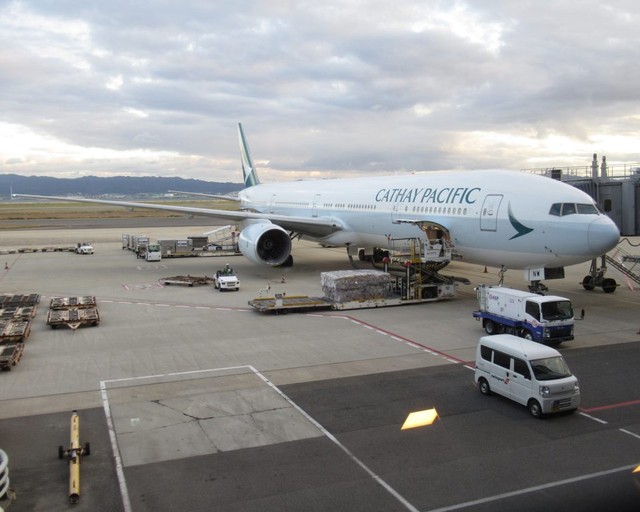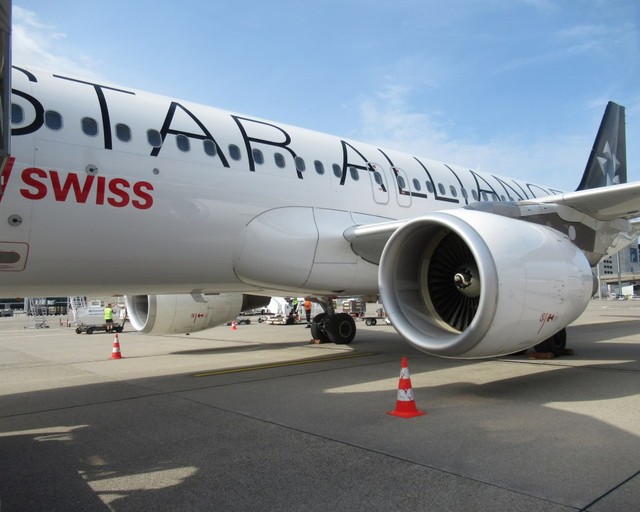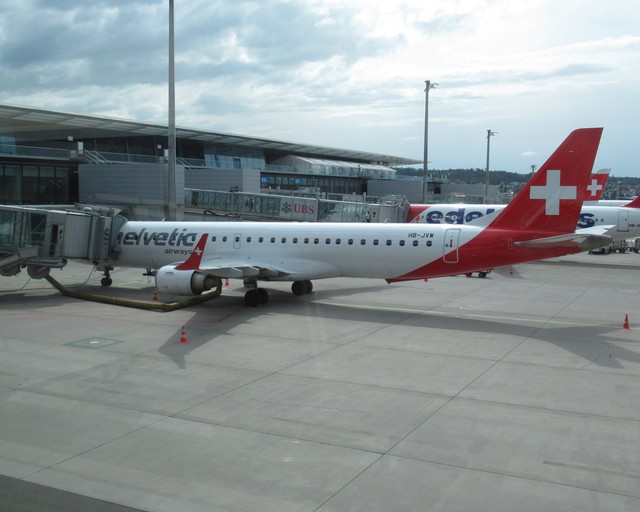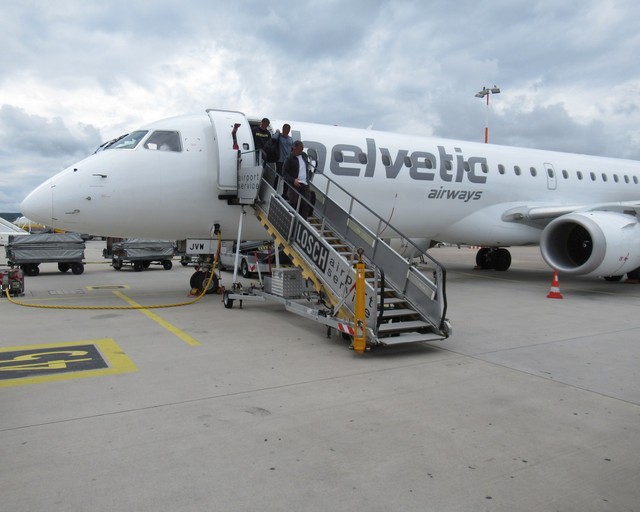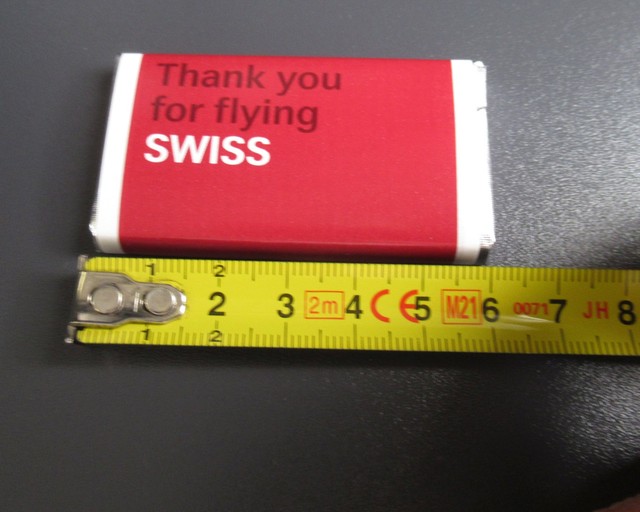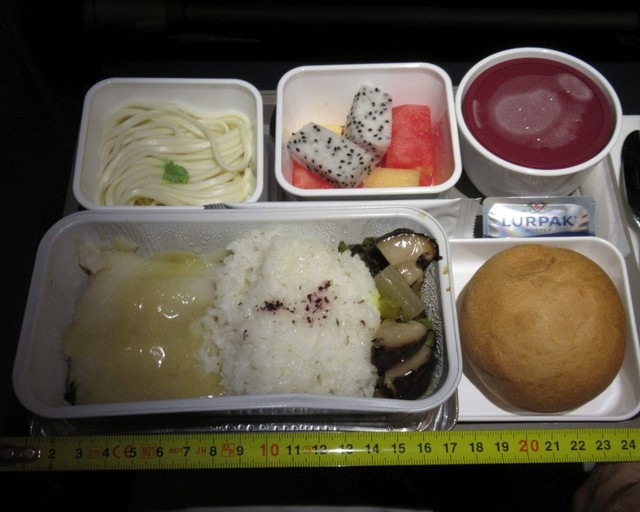This was the return flight of this PEK-CSX flight. I was traveling with a *A Gold member, so you’ll get a full report on the hidden treasures (?) that Air China reserves to its Elite customers.
This FR begins in the car which was driving us to the airport. One day will come when CSX is served by a subway line, probably in the near future, because the Chinese are fast builders, but there were only the pylons of the future line.
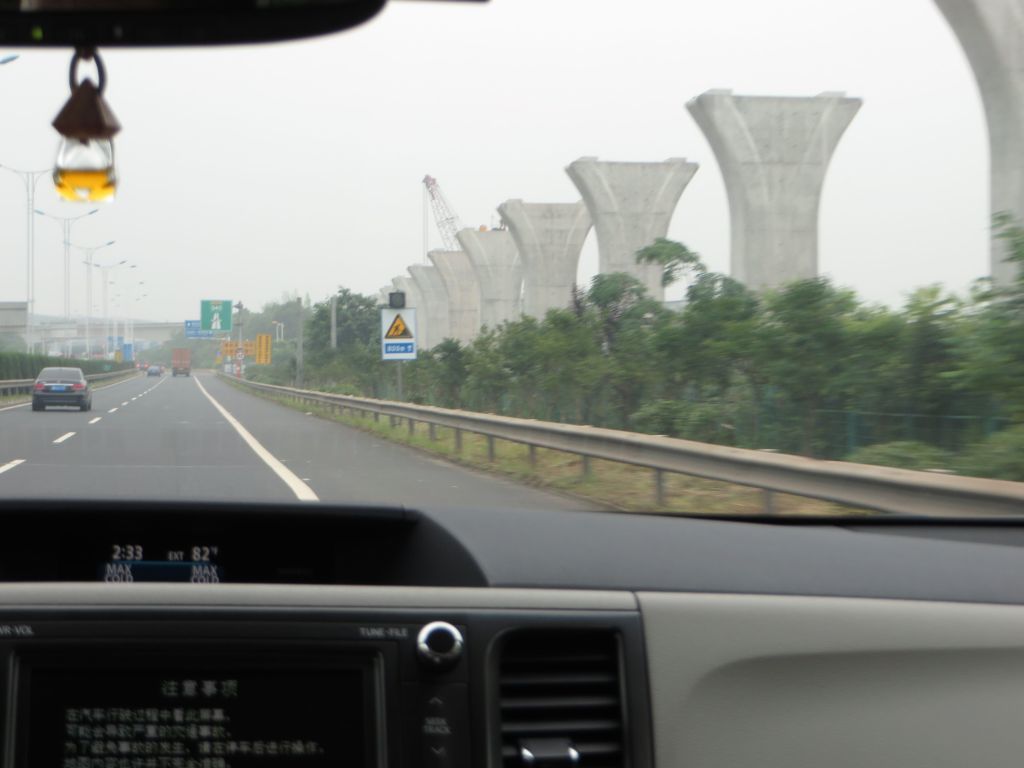
The options before the future line opens are bus or car, and like in PEK, the drivers park on the expressway’s emergency lane, waiting for the phone call of the passengers they came to pick up, rather than pay for parking at the airport.
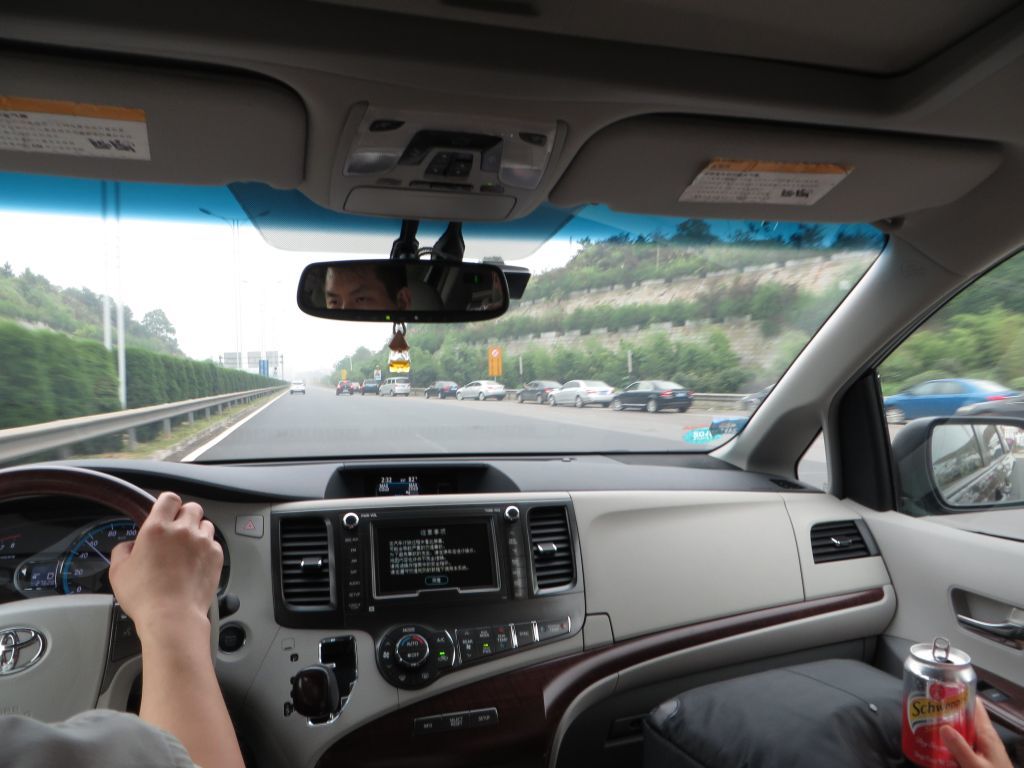
Arrival at Changsha 长沙 Airport: it was written above the terminal in case travelers had a doubt.
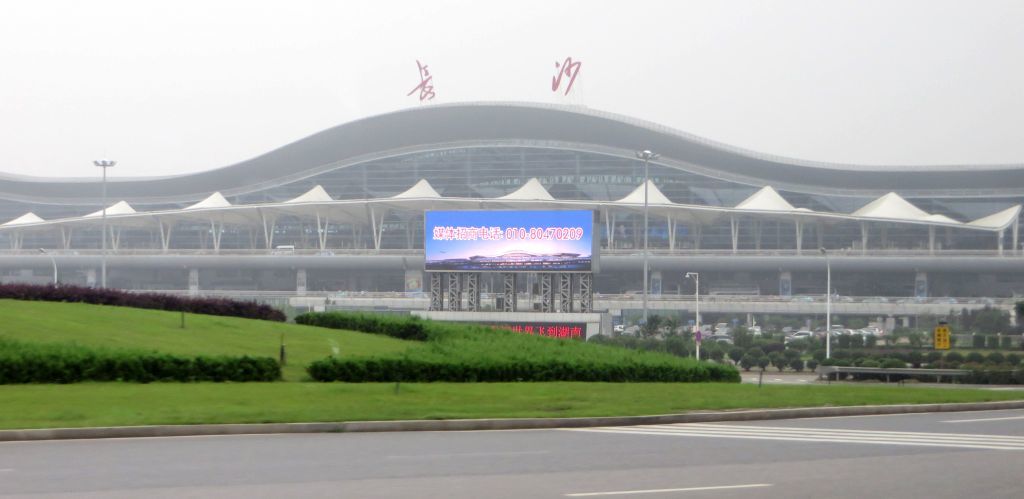
The airport is basically like all other large Chinese airports with a Departure level upstairs (XMN is an exception, where incoming and leaving passengers are not separated).
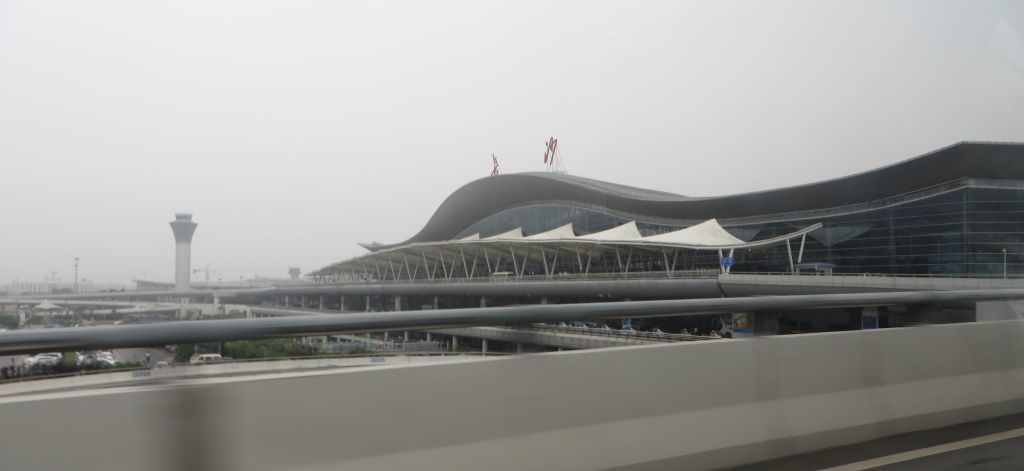
The driver dropped us here
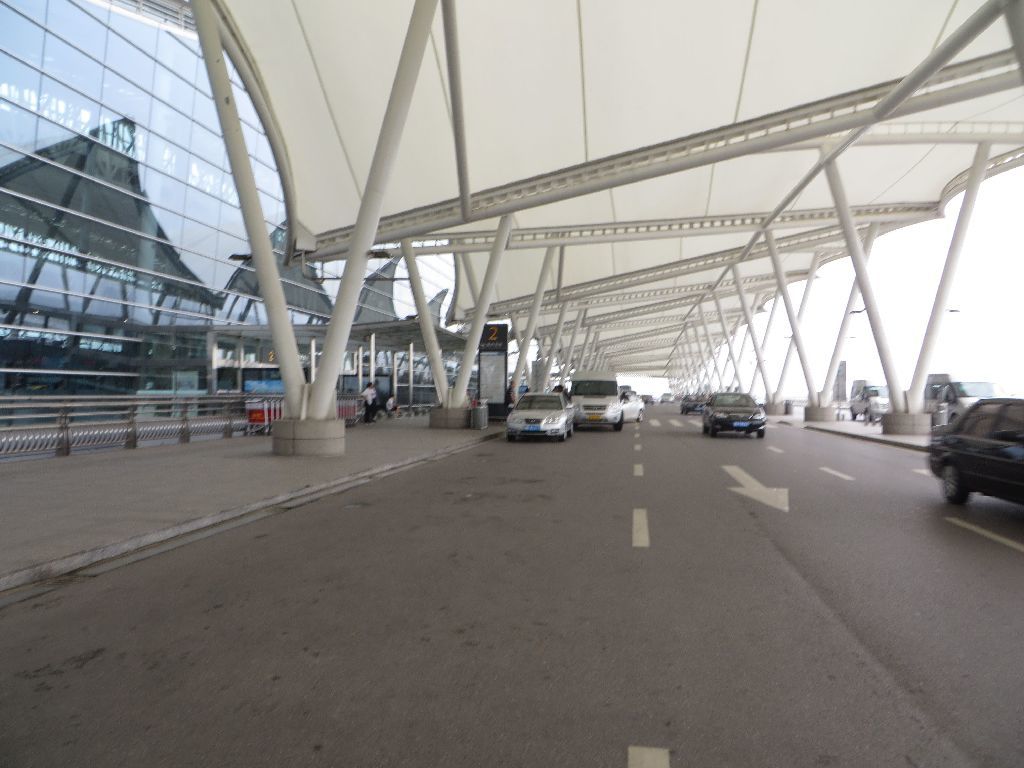
It was 14:36 according to this FIDS, which meant that we had ample time before our 16:05 flight to PEK
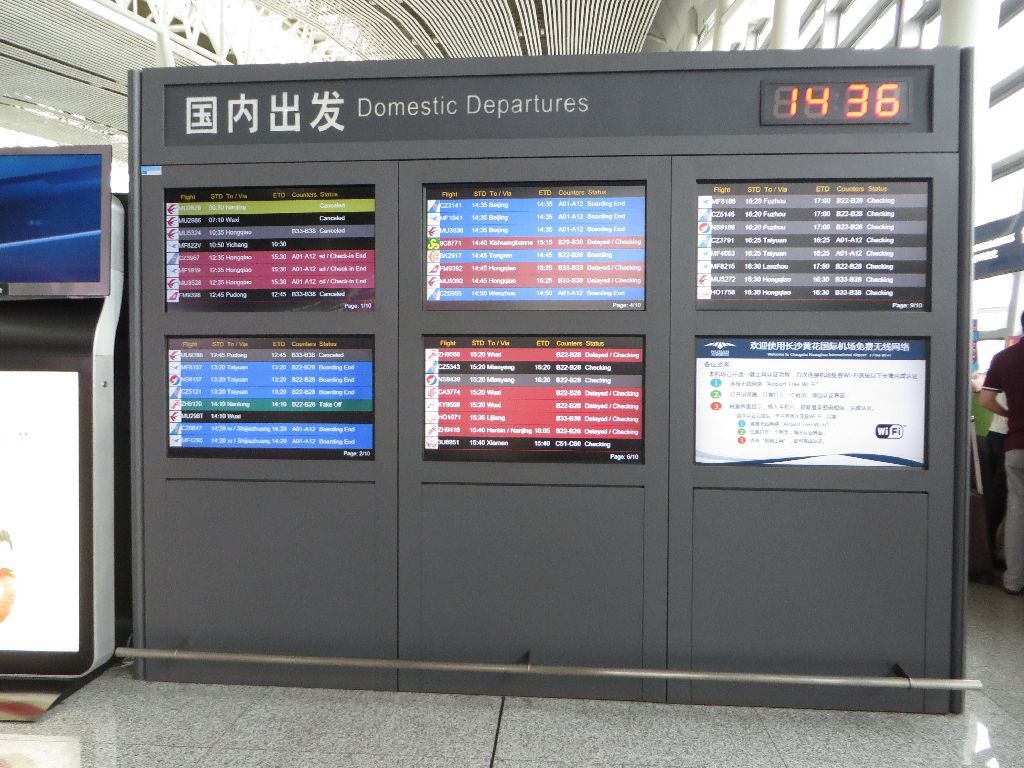
The interior of the terminal landside
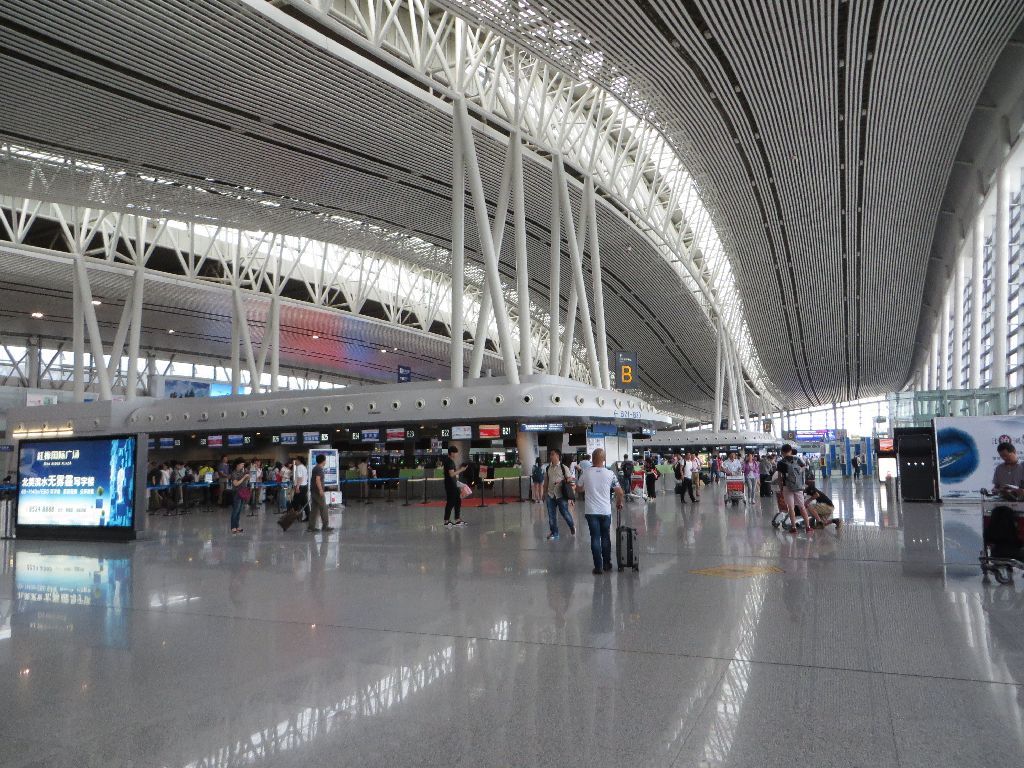
There was a longish line at manual check in counters
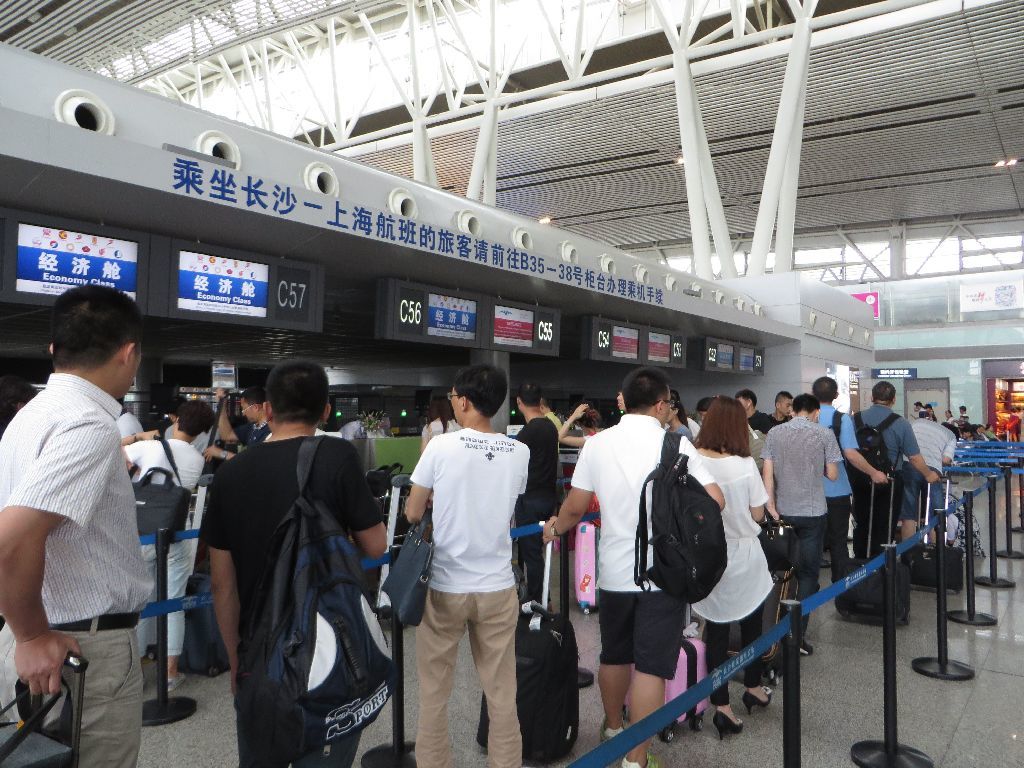
The counters serve indiscriminately the passengers of all these airlines
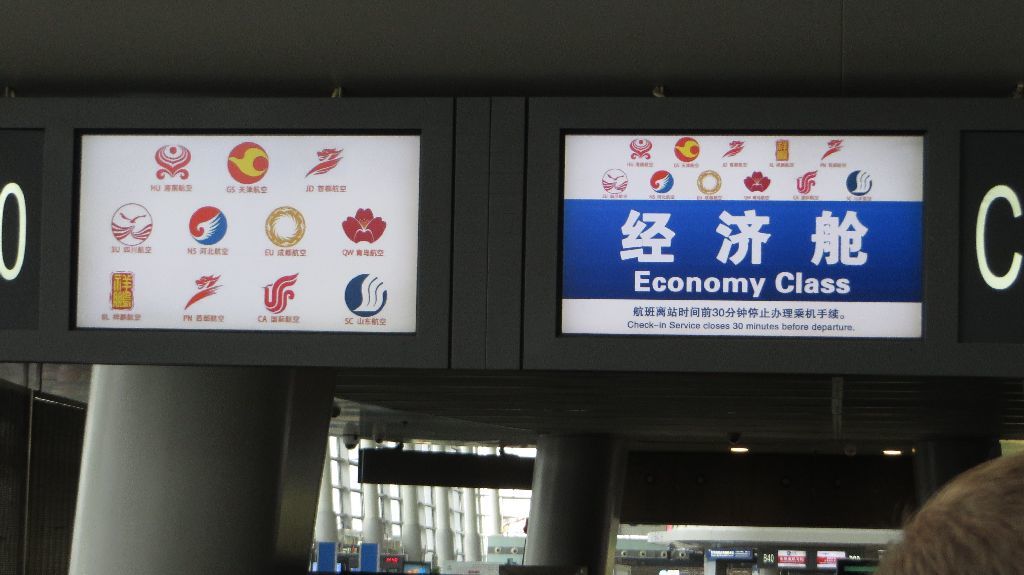
Yes, I could have tried to use these self check-in machines, but I was with a Chinese colleague who was not using them (may be because I wasn’t using them ?)
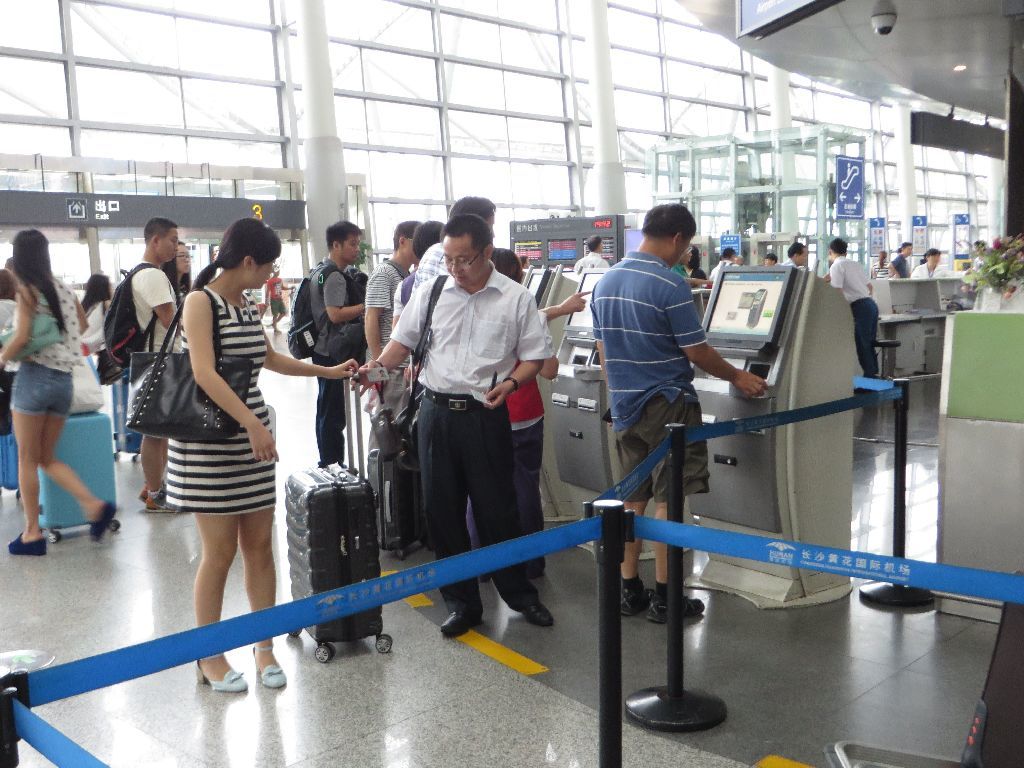
The landside shops in the background
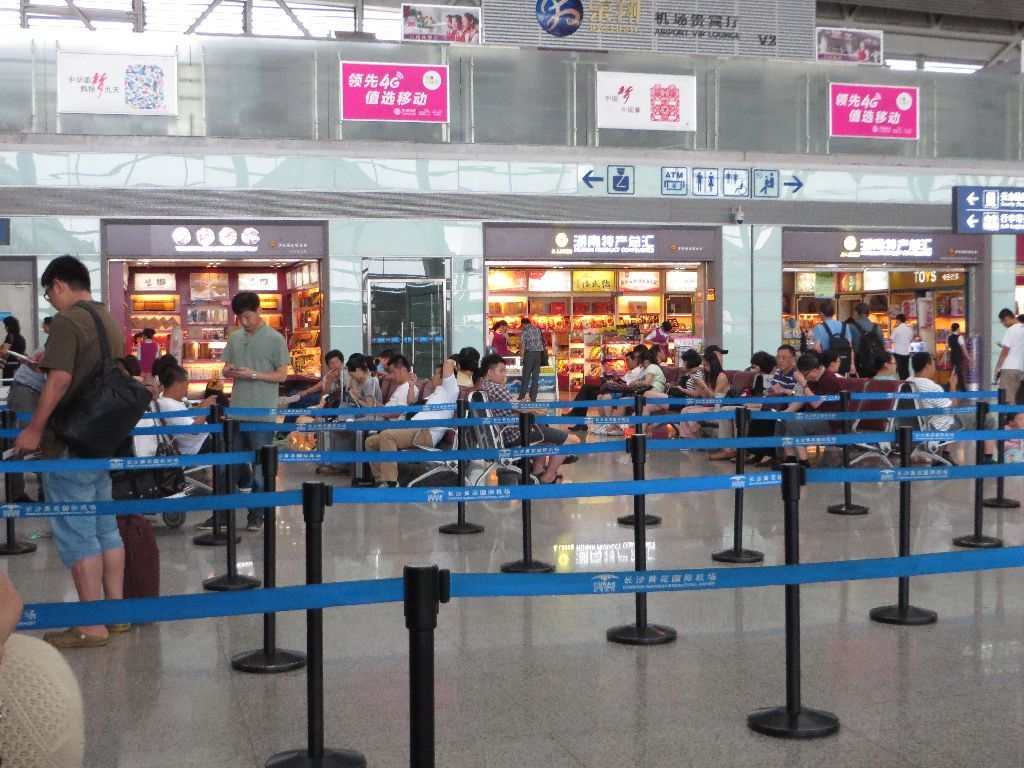
Nine minutes until it was my turn : the wait was moderate
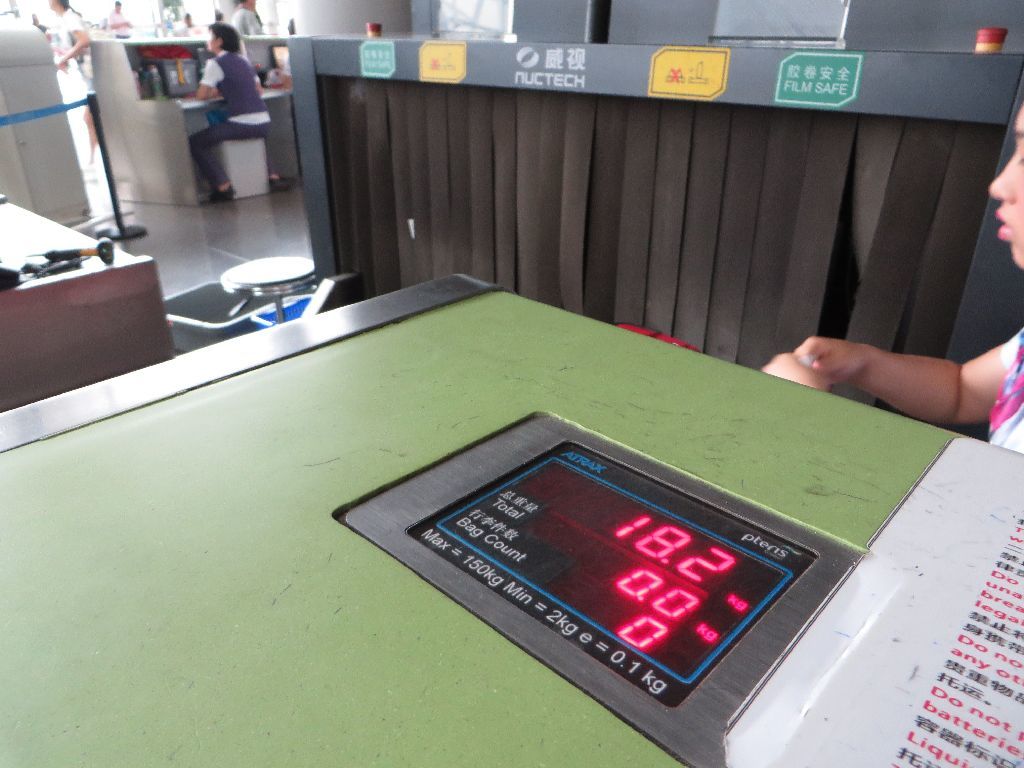
A window seat, whose row number confirmed this would be the twin aisle aircraft announced in my e-ticket.
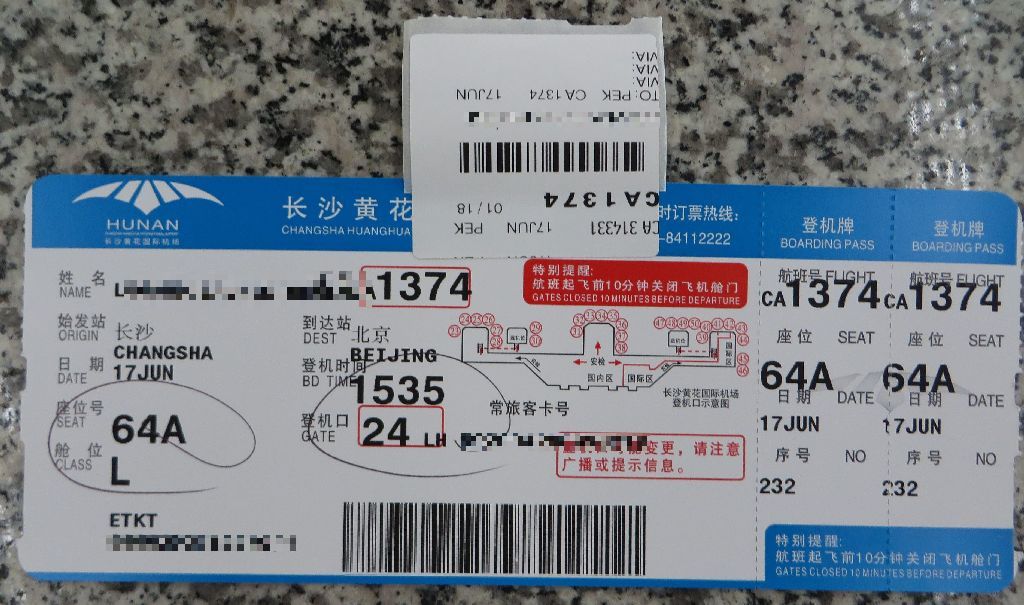
Going towards the security check, where the lines are reasonable too
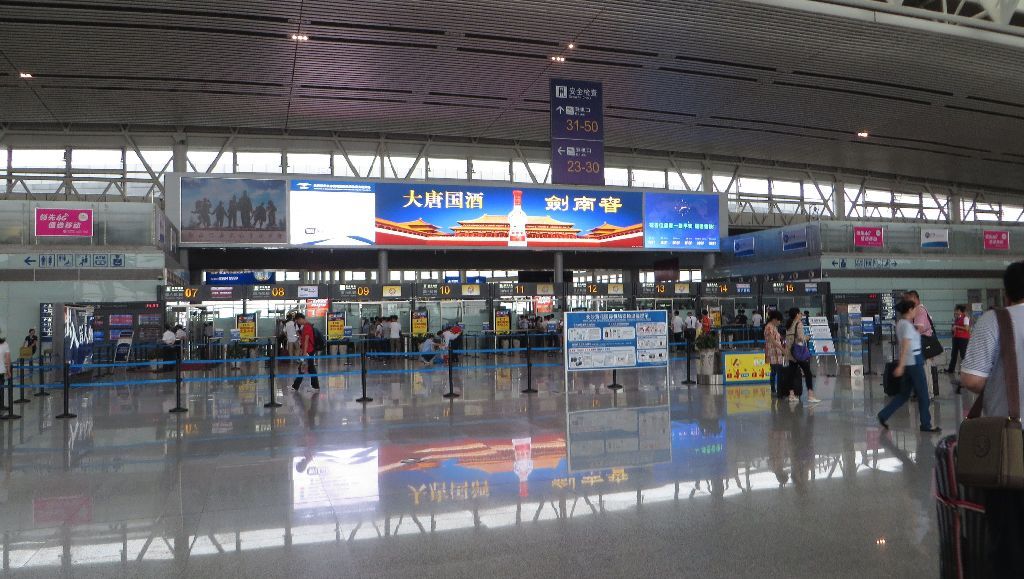
What interested me was the advertising panels above the access to the security check.
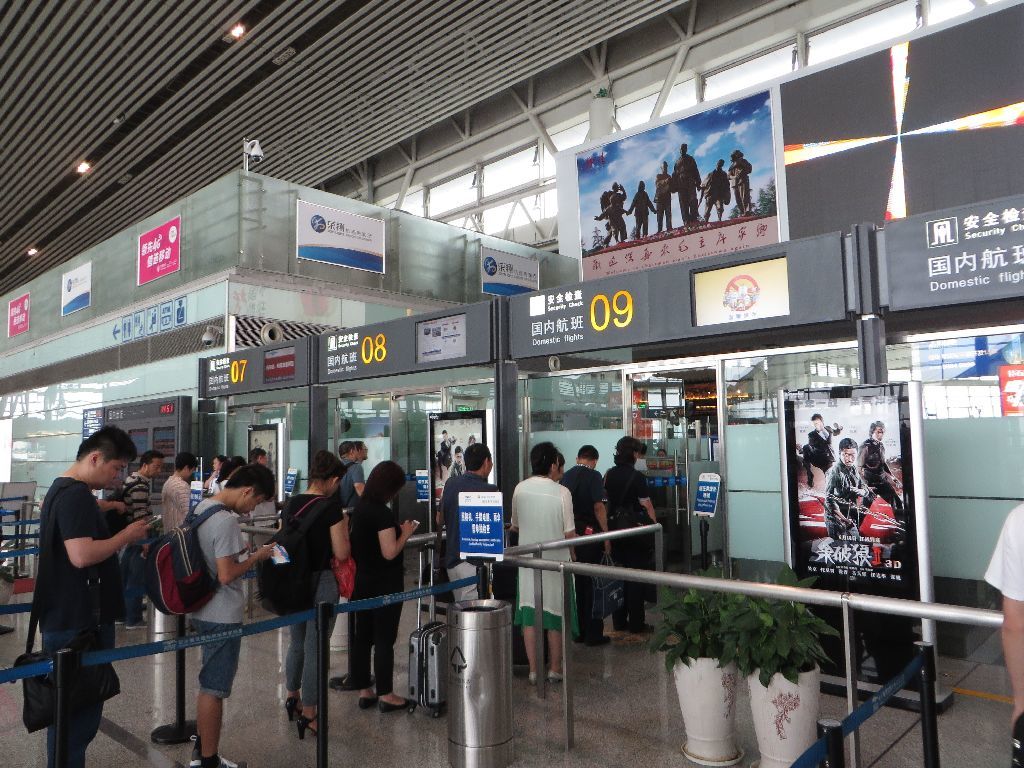
"Welcome to Chairman Mao’s hometown again" : "red tourism" is still active in Hunan, where there are south of Changsha many places associated with the origins of the Communists in China, and first and foremost Shaoshan, where Mao Zedong was born on 26 December, 1893 and which was an important communist base at its beginnings.
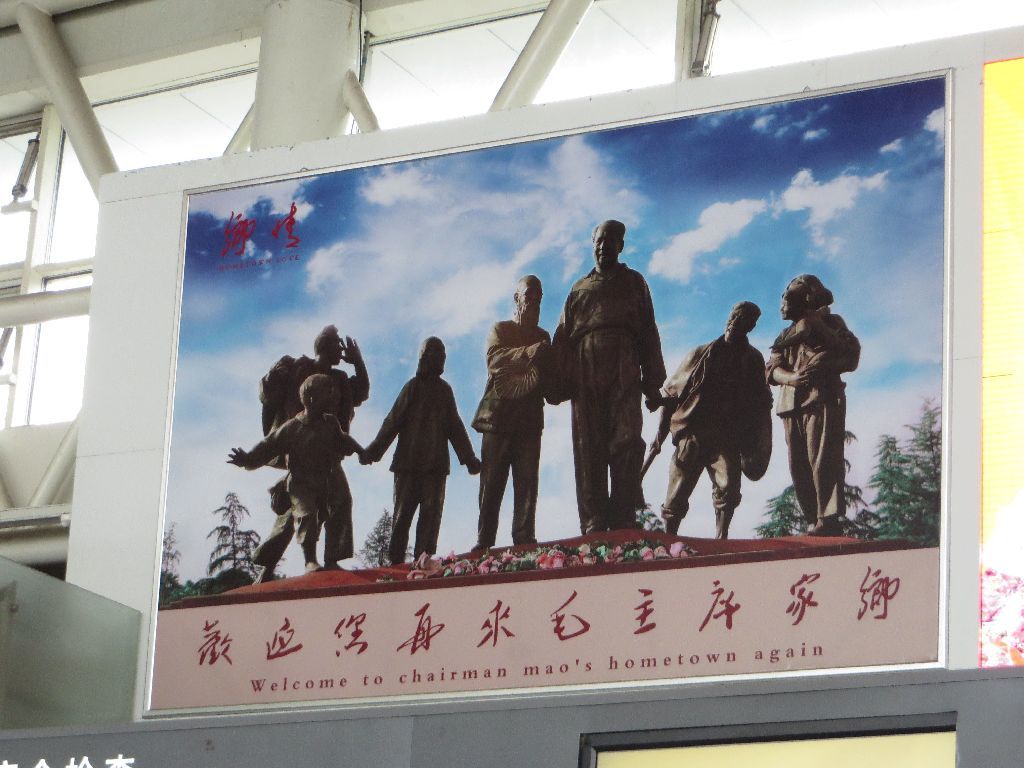
Next to this panel, the screen displays a quote from present president Xi Jingping, …
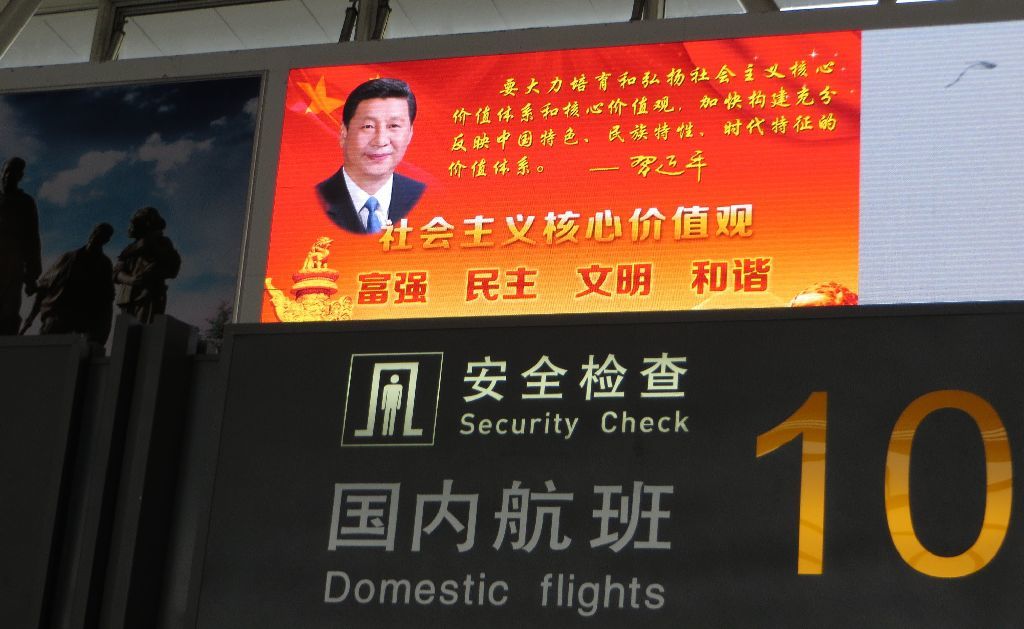
… alternating with advertising, here for an additional flight serving Zhangjiajie 张家界, another major tourist site in Hunan. For avgeeks, it is worth noting that the three daily flights are operated with Xi'an MA60 (see later about this Chinese aircraft) which is completely unrelated with the jet that you can see despite the moiré of the picture.
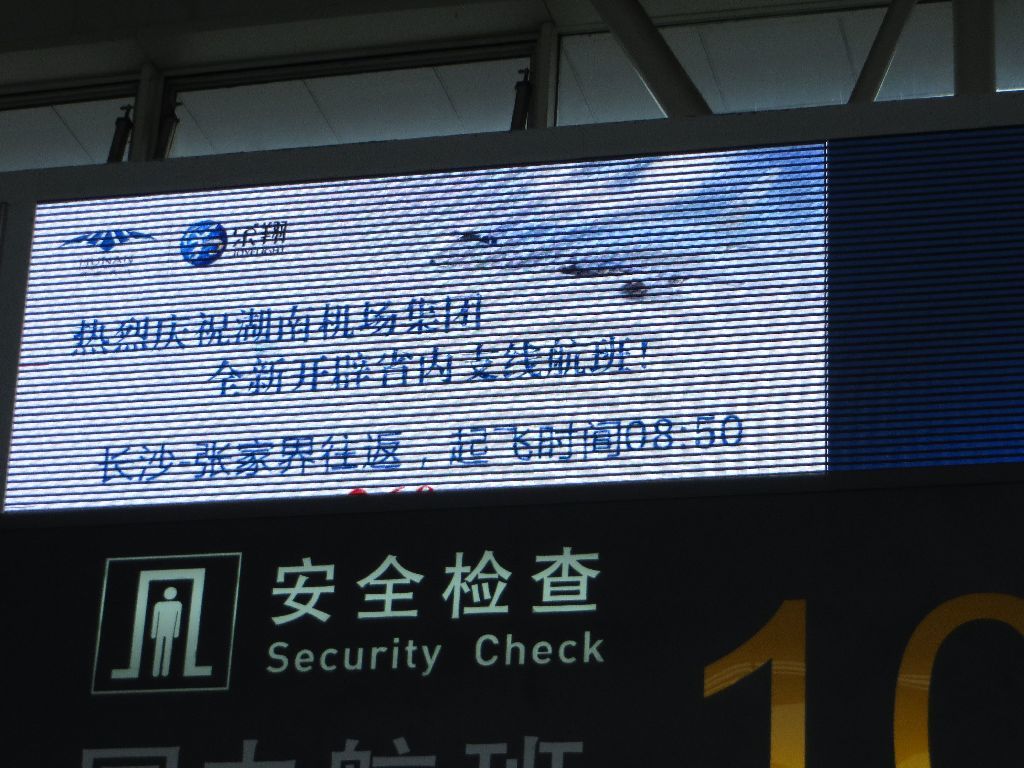
I would have been happy to return to Zhangjiajie, but it was out of scope of this business trip. Zhangjiajie, as you probably know, is this supernatural of rock pillars, most of the time shrouded in mist, which inspired the decors of the movie Avatar.
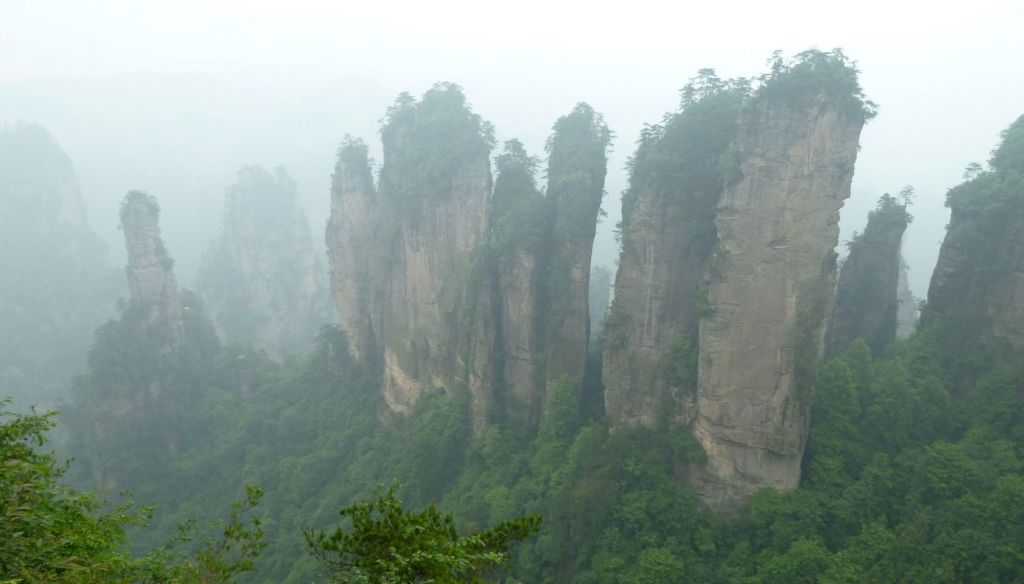
The sources which I found do not agree about the height of this natural bridge : 300 m, 350 m, 400 m ? It is very high anyway, seen from across the ravine or from the trail here on the right.
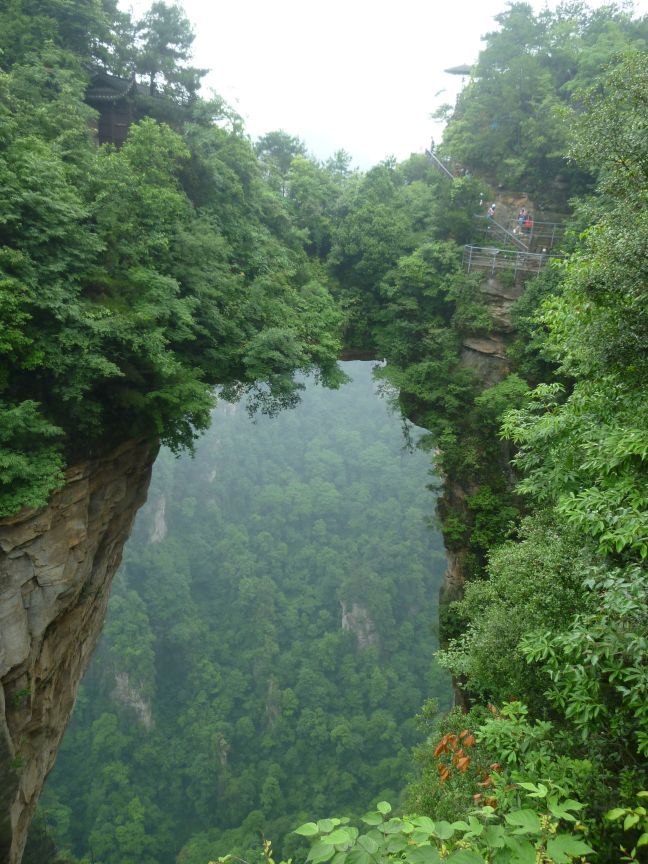
I am drifting out of the topic… I did not take the flight to Zhangjiajie, and after a hassle-free security check, there was a 390 m walk to the furthest gate, which was that of our flight, according to an unchallengeable source. That was not even 1% of a marathon, and therefore not a challenge for me (neither for my colleagues, actually).
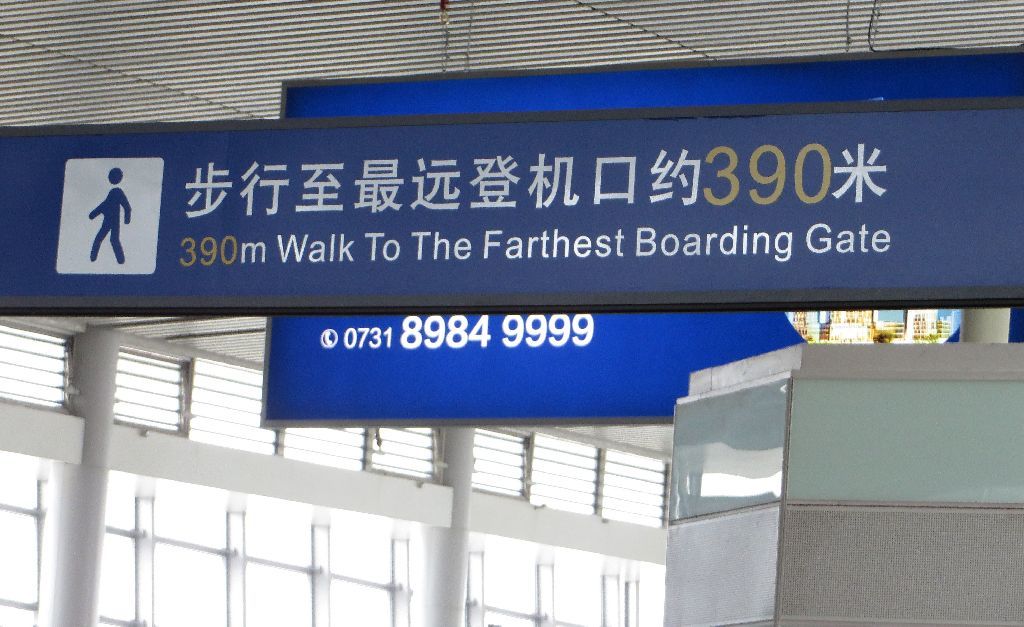
This time again, I was with my *A Gold colleague, who invited me again in the lounge. It was not Lounge A here,
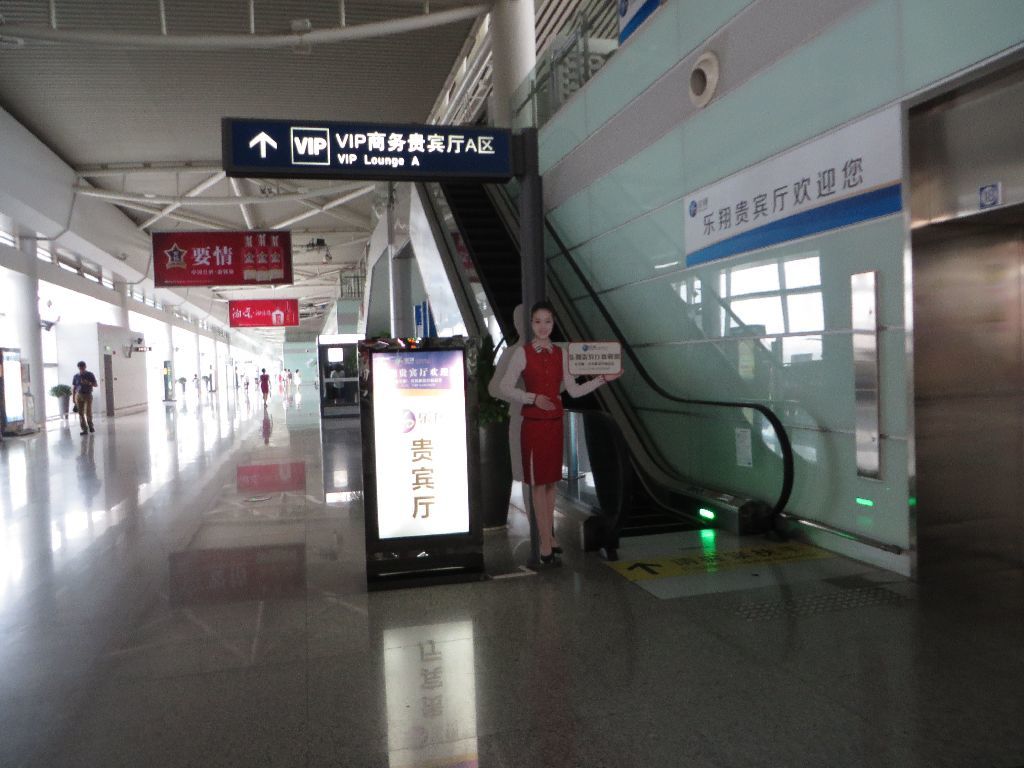
… but Lounge B this way (the staff at the Lounge A welcome desk did not let us in; neither of us understood why)
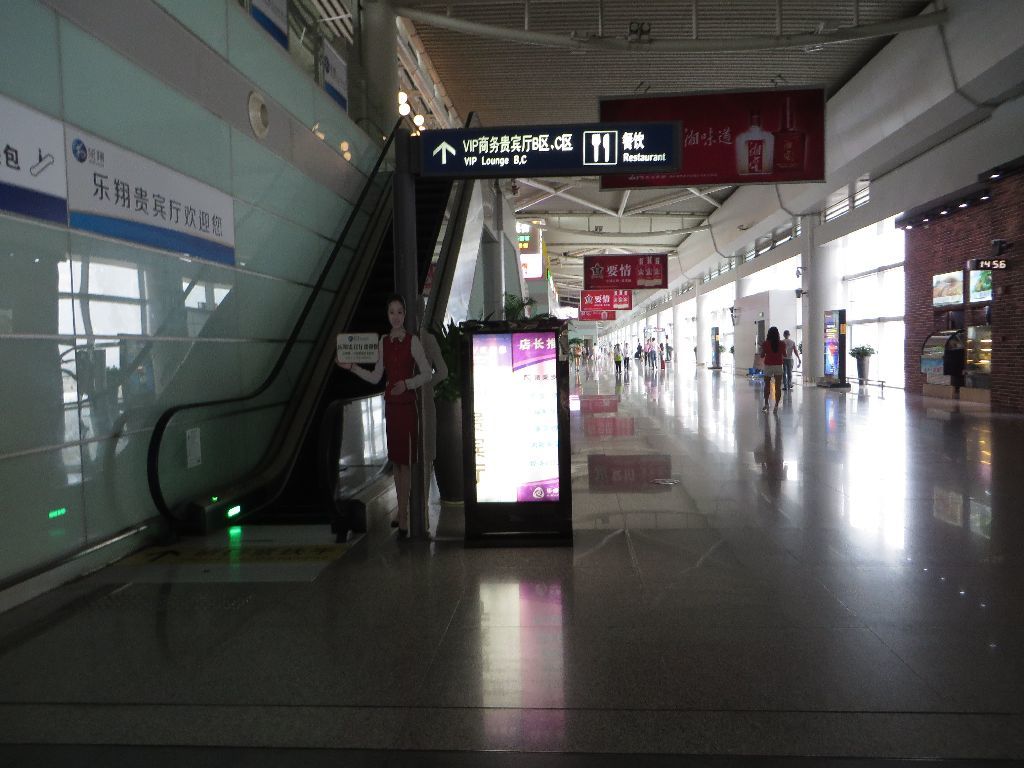
Going past the CZ lounge which was of course was not for us
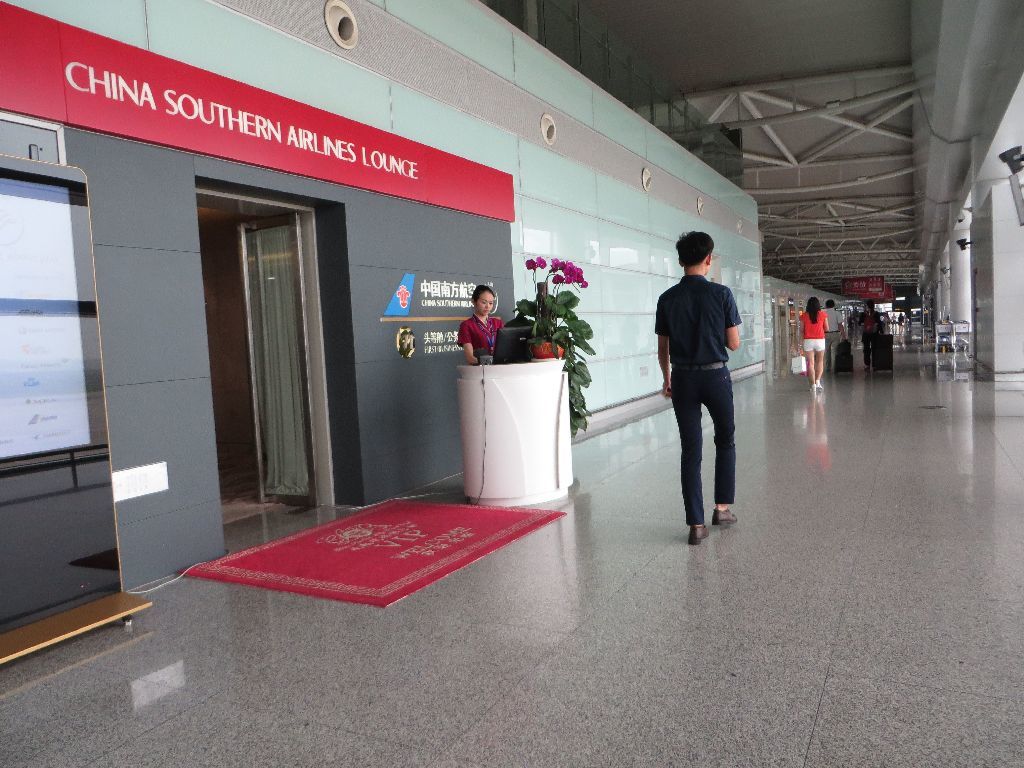
We keep going along these corridors
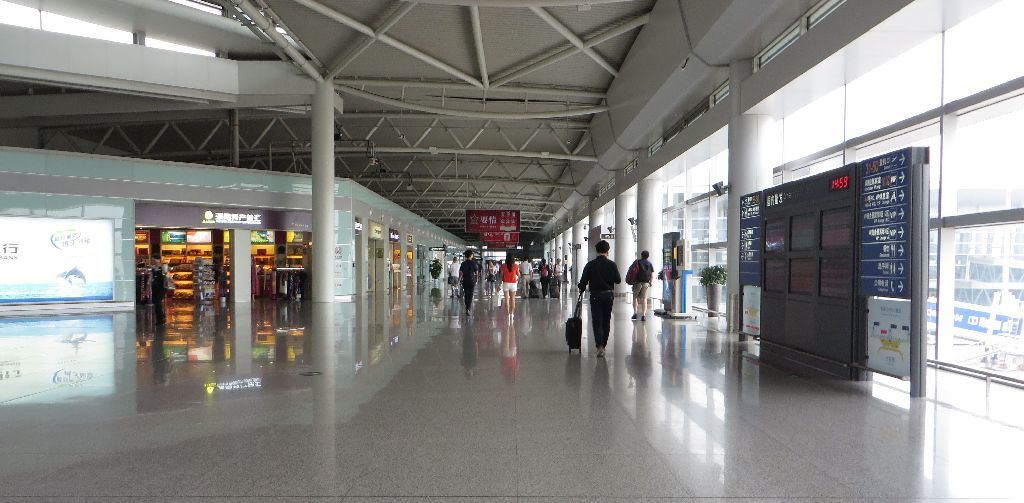
… which gave me an opportunity to grab a few aircraft on the tarmac : MU and CZ A320
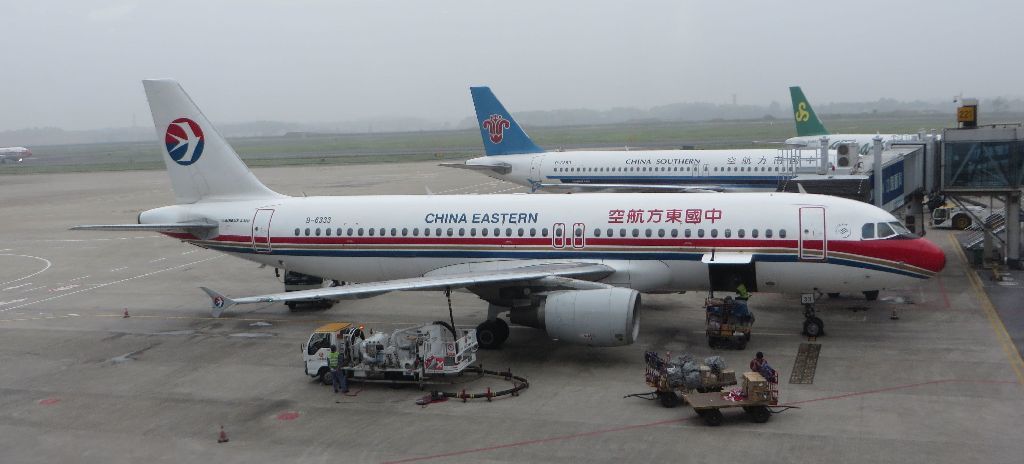
Arrival of a Xiamen Air 737
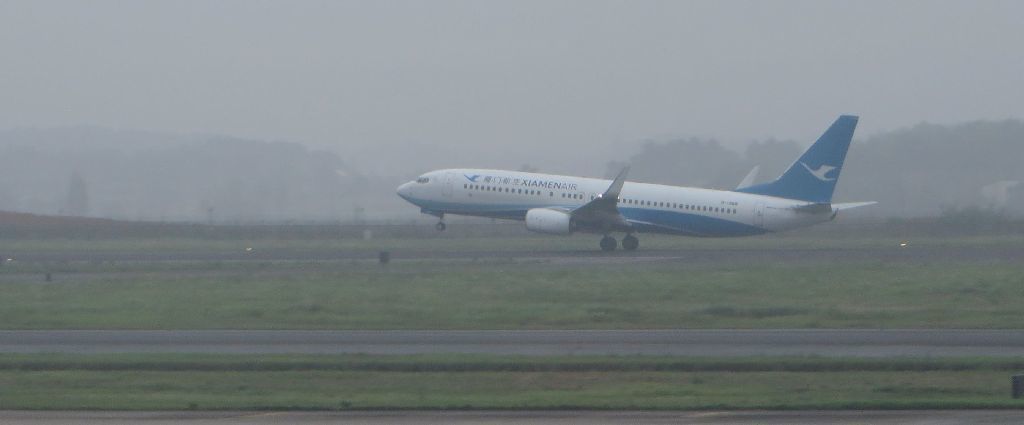
Push back of a Sprint Airlines A320
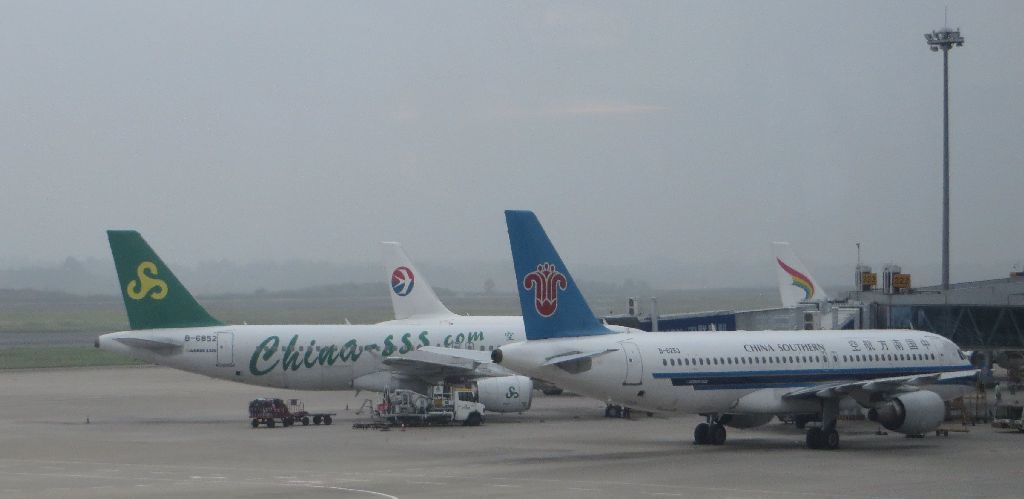
Plane spotting was over : my *A Gold had reached the CA lounge and I needed to be with him to be admitted in.
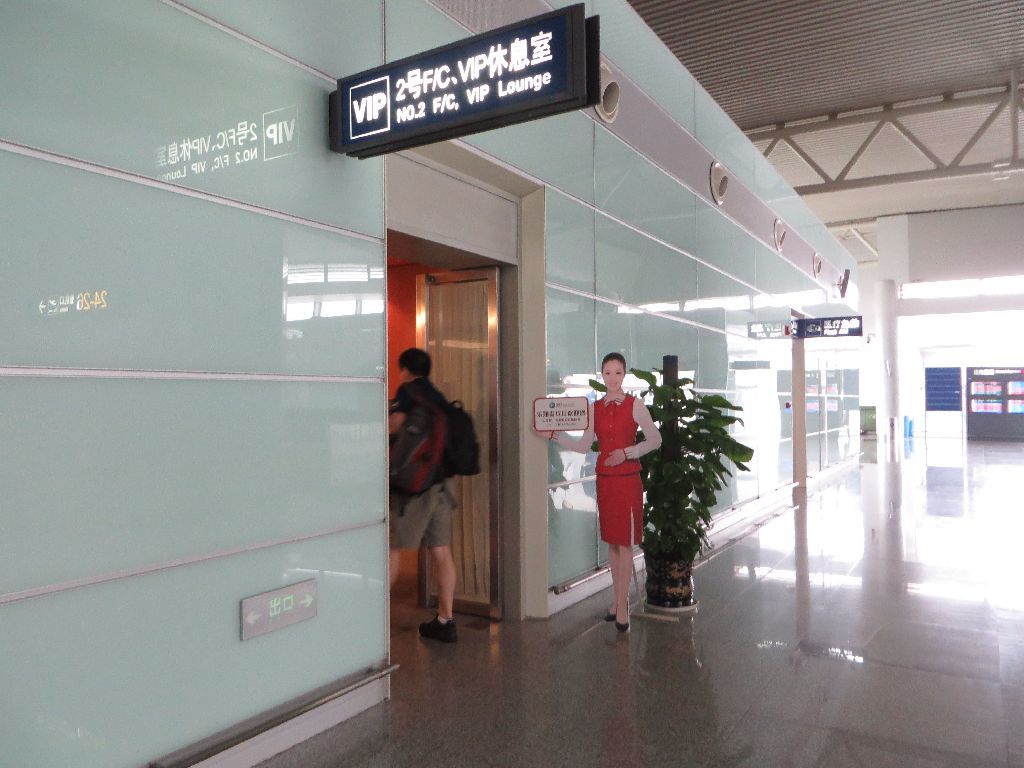
My first impression was not favorable, and it would not change for the better.
There were no windows (as expected from the location), and it was small: apart from the catering tables and the welcome desk which were beyond this picture’s limit on the left, and a few armchairs on the right, you see the entire lounge in the panoramic view.
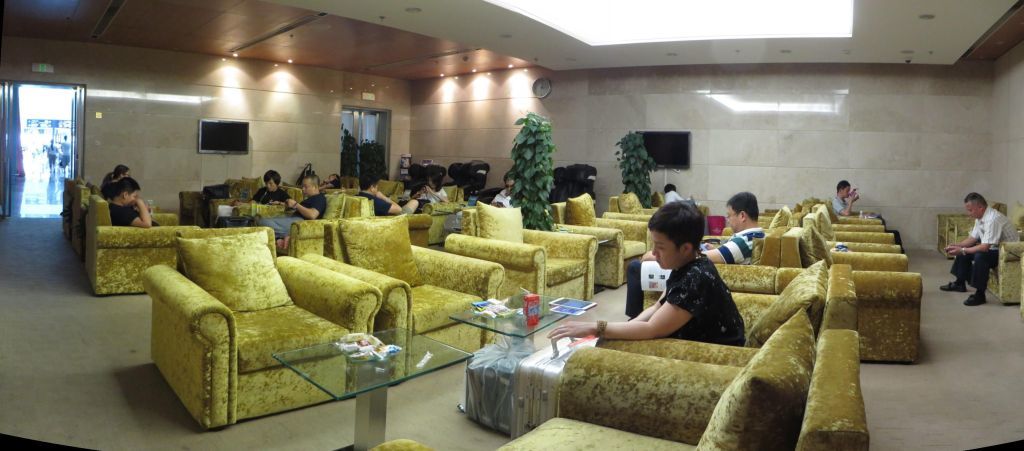
There was a fountain dispensing water which was either hot, very hot or boiling, but no cold water which is traditionally considered as bad for your health in China.
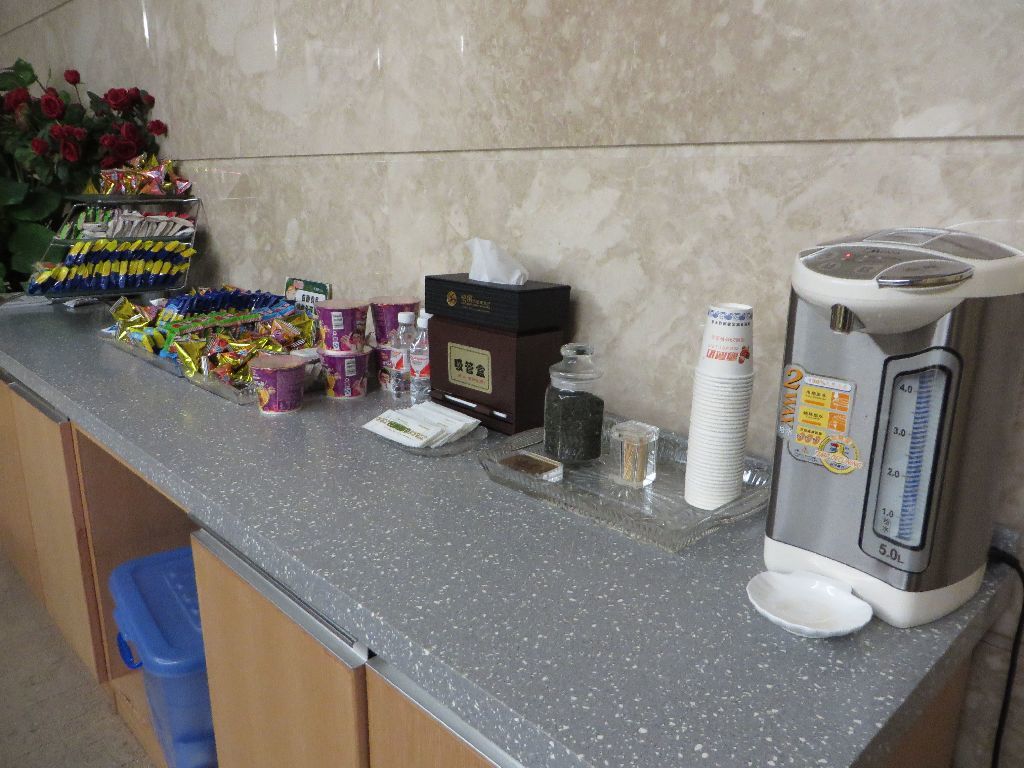
You had the choice of 65°C, 85°C or 98°C water
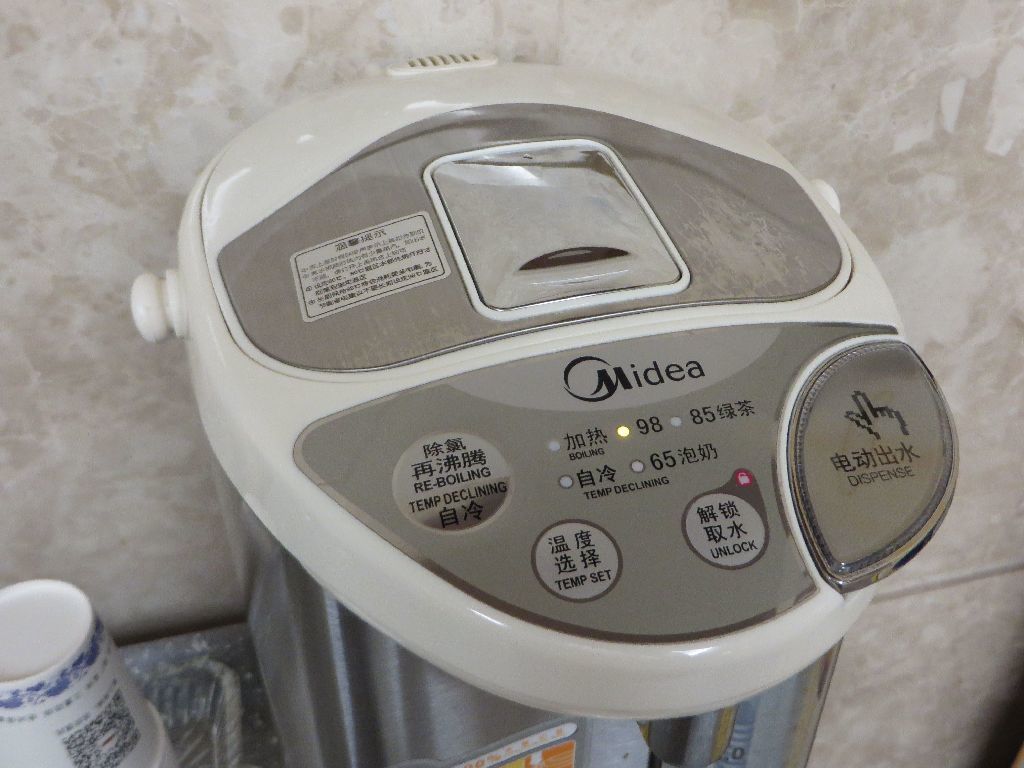
And a glass jar containing green tea, with cardboard cups which were to thin to handle when filled with boiling water. No coffee ?
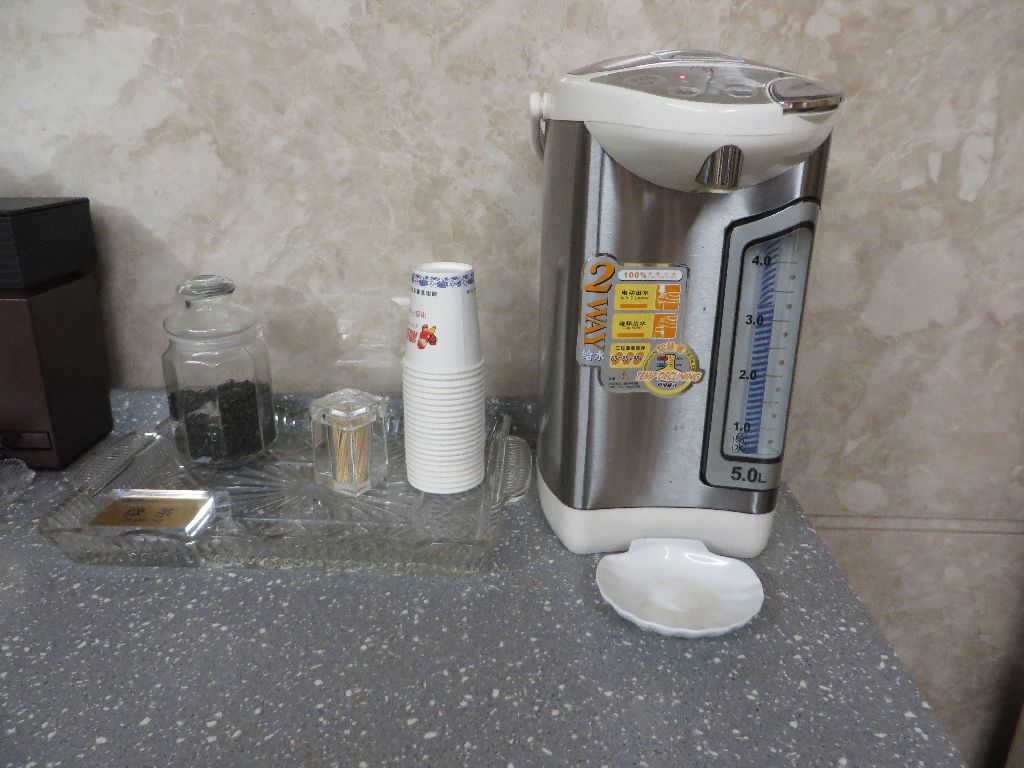
I had too check twice, and found in the foreground the entire supply of this lounge : 5 portions of instant Nescafé. Not black coffee, but the awful junk called “2+1 mix”, which contains instant coffee, powdered milk and sugar, that I have seen in China only. I took this picture just before using 20% of the total lounge offering. A defense lawyer would say that since I was the only one to take one, there was five times more than needed.
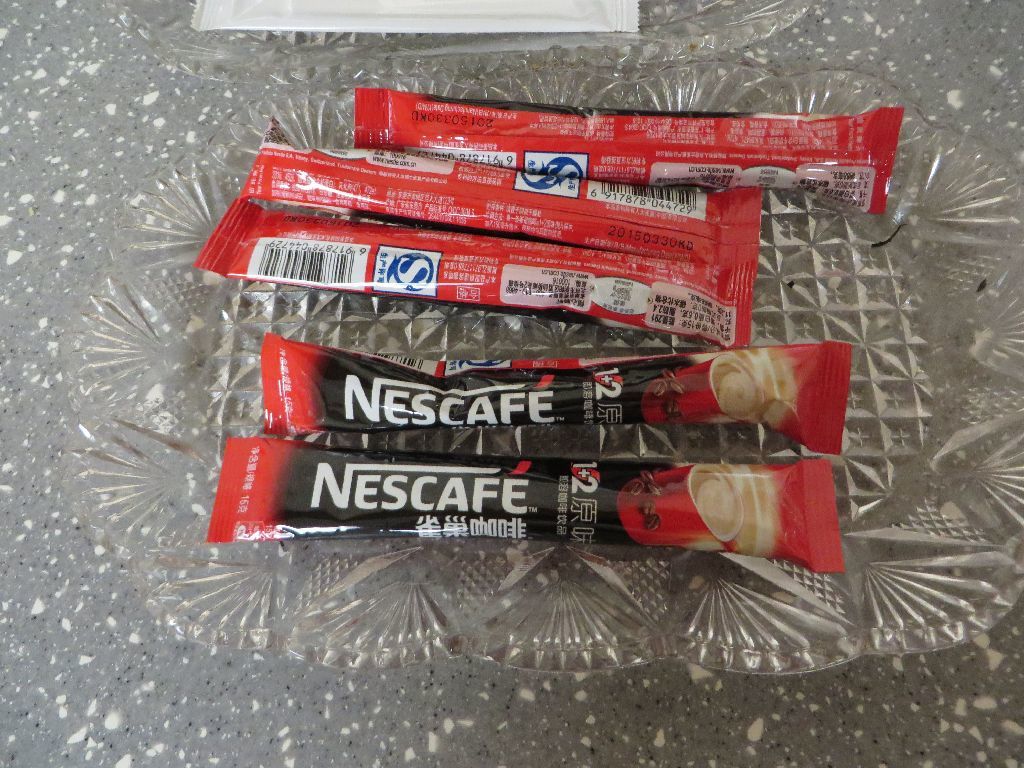
The food offering was on par with the lounge’s standards : this was the entire offering
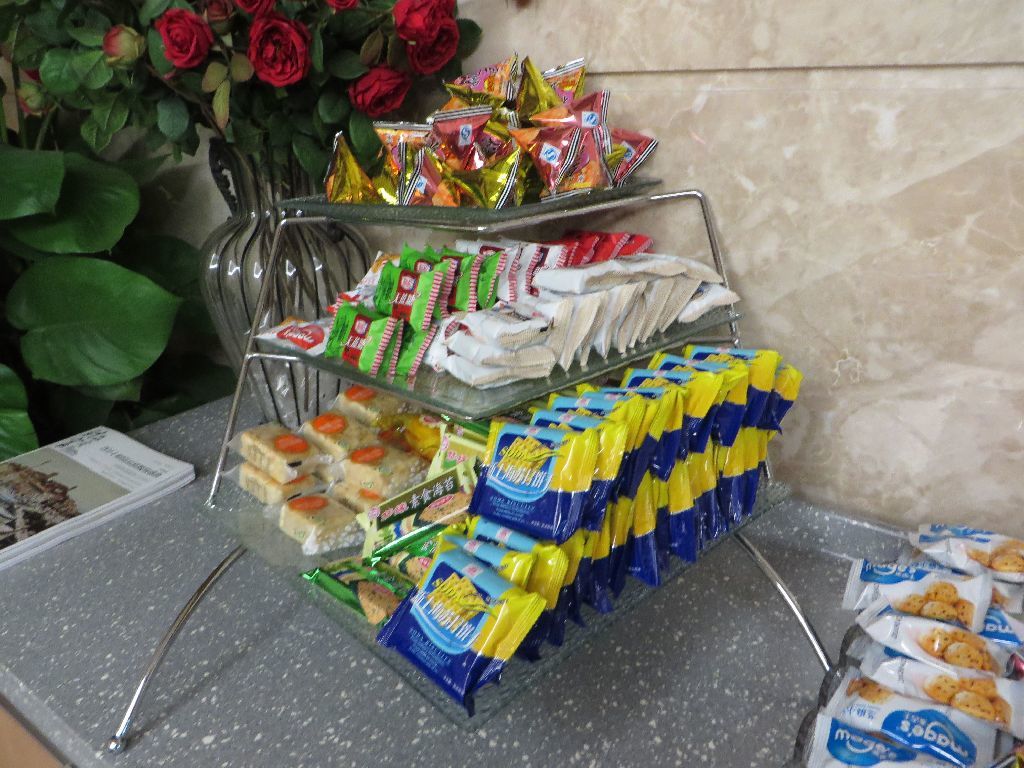
Alcohol ? 没有 (
[méiyǒu] = "There is none", an essential expression in backwaters Mainland China)
Only these drinks which are probably difficult to find outside China, apart from the green ones, which contained green tea (绿茶).
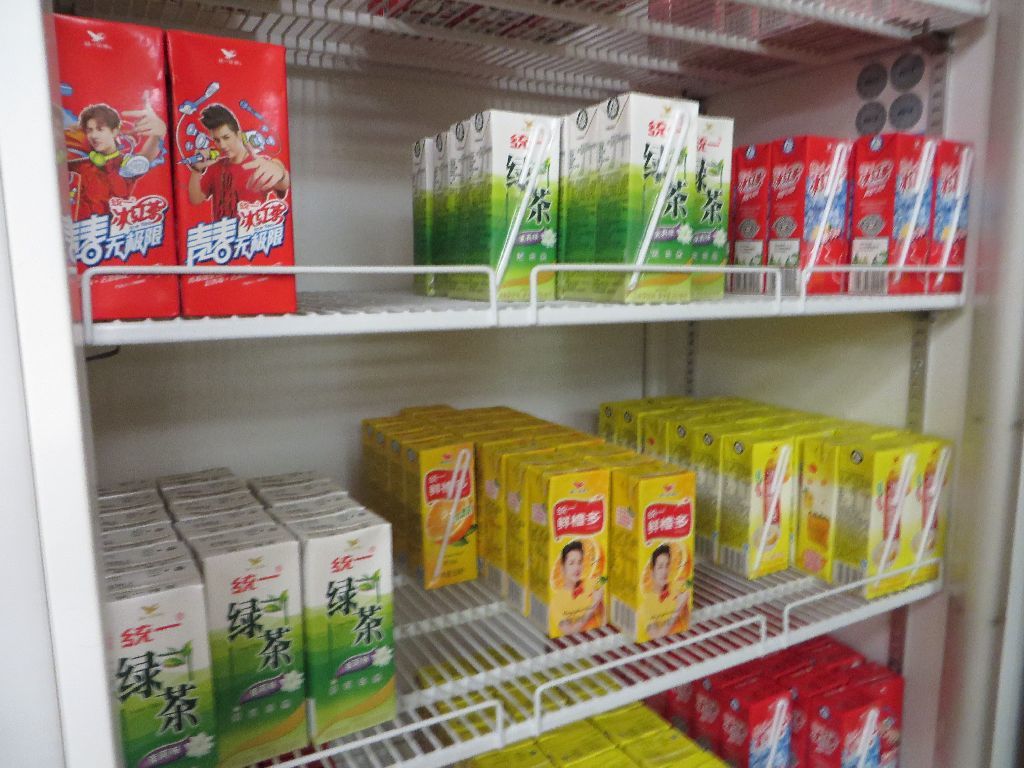
Newspapers, even in Chinese only ? 没有 = there is none
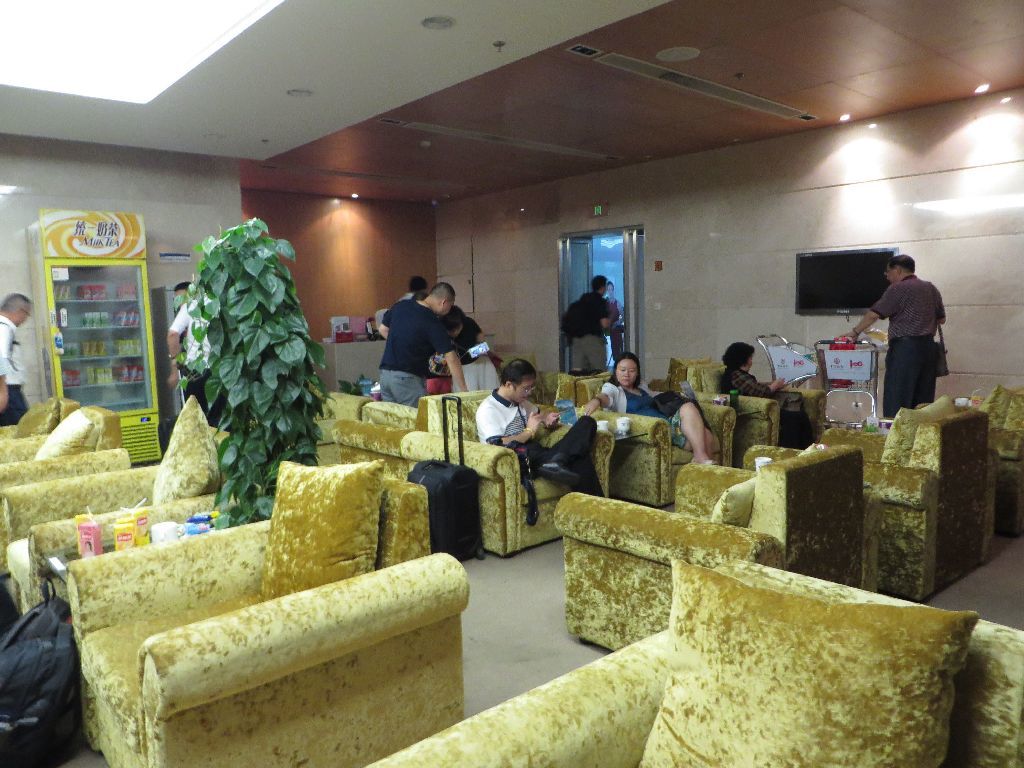
An internet access ? 没有 (do you need a translation ?)
I tried the airport wifi, with the code received on my colleague’s Chinese cell phone, but it failed. I used his pocket wifi, but that does not count as a lounge internet access.
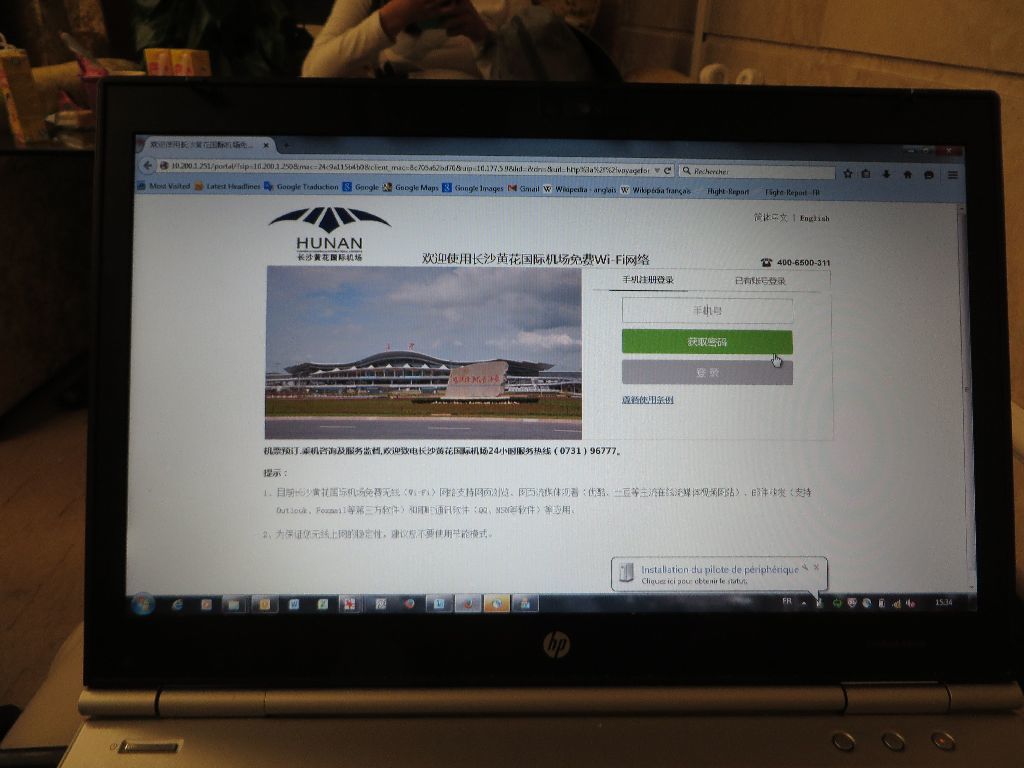
Power ports ? OK, there was an extension cord here, and this was the sole area where passengers could have power. It was the reason why I chose this seat and no other. It was somewhat jury-rigged, and it was a good thing that there was not much demand for electric power.
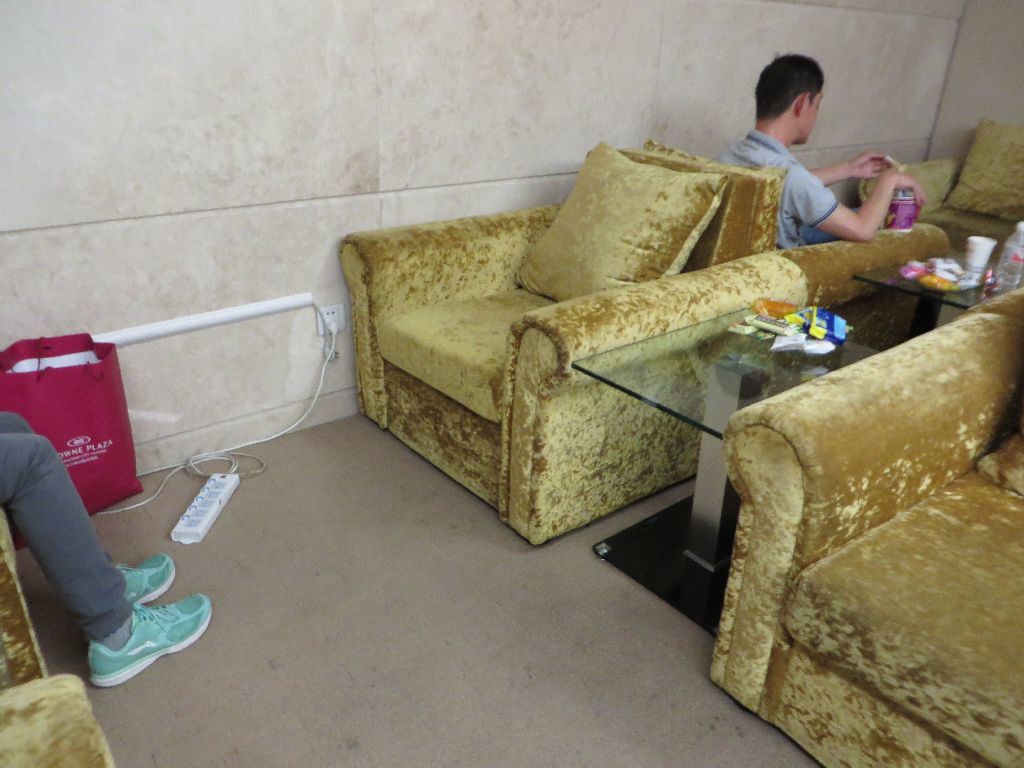
Toilets ? 没有, it was necessary to leave the lounge and go to the ordinary airside ones. They were clean and I had no issue with that. And really, the short walk to reach them was not a problem either.
The staff at the lounge welcome desk asked me which was my flight, and told me that I had plenty of time. I knew it too well.
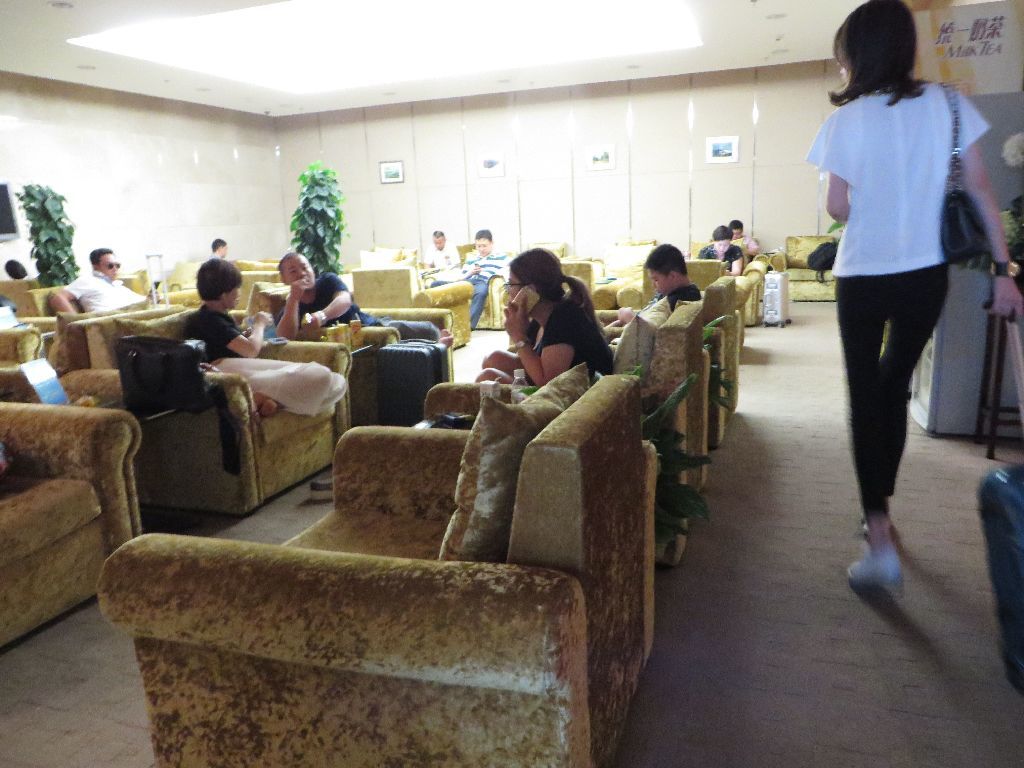
There was a a selection of sweets on the glass table, the same which were in the catering area. This too brought zero credit to the lounge which was not going to collect many in my rating.
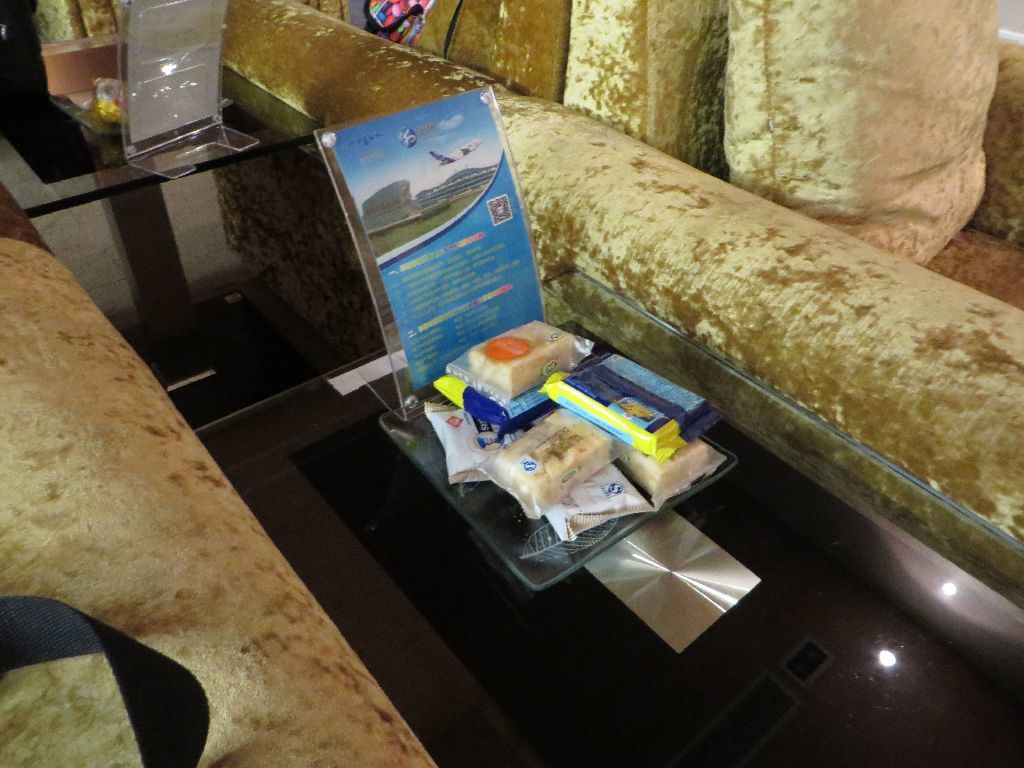
All the more that my visit to this lounge was going to be longer than expected, because we had the usual messages on the PA system of delay "due to air traffic control” of the flight to Beijing. Messages for this flight and for other flights, which as usual in China were repeated continuously without providing any new piece of information. That is the double penalty when your plane is late in that country: you wait, and get flooded of tiring messages telling you again and again that you should wait, in English and in Mandarin.
Ladies and gentlemen, we regret to announce that Flight CA1374 is delayed due to air traffic control. Please wait for further announcement.
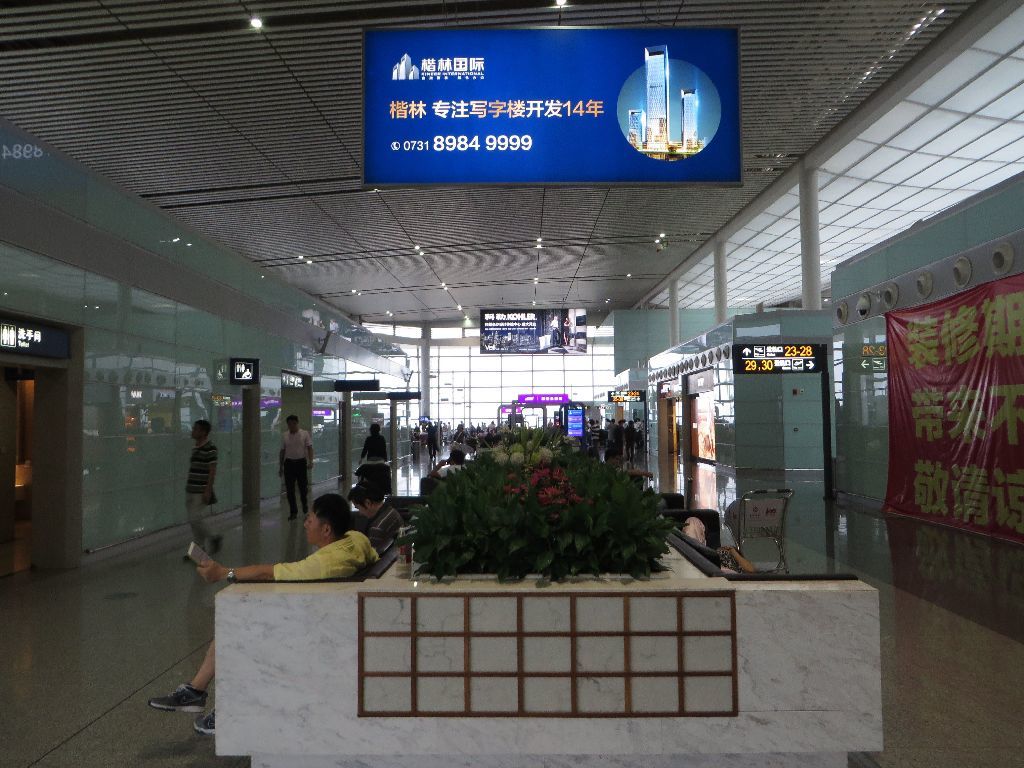
When the staff of the welcome desk announces the boarding of the flight to PEK, two thirds of the passengers rise. It was already ETD+50’ when I took this picture: the punctuality of this flight was going to be typically Chinese.
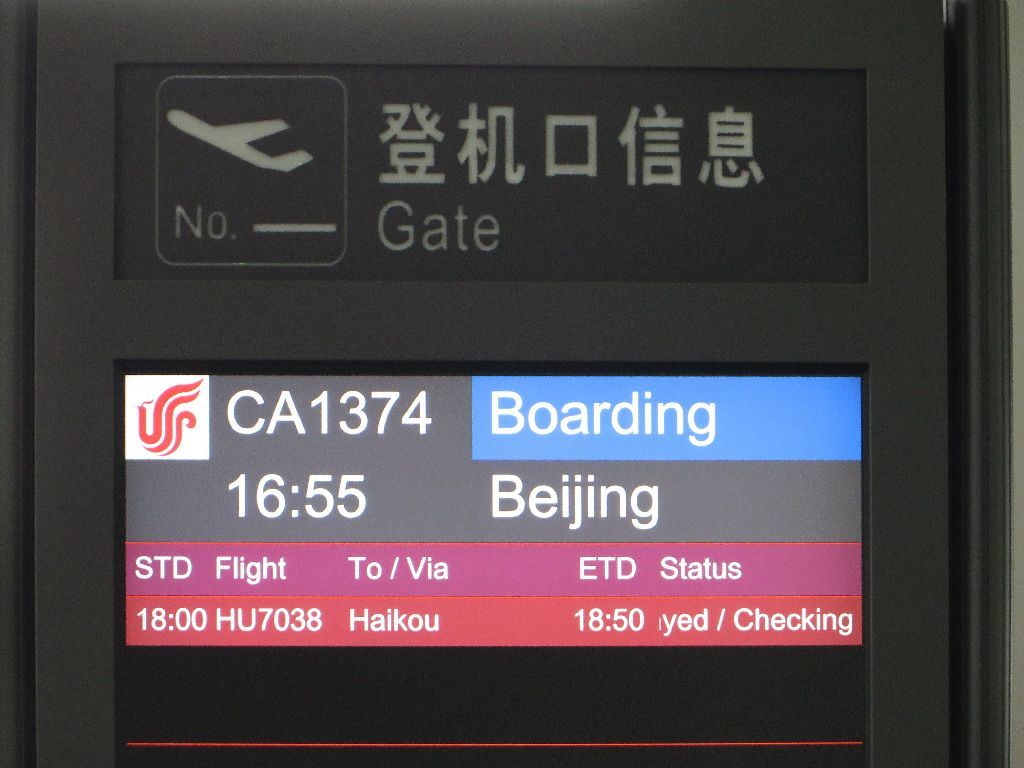
Flight CA1374 was indeed operated by a 333
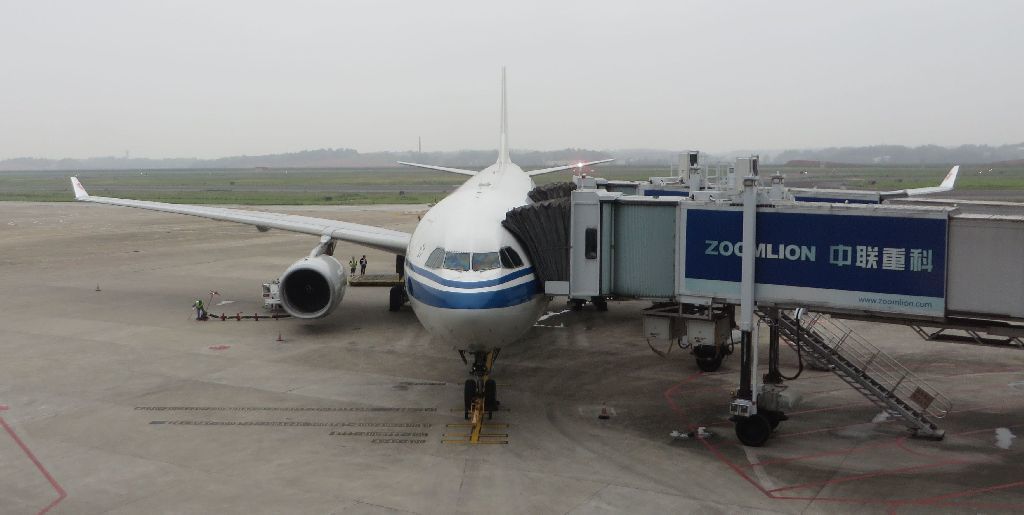
For registration number addicts, she was B-6530
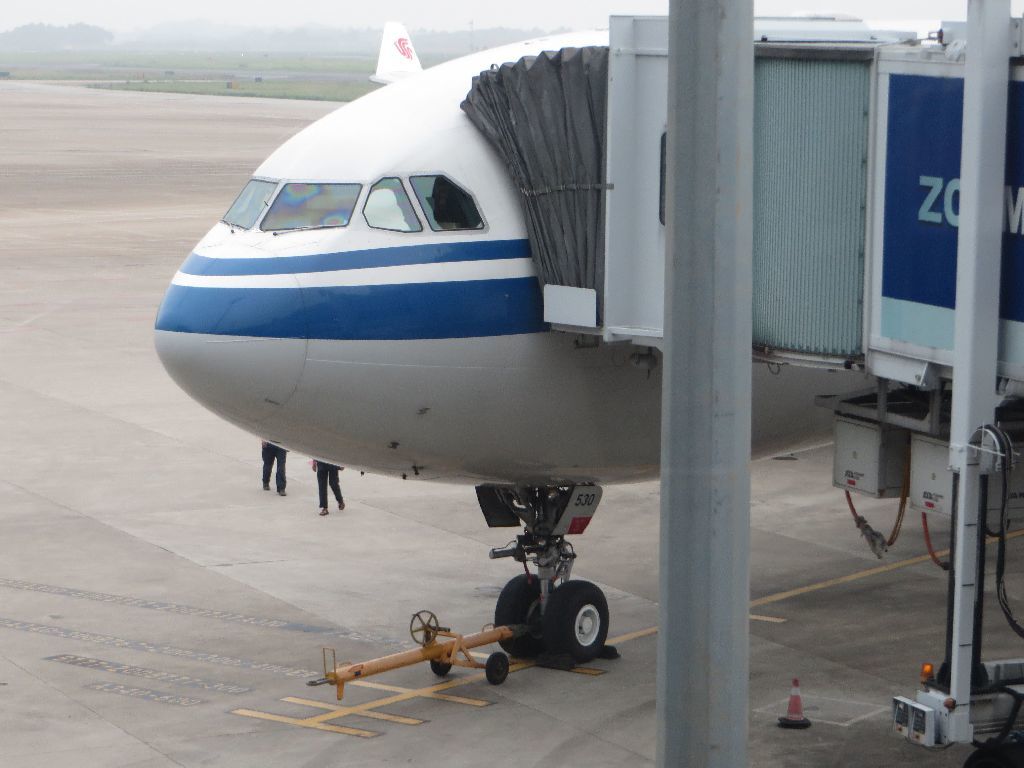
There was a long line at the boarding gate (out of the frame on the left), which gave me ample time to walk around in this terminal which had not much seen, since I was in the lounge.
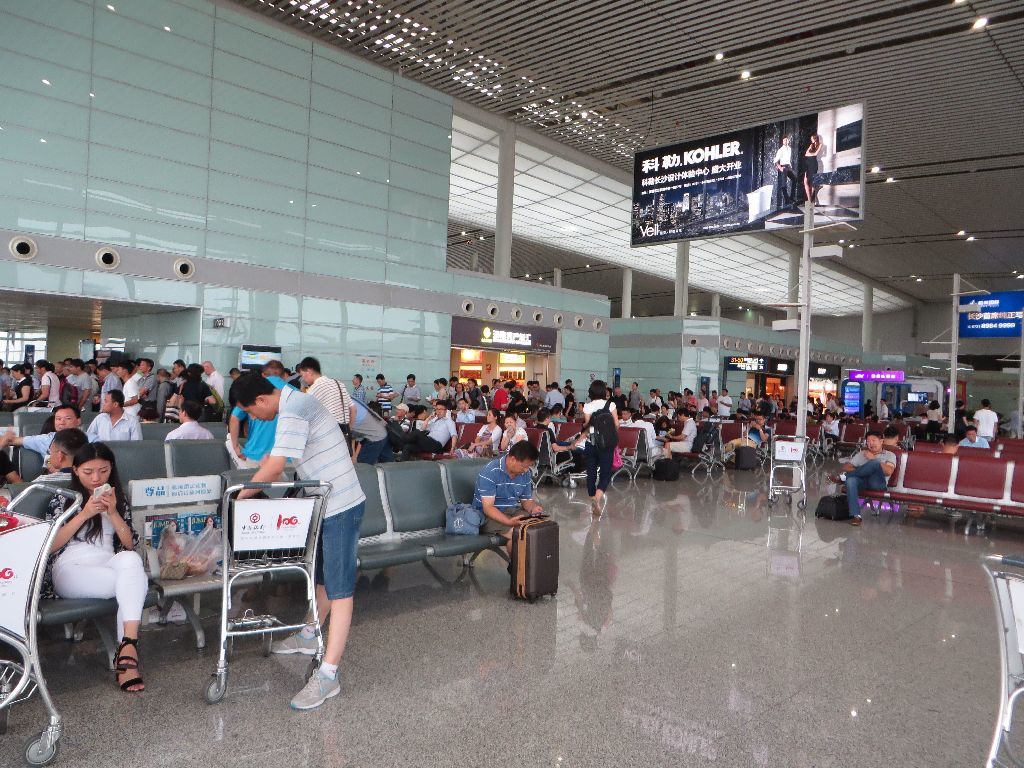
Shenzhen Airlines A319, in front of a Shandong Airlines tail
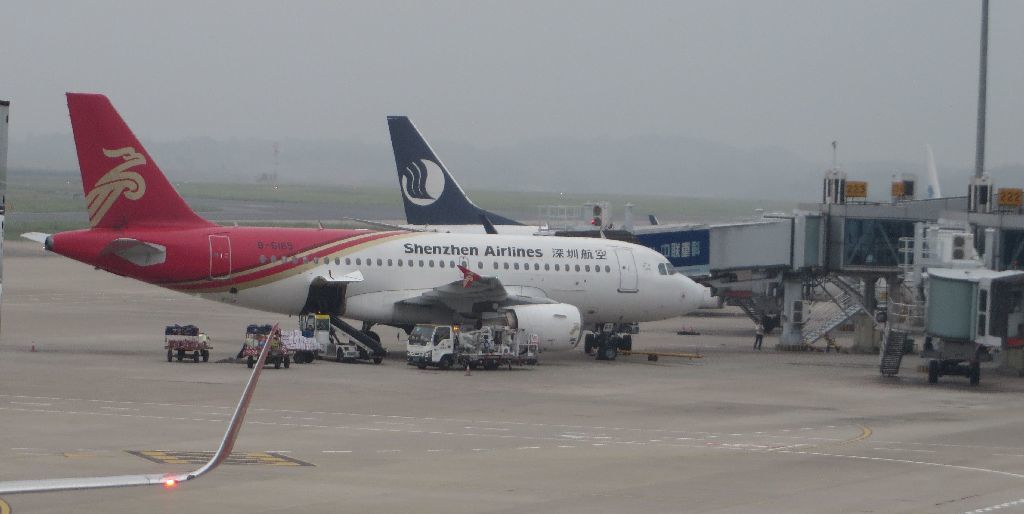
A computer for self use ?
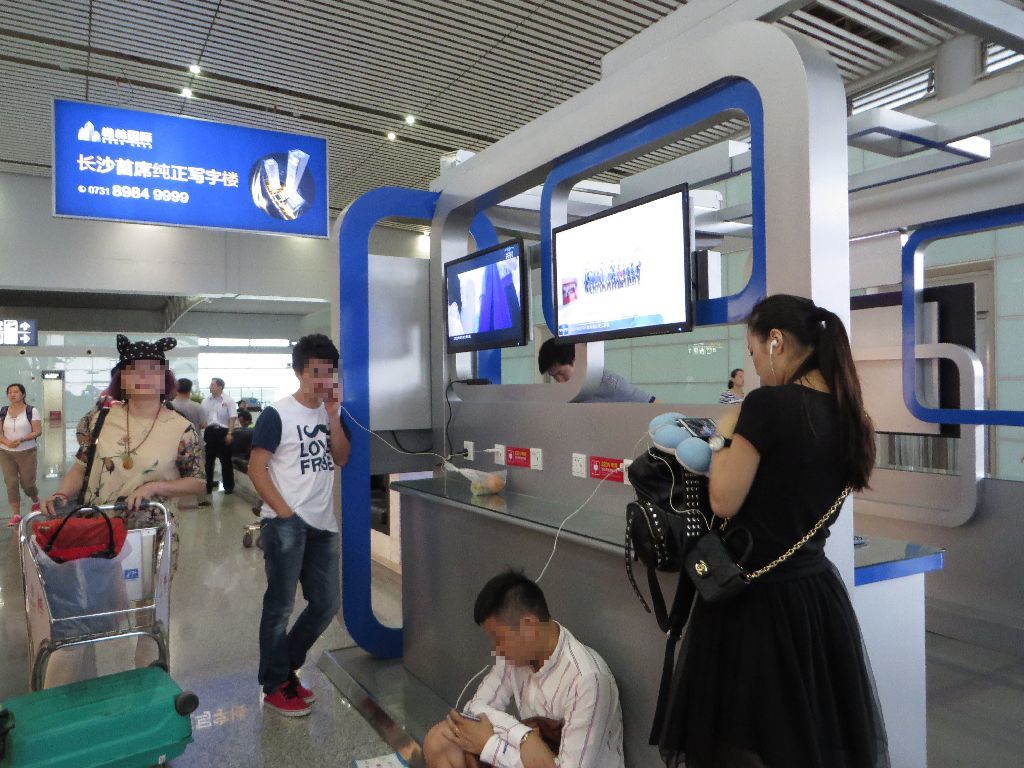
Would I be able to display the traditional corporate screenshot ?
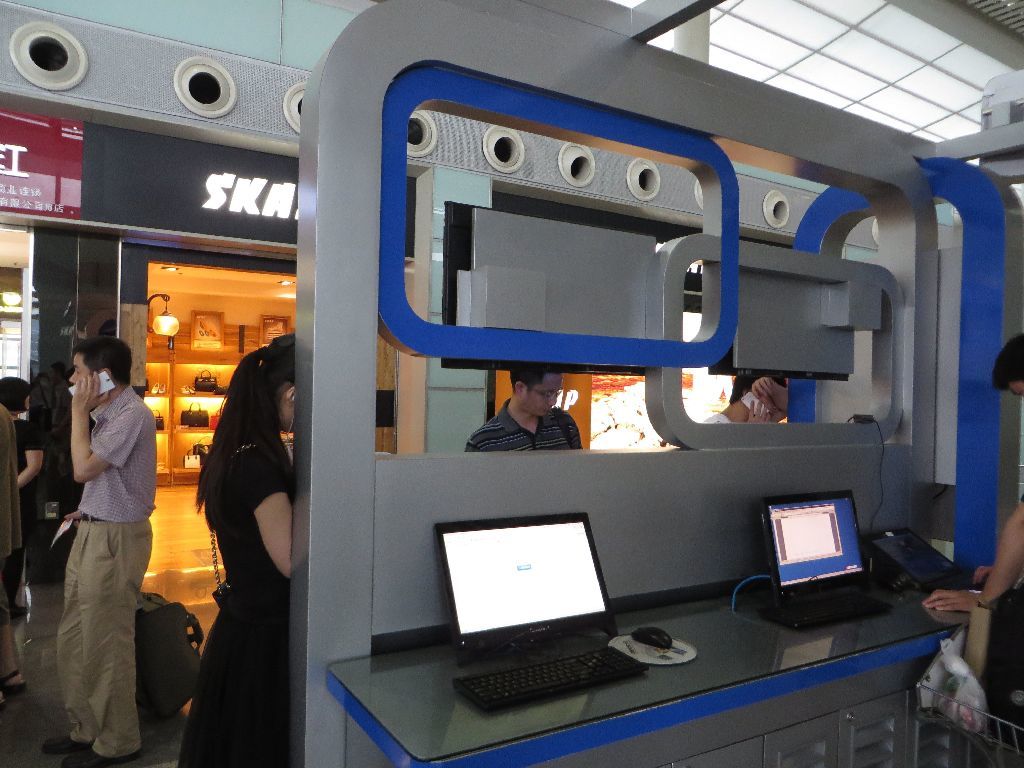
Failed : this was this only city in that business trip in Mainland China where Flight Report was blocked by the Chinese internet censorship a.k.a. the Great Firewall, which is under regional control. Shanghai is said to be much more permissive, but Changsha is something..
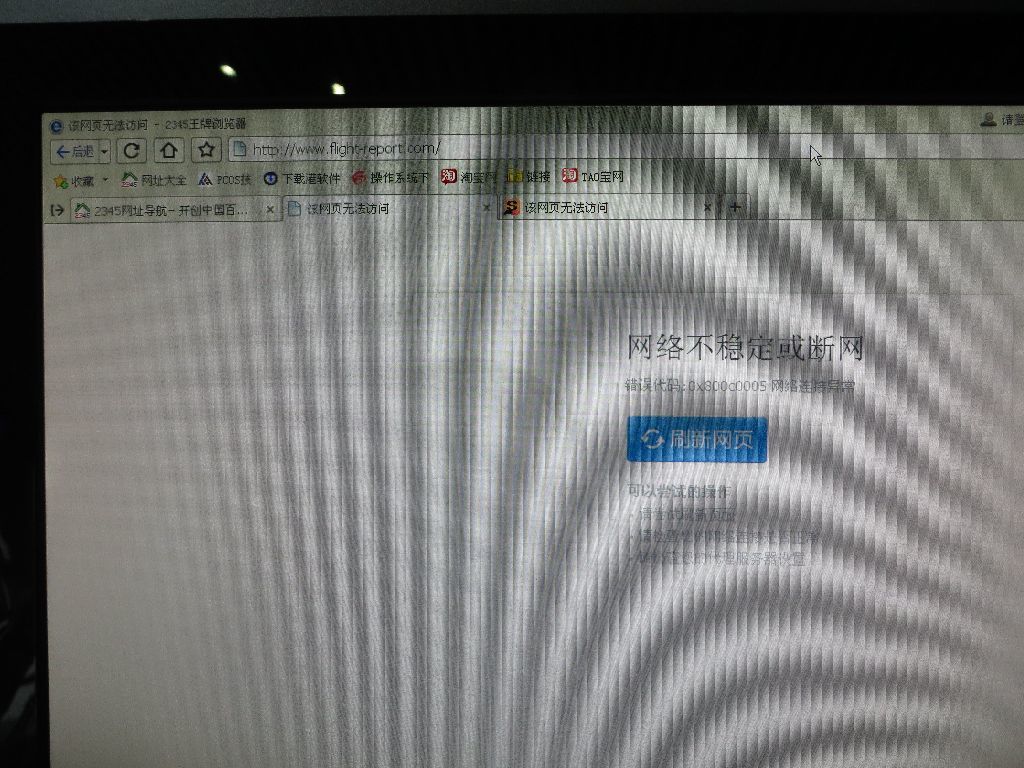
All this stand could have brought me was a power port for my laptop or my cell phone.
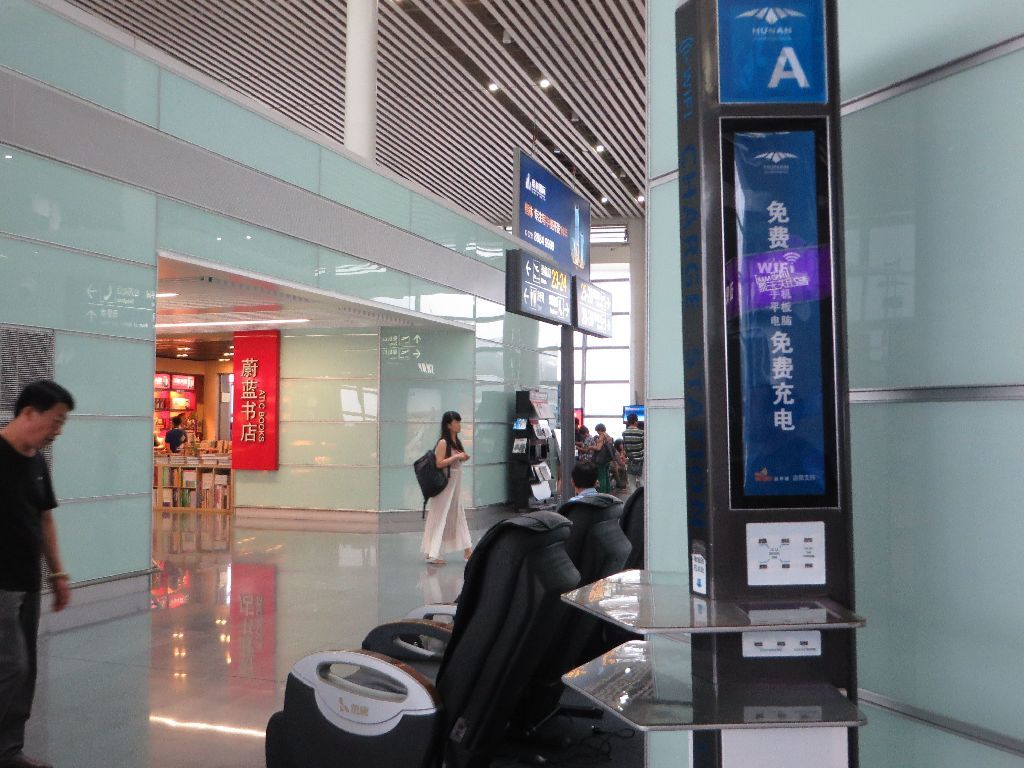
By that time, it had become time to board, because the waiting line had nearly completely disappeared.
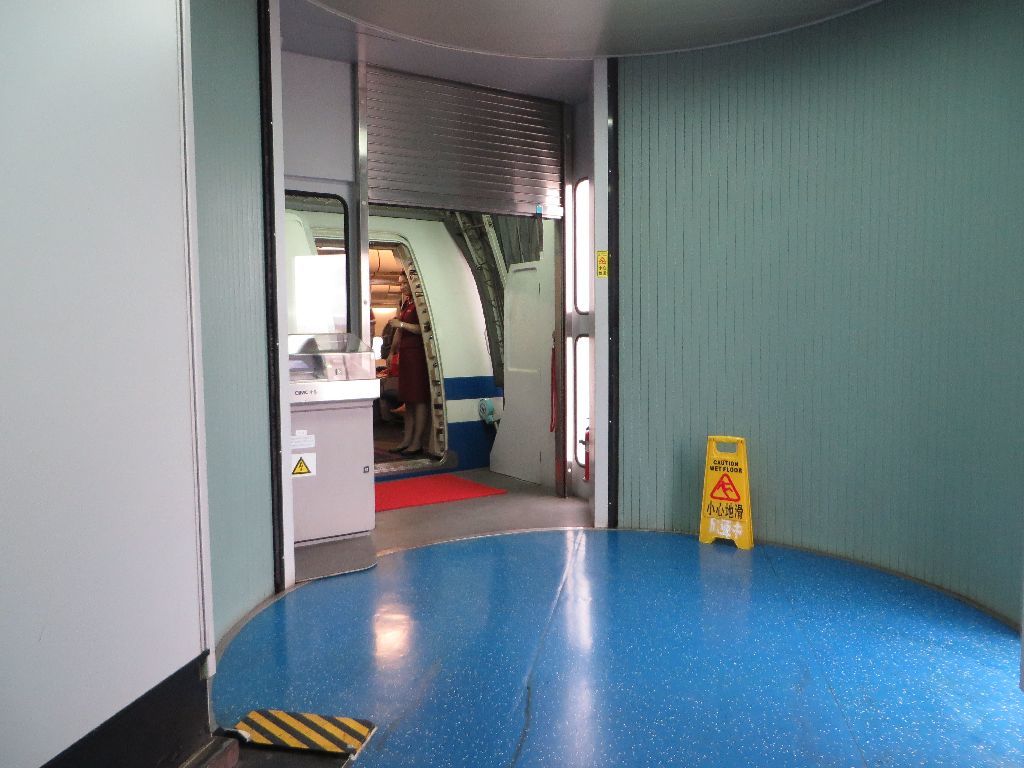
A view of the Y+ cabin, where the passengers have individual IFE screens.
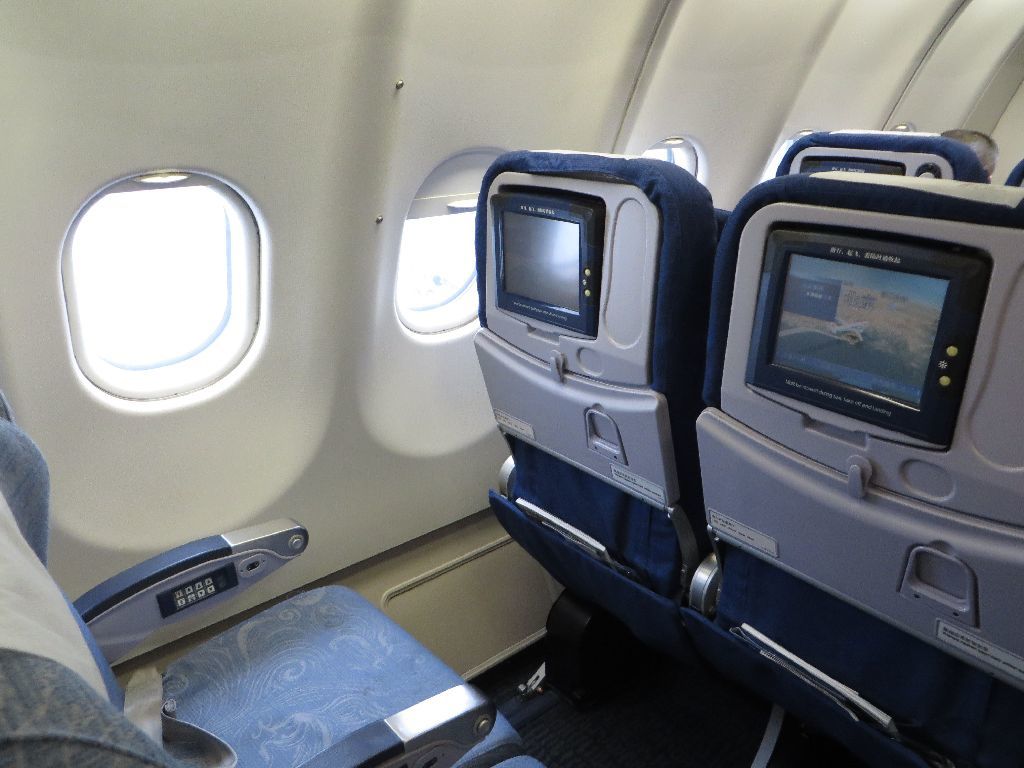
In Y, there were collective IFE screens only.
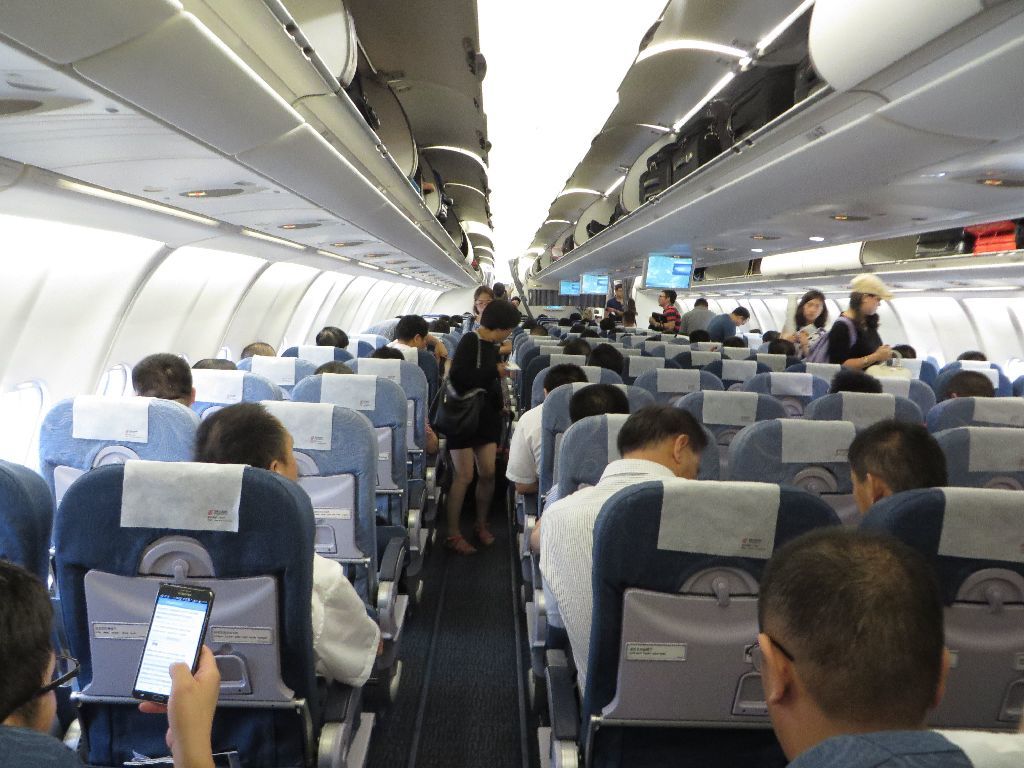
They were used for the safety demonstration. Air China uses real actors and backgrounds (not cartoons or 3D animations like some of its competitors)
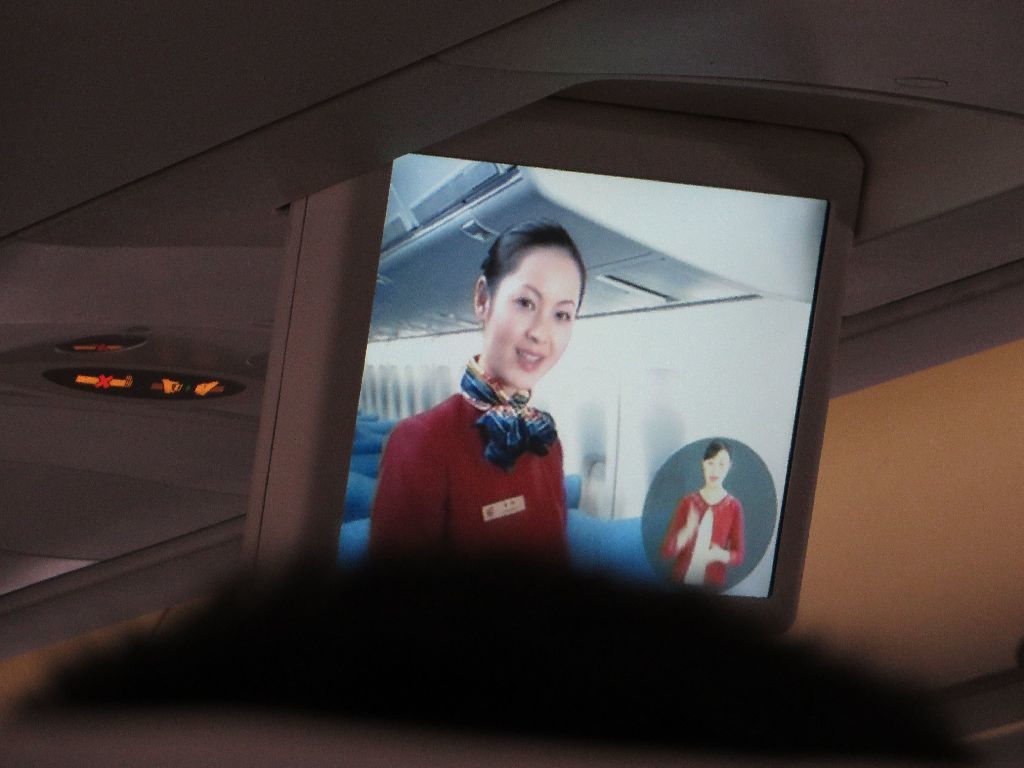
In particular, the very short sequence on the plane’s evacuation uses footage of a real evacuation exercise, obviously part of a test for certification.
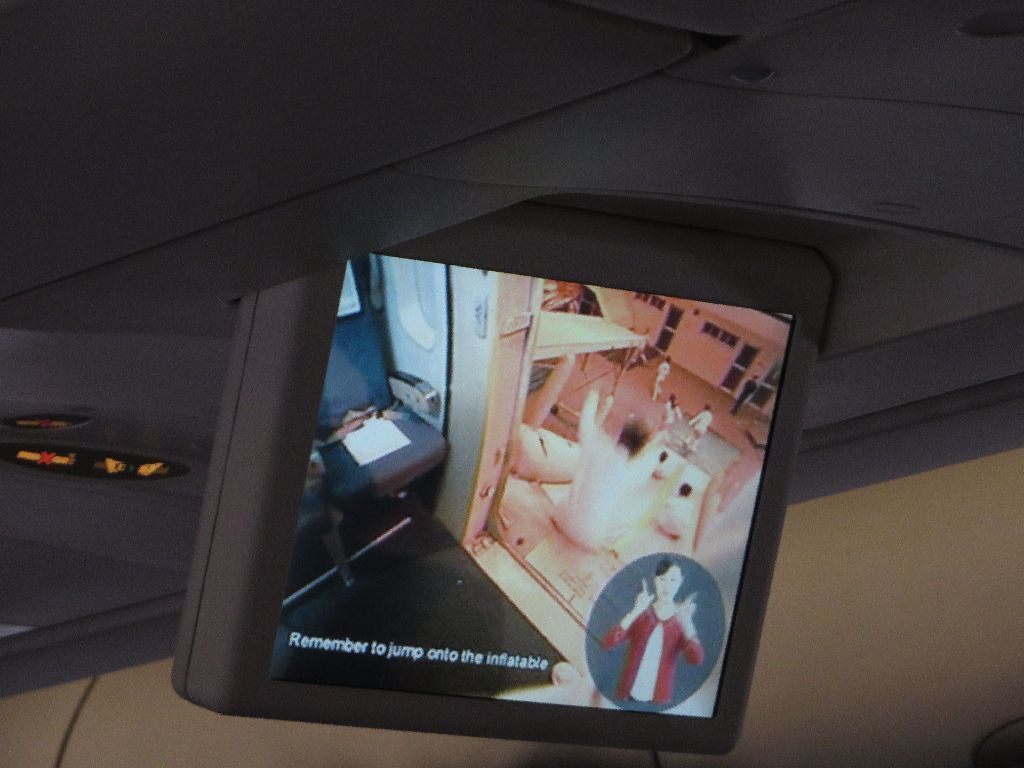
The presentation was always translated in sign language, which is very international : I was told by a sign language specialist that two days are enough to adapt to the sign language of a country with a completely unrelated spoken native language.
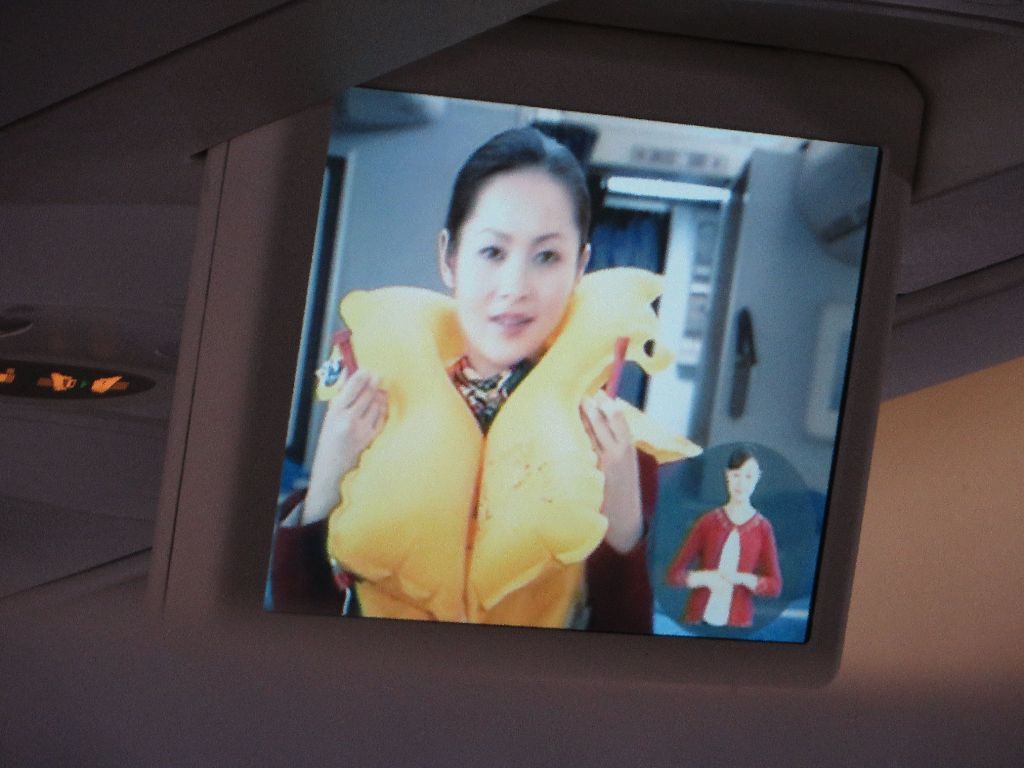
Push back
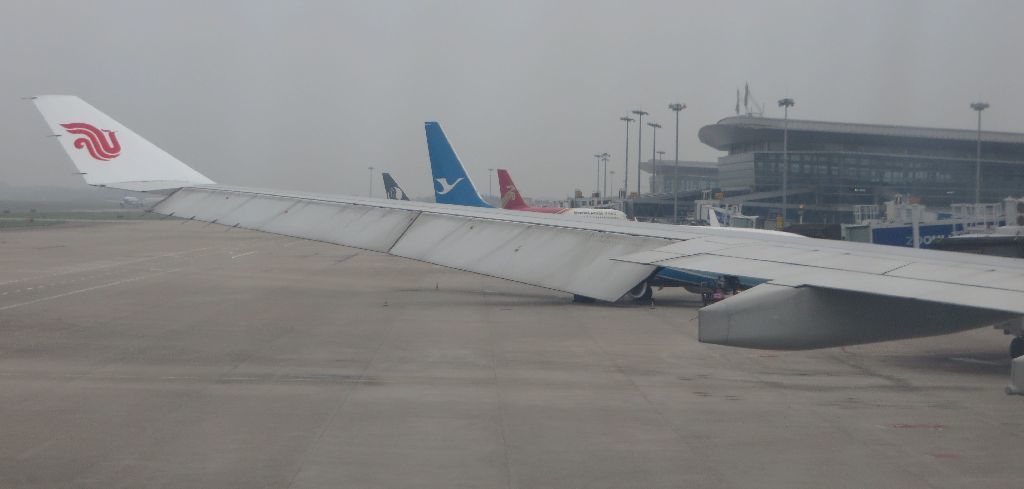
From left to right, Shandong Airlines, Xiamen Air and Shenzhen Airlines
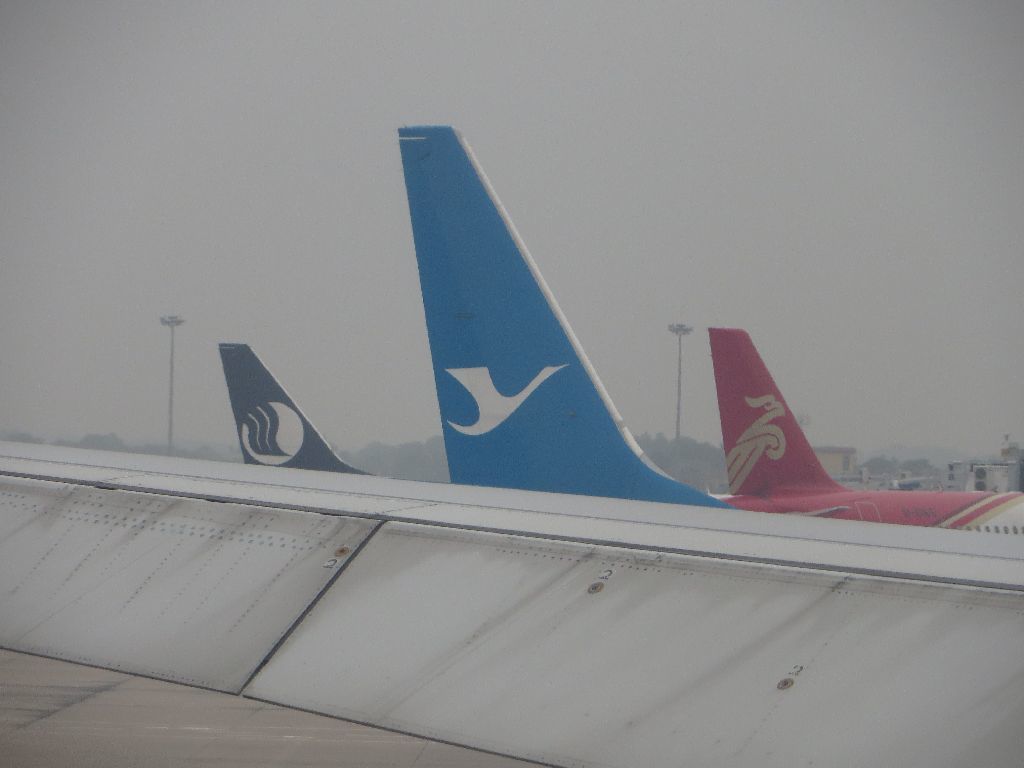
843 miles to PEK. The IFE screens displayed an air show with modern aesthetics.
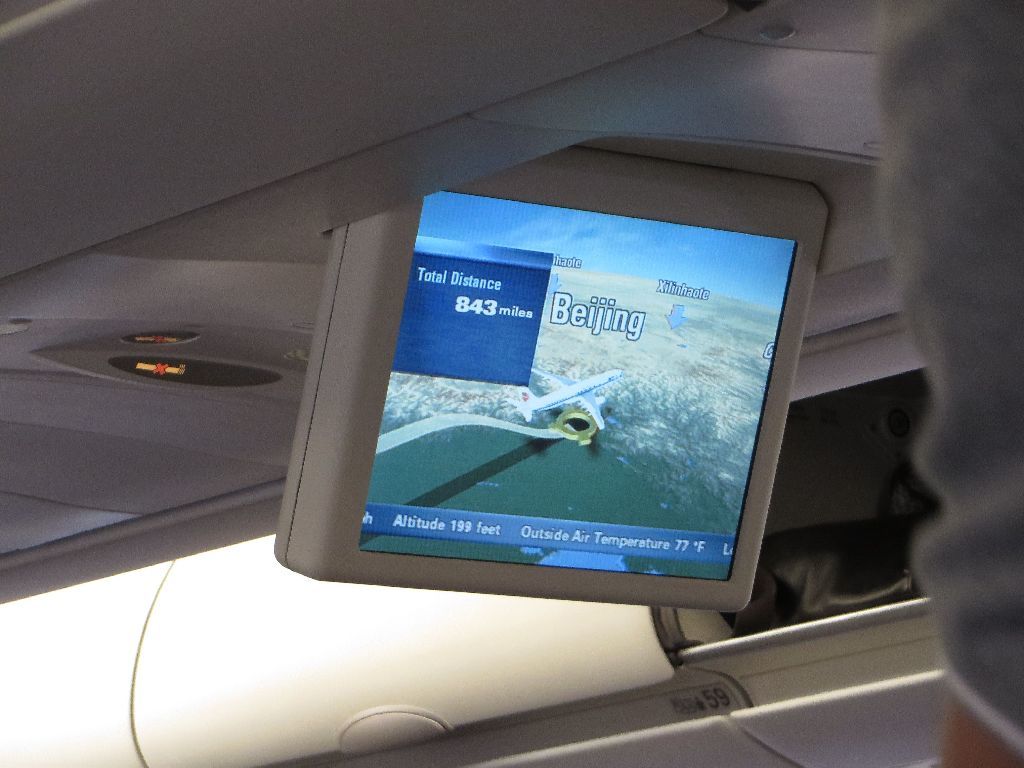
The seat pitch was less generous than in single aisle aircraft, about 3 cm less (see my previous reports). It remained compatible with my leg size.
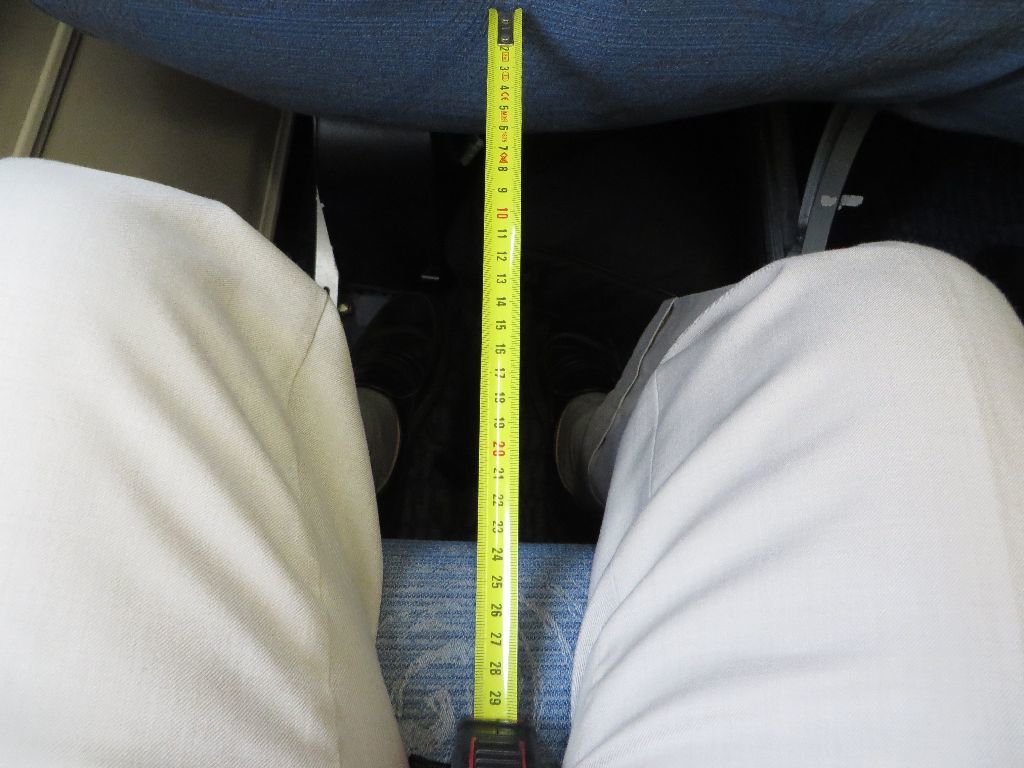
The safety card both sides
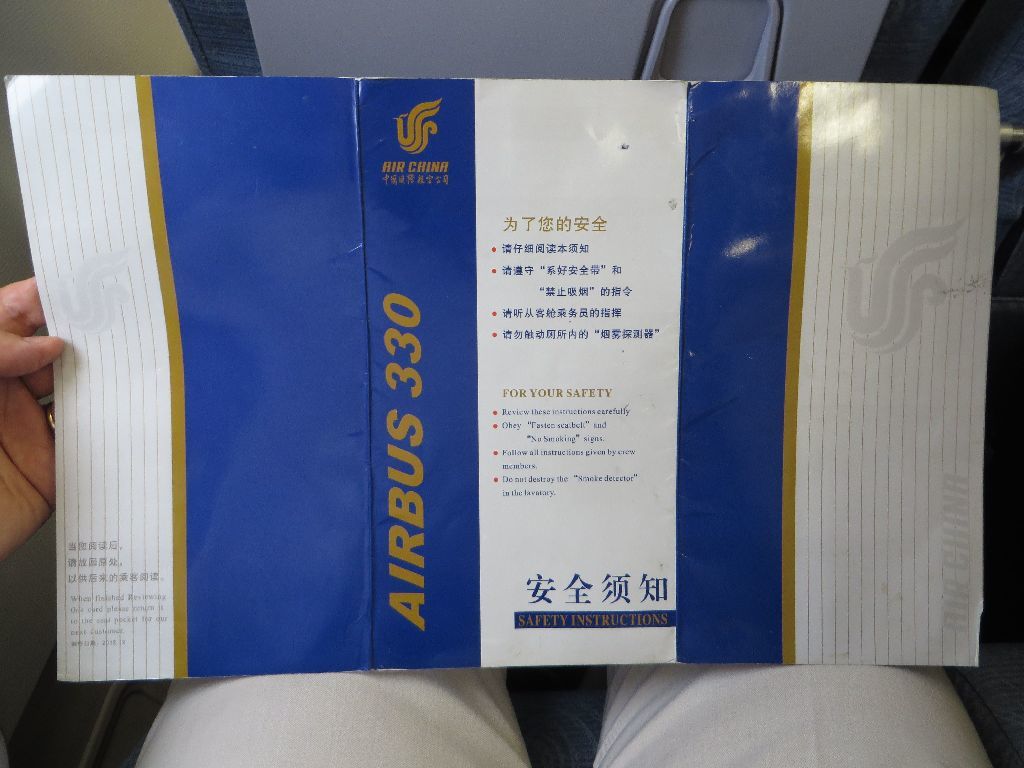
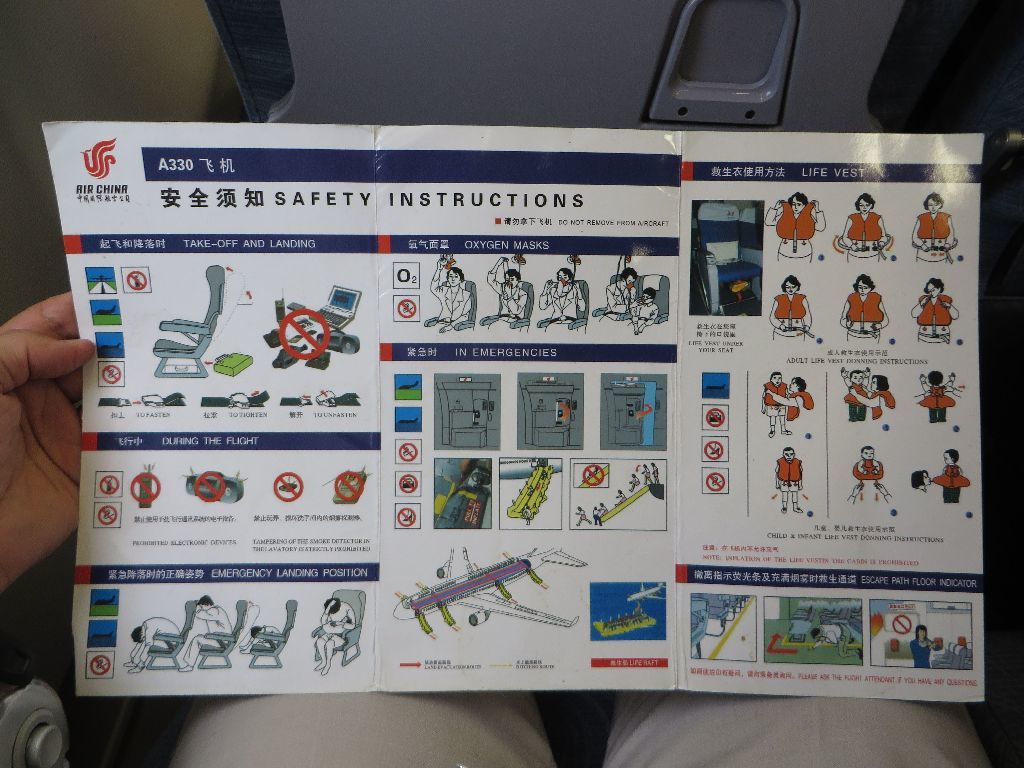
Arrival of a Xiamen Air 737 in Skyteam livery. It was not night in China at that time of the day: the clouds (or the pollution) were quite dense.
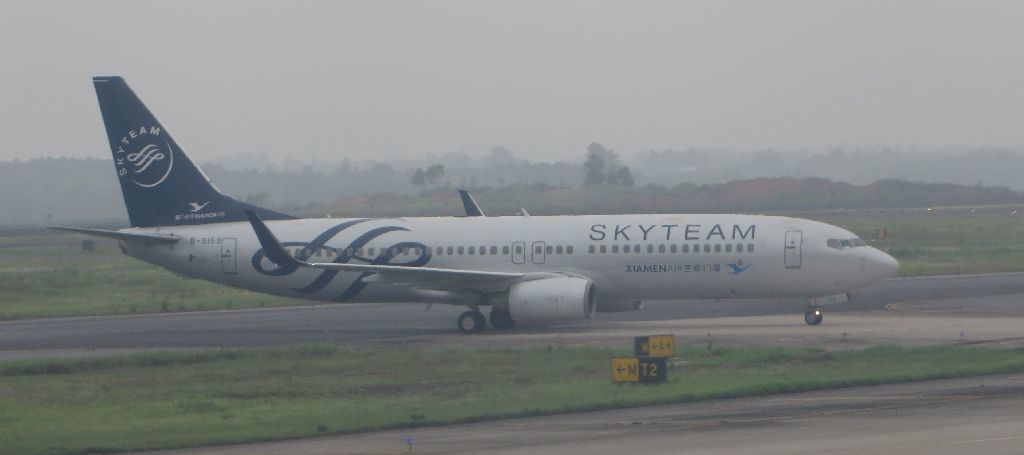
The "Follow me" car guiding the 737
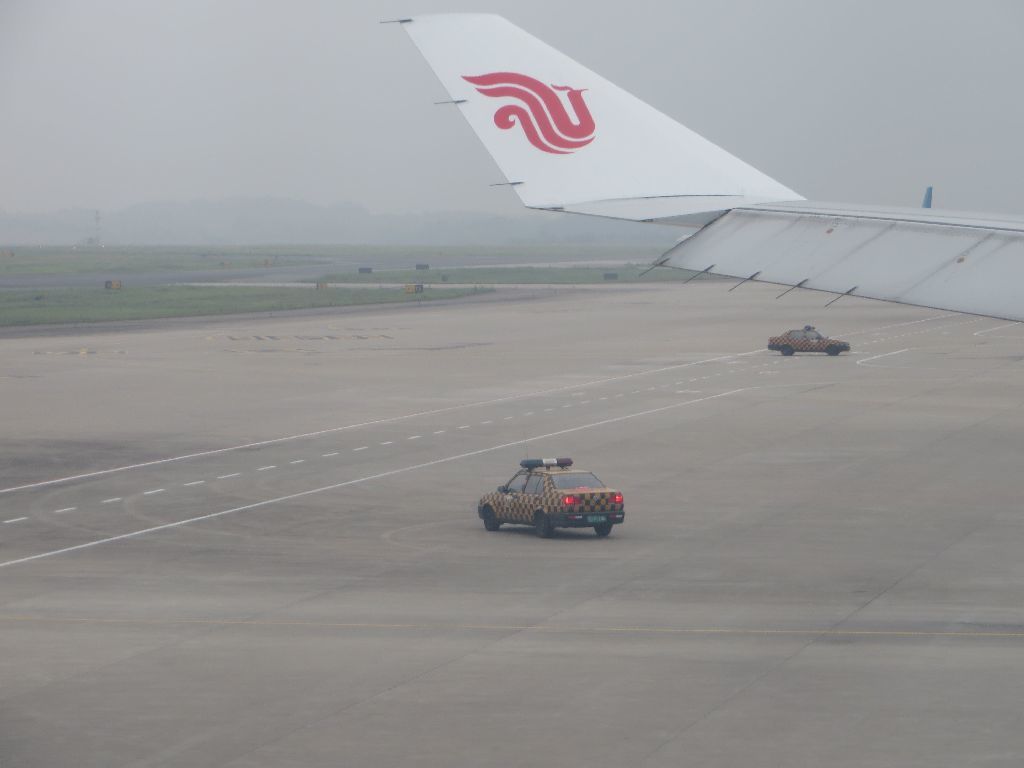
Arrival of a Chengdu Airlines A320
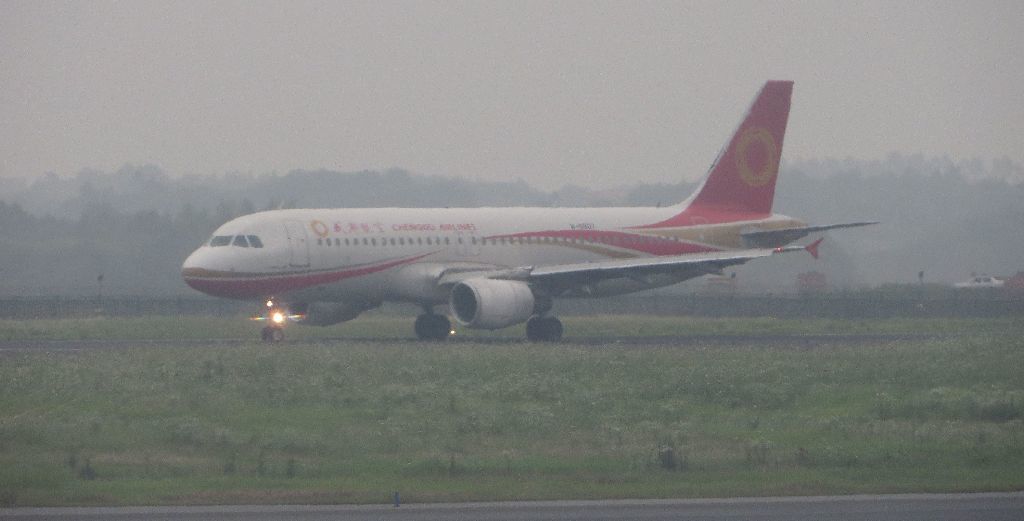
… and of a China Southern A321
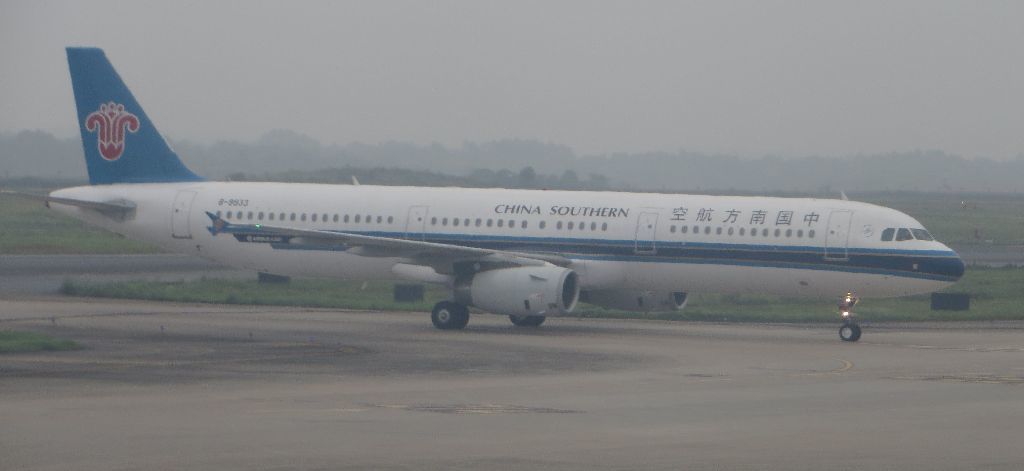
Distribution of newspapers in Chinese. There were not newspapers in English; I doubt many foreigners go to Changsha for tourism or for business , but I have done both in the past.
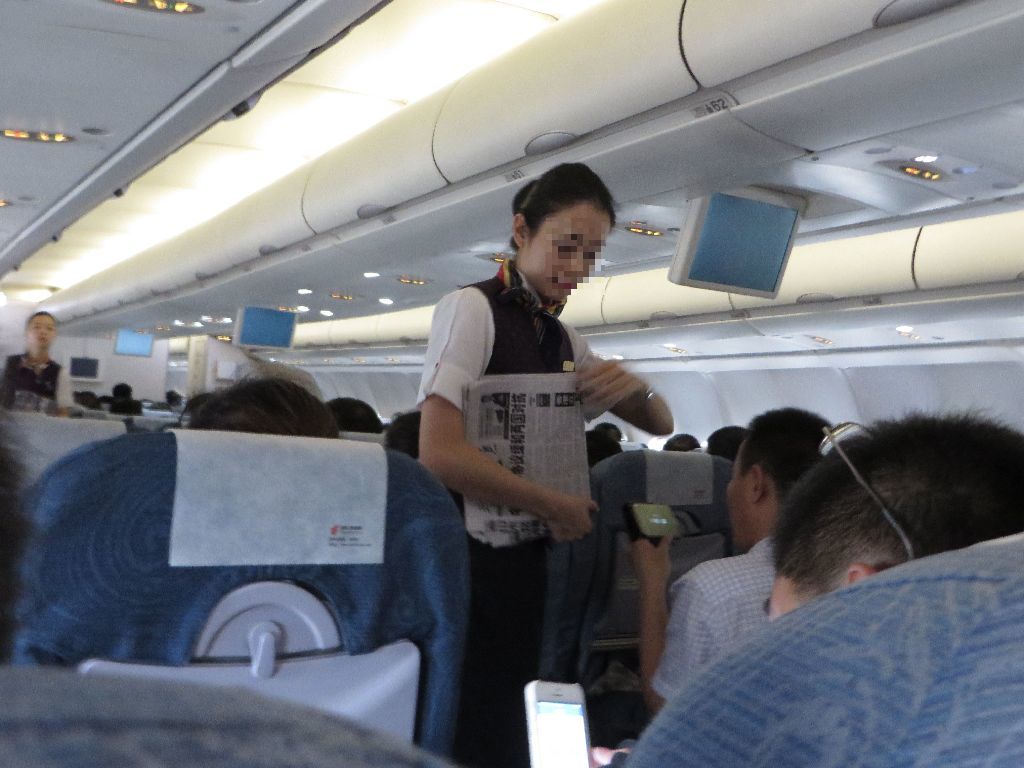
The Xiamen Air 738 pushes back
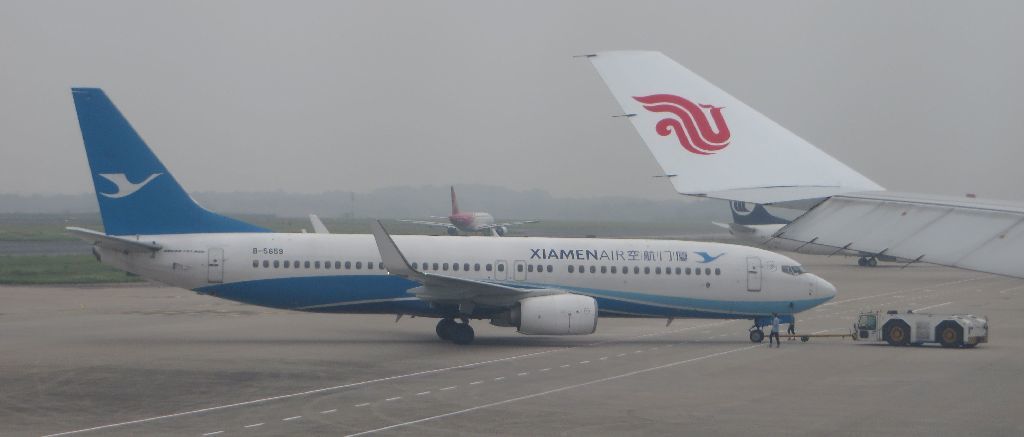
Despite the minimal ambient light (and also the interdiction of using an electronic equipment during that phase of the flight, but this has never been a problem : the Chinese FAs are never aggressive about it, as long as you use a real camera, not a smartphone), I was happy to have captured the arrival of two somewhat unusual aircraft : a Xi’an MA60 of Okay Airways, the airlines which has the largest fleet of this type.
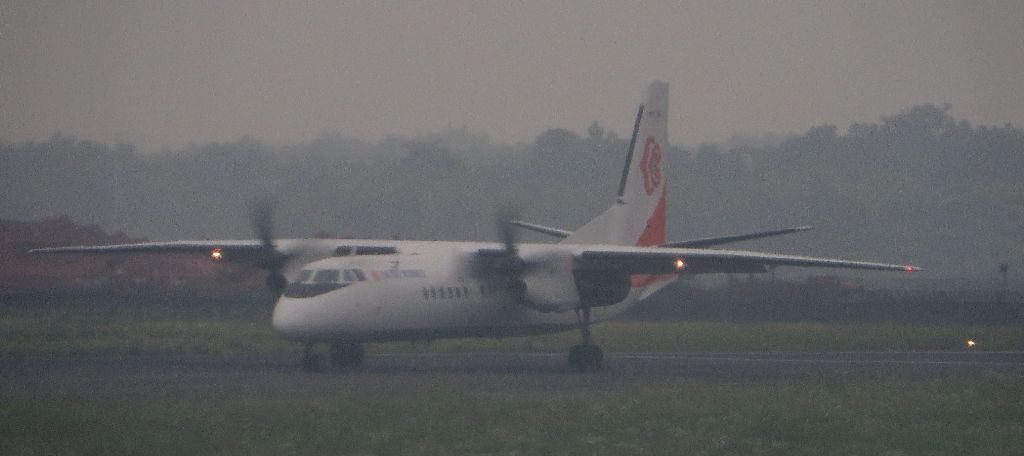
This is a Chinese designed and built aircraft, a lengthened version of the Xi’an Y7 which was derived from the SovietAn-24. It did not sell well, has not been certified in the West, and can be found in countries which are not too demanding on air travel safety, like Indonesia and Laos which the only countries where Flight Reports on that aircraft have been posted to date (in French).
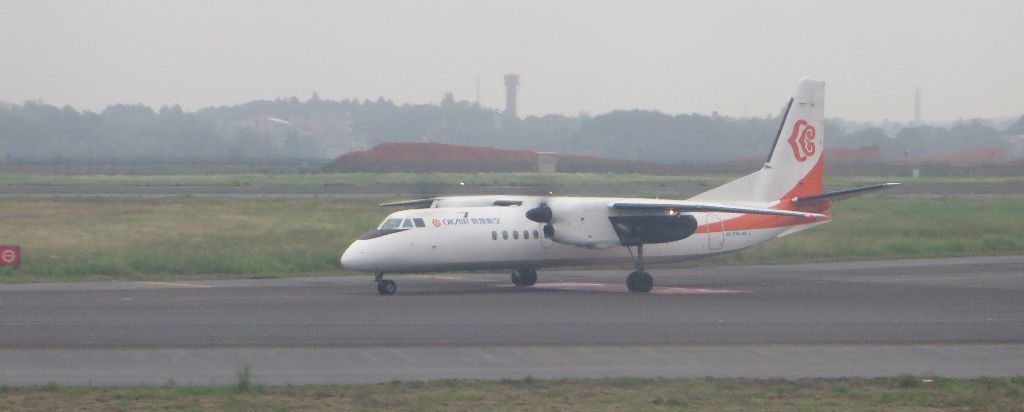
She taxied to the remote parking over there, next to other aircraft of the same type and a cargo palne of SF Airlines.
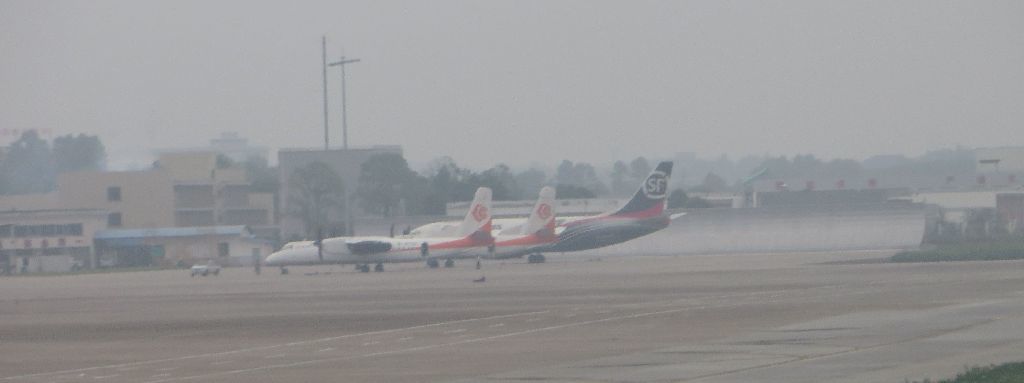
This other airline has also had safety problems with its twin prop fleet : Transasia Airways lost two ATR-72 recently, in crashes where human error was obvious. The presence of this Taiwanese plane in a provincial Chinese city is an illustration of the air travel détente between Mainland China and Taiwan, because this line did not exist six years ago.
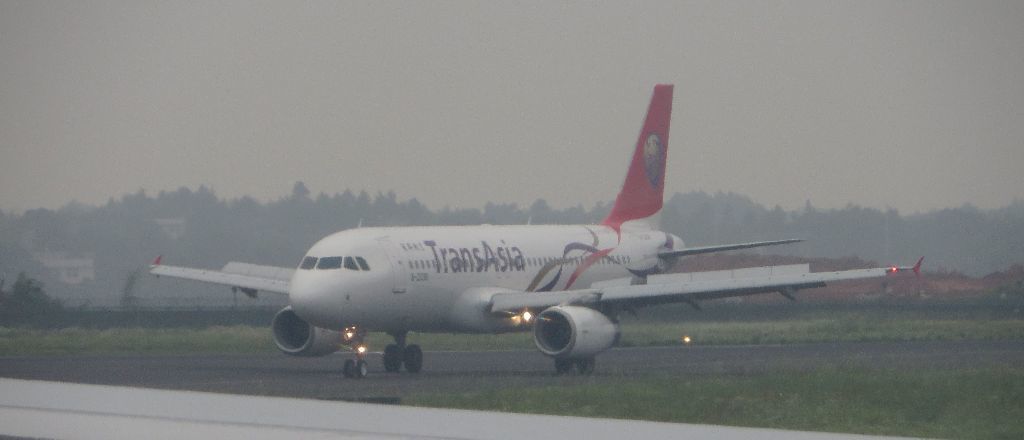
Take off at 18:04 : 1h59’ late ! which also meant a full hour waiting in the plane…

The weather was going to be cloudy during the whole flight
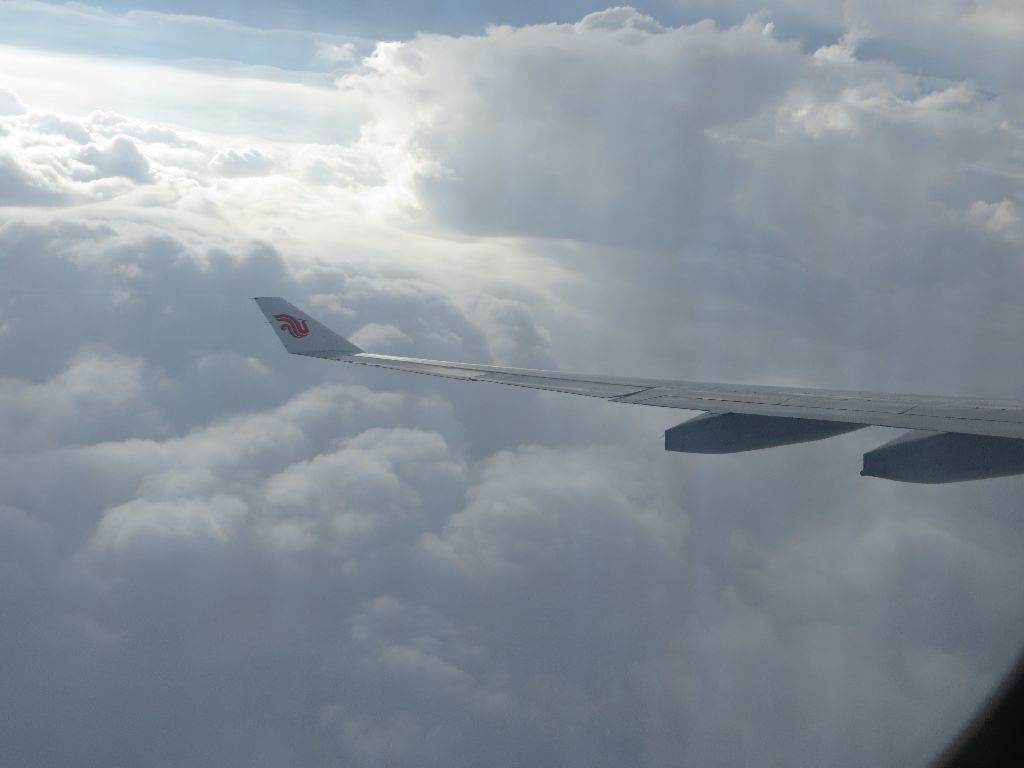
The winglet with Air China’s stylized phoenix
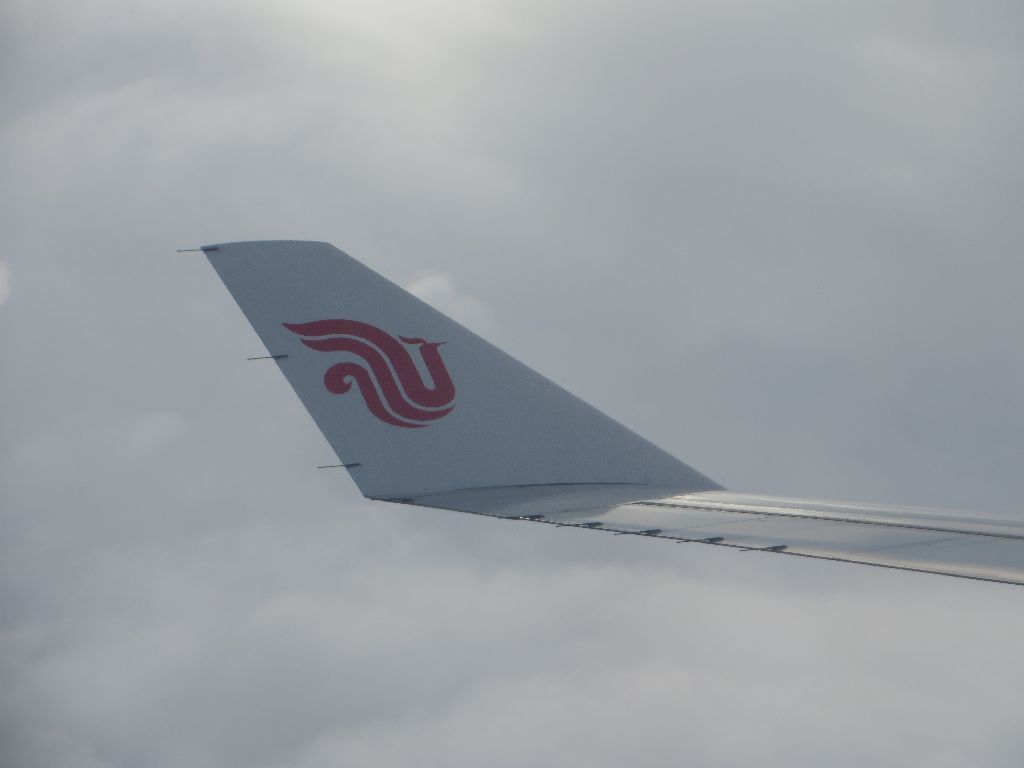
The plane never flew above the top cloud layer
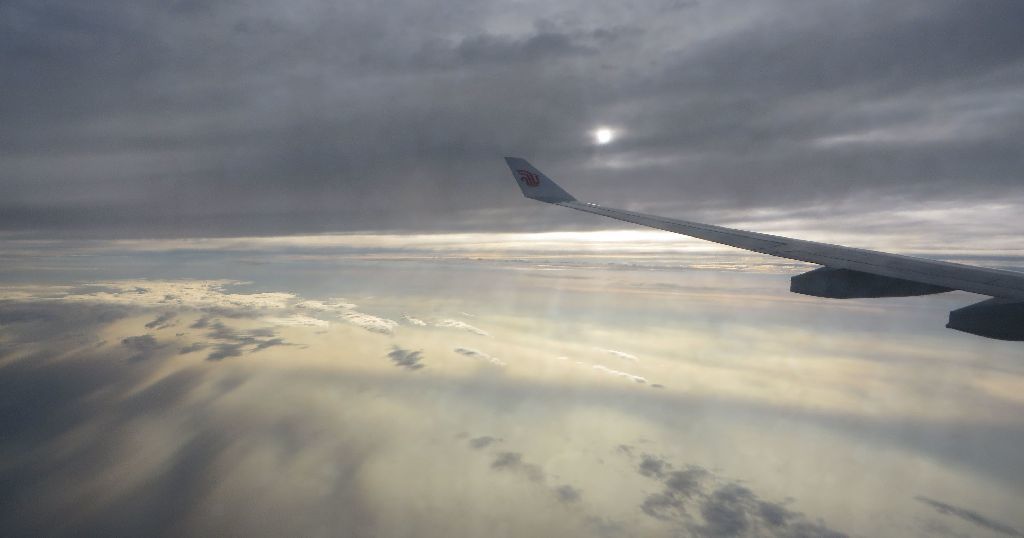
The meal arrived this way on my tray table
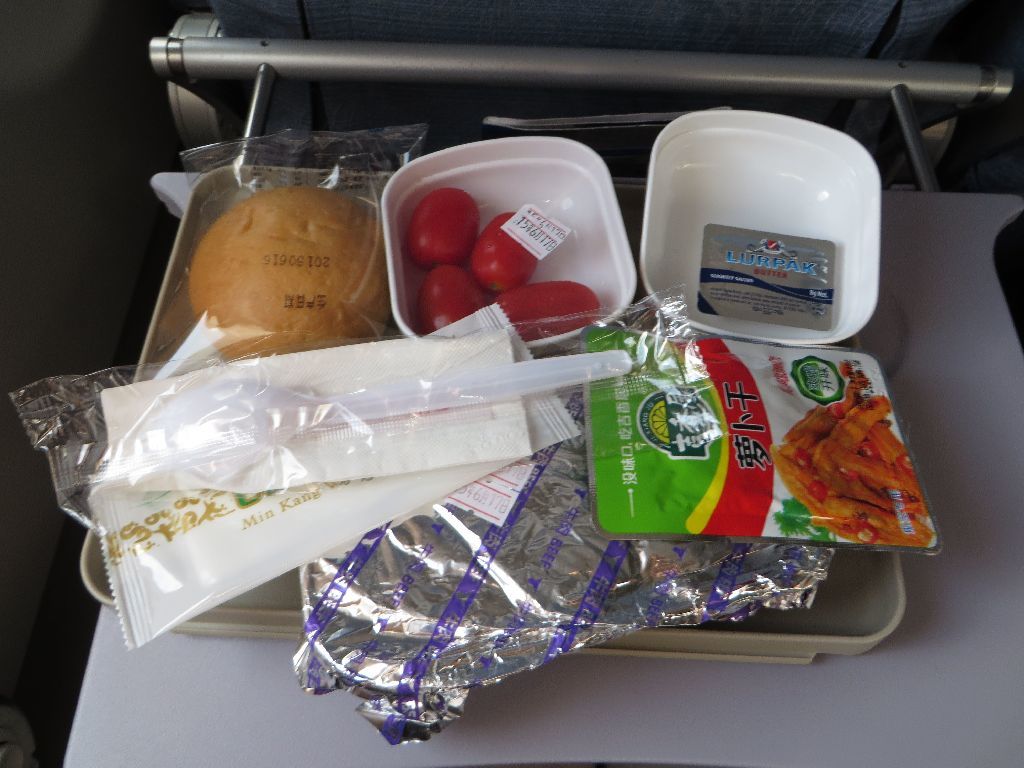
My neighbor chose (sticky) noodles
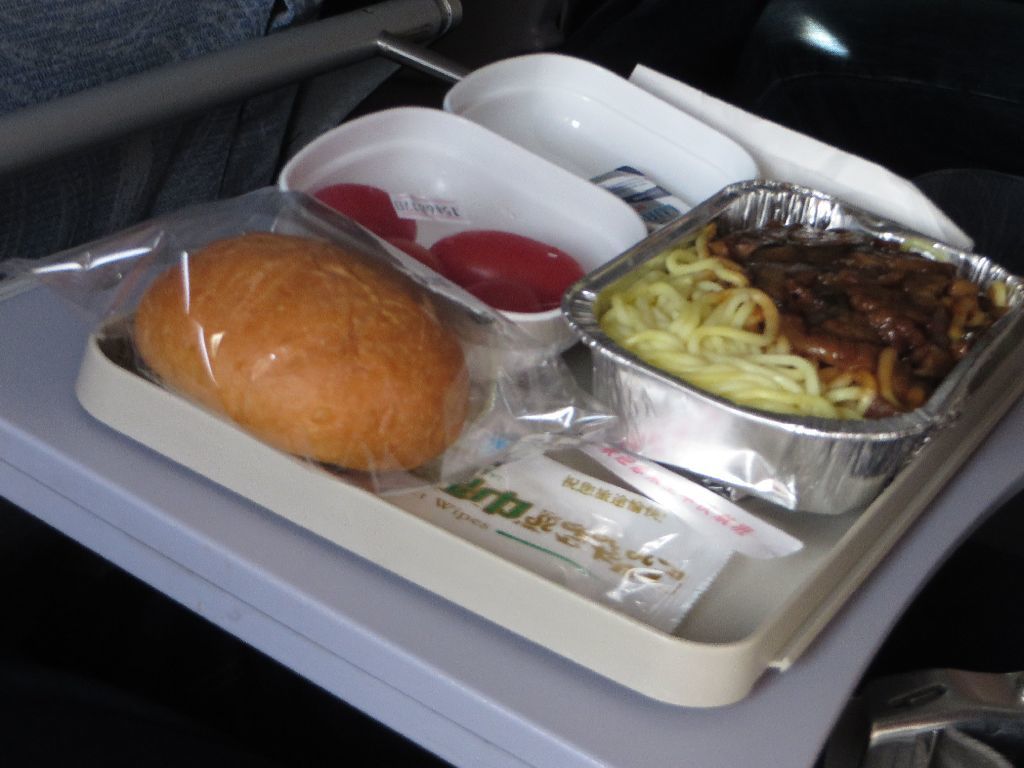
… but you probably know me : I chose rice, which was associated with beef this time. It had been prepared on 17 June.
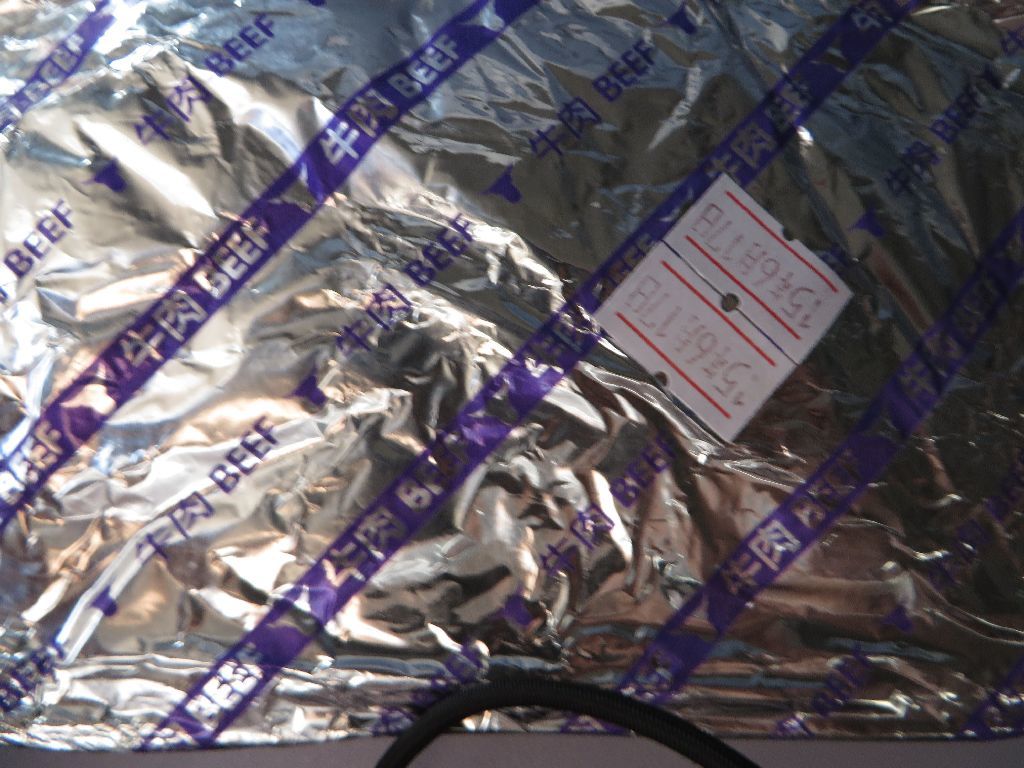
After unwrapping and measuring
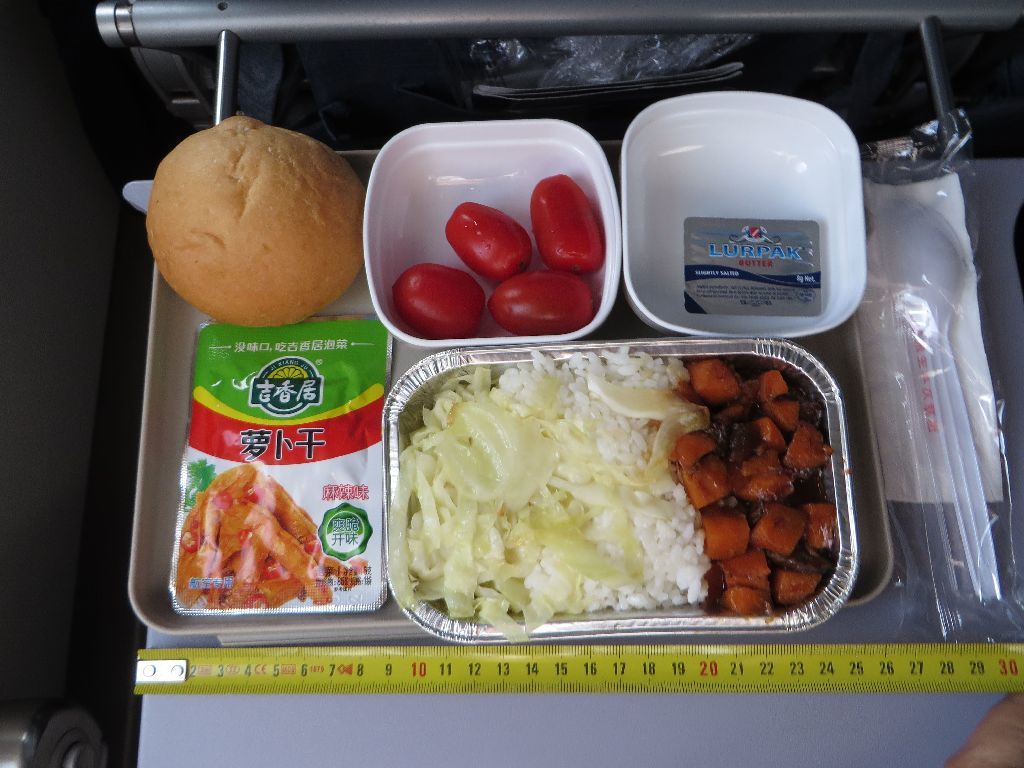
The bag lower left was typical of a meal on a Chinese domestic flight, and I found the marking interesting
麻辣味 : spicy (in red on the right) – being able to read that can be a life saver if you tolerance threshold is low
航空专用 : special for airline use (in blue on the left) – I still wonder what made it special
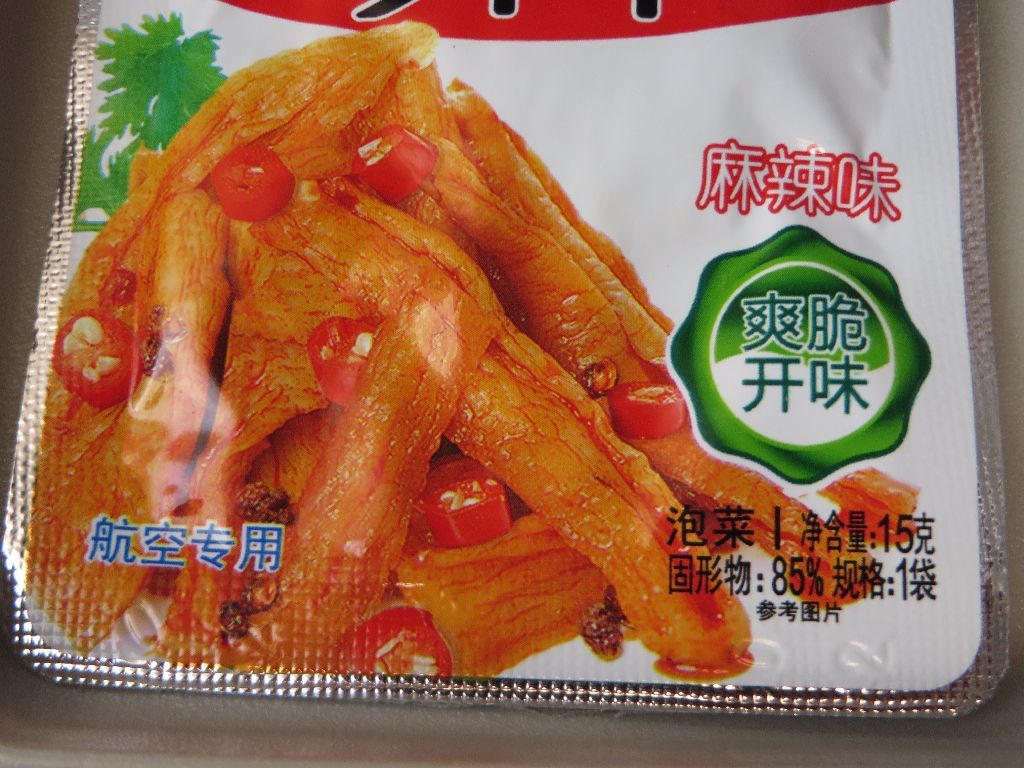
A coffee to wash that down, literally,
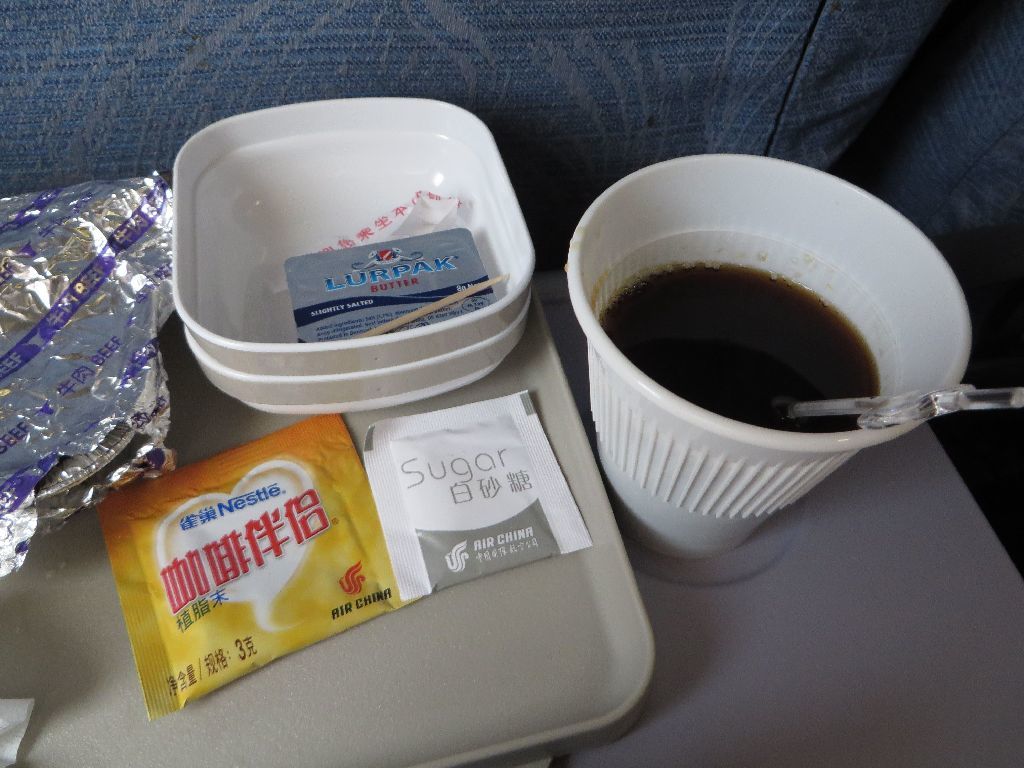
… because the FA was not very good at handling this very ordinary jug of coffee, and spilled lots of it on the aisle’s carpeting, whose design made it quite resistant to such aggressions. She was lucky not spilling also some on a traveler's clothes.
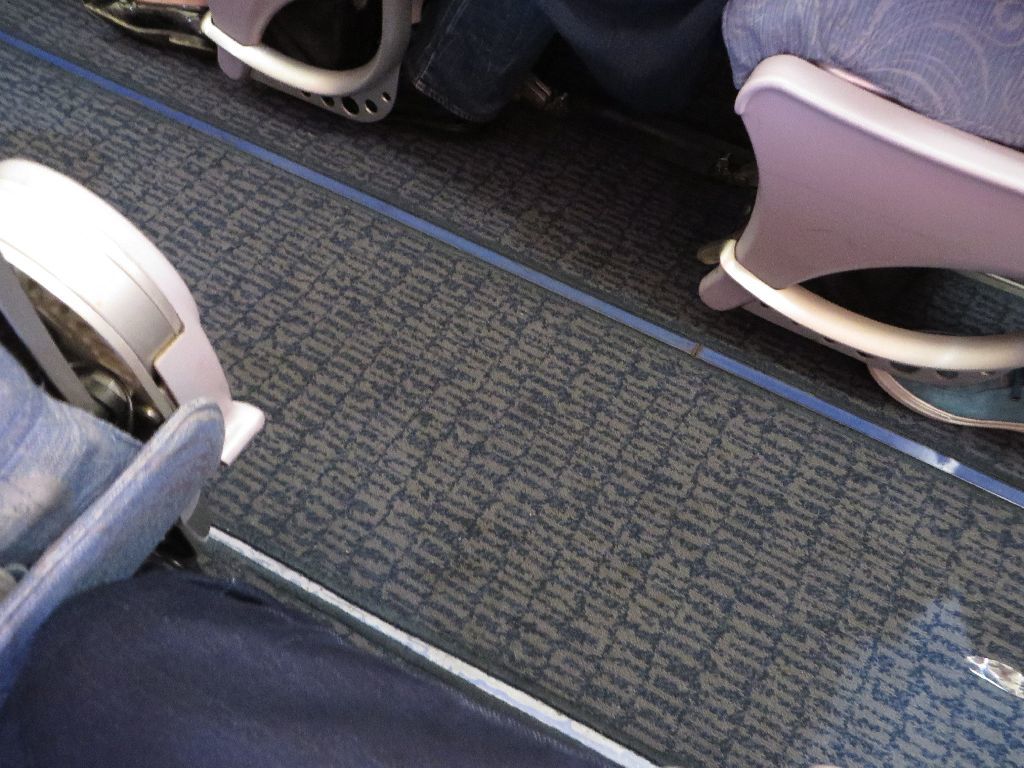
There was not much to see through the heavily scratched window
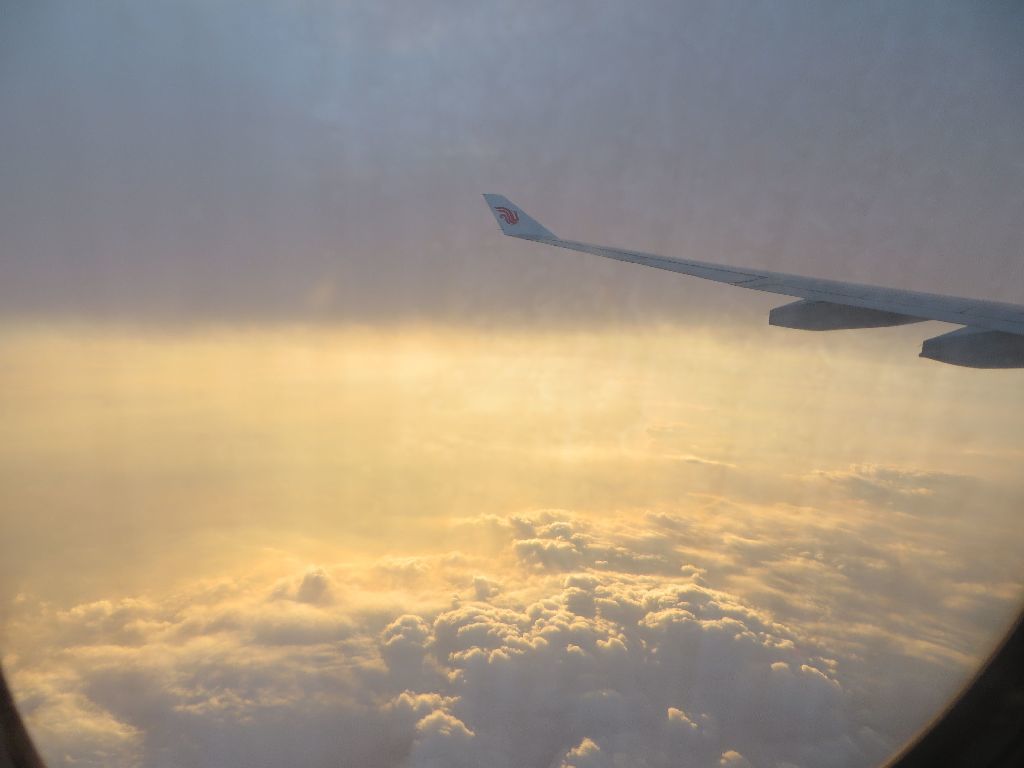
Getting closer to the destination. At least, we’ve the airshow during the entire flight.
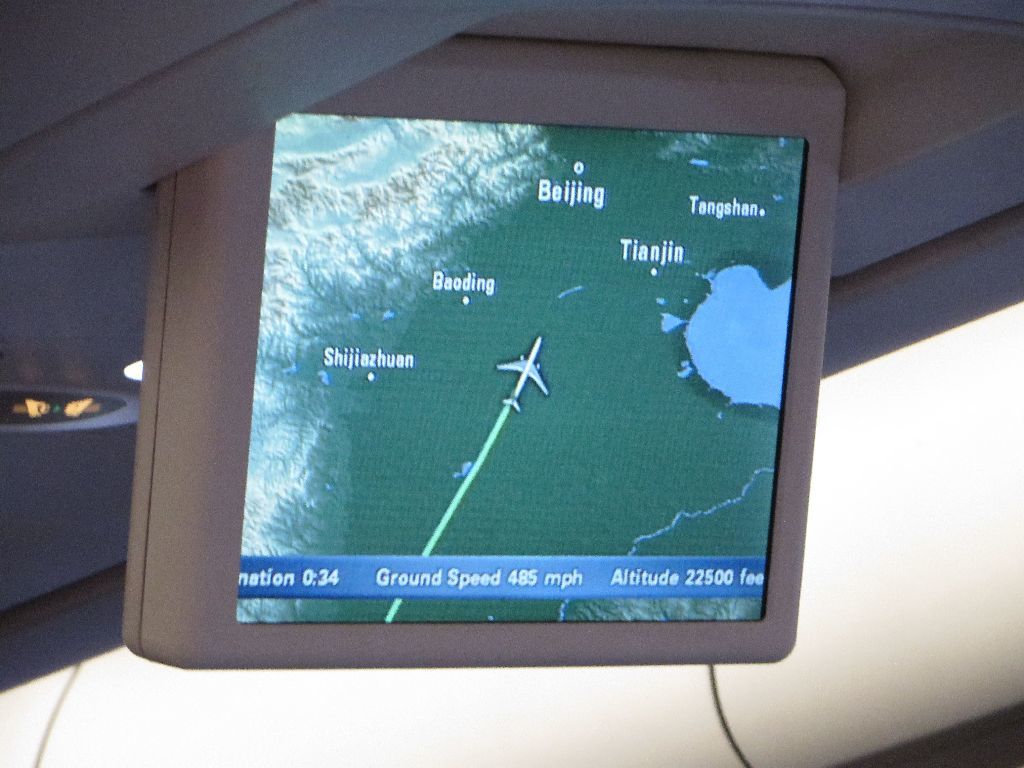
Descending above the greater Beijing area. It was too dark to recognize and comment the location. Had the plane been on schedule, it would have been different.
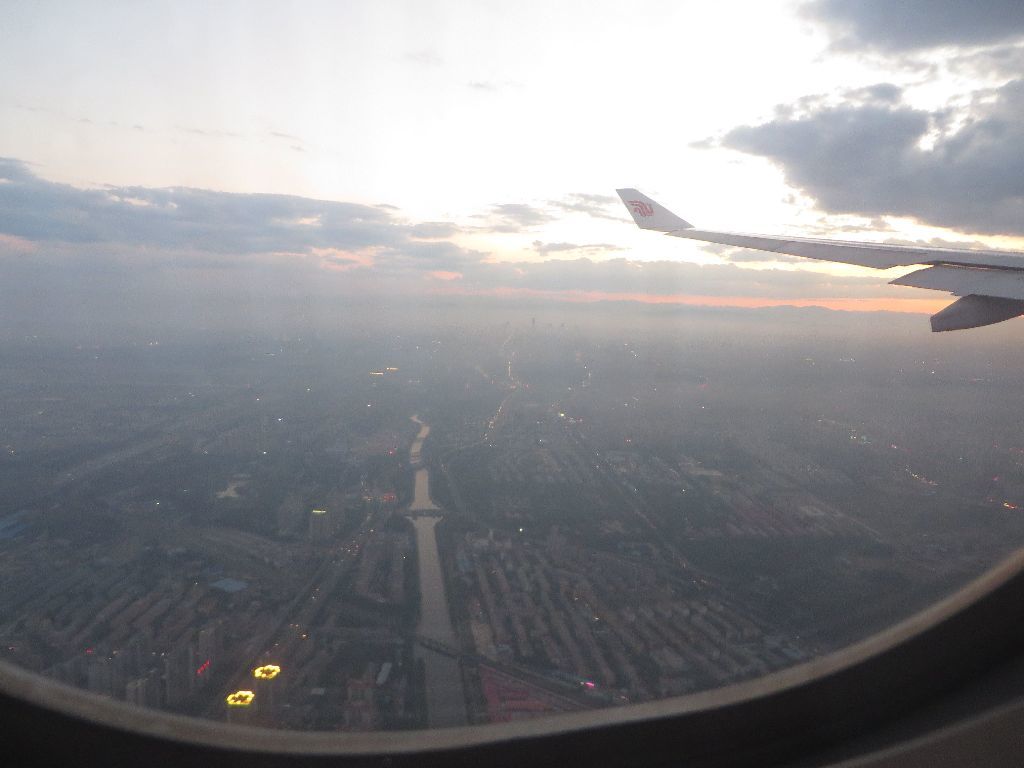
Touch down at ETA + 1h46’
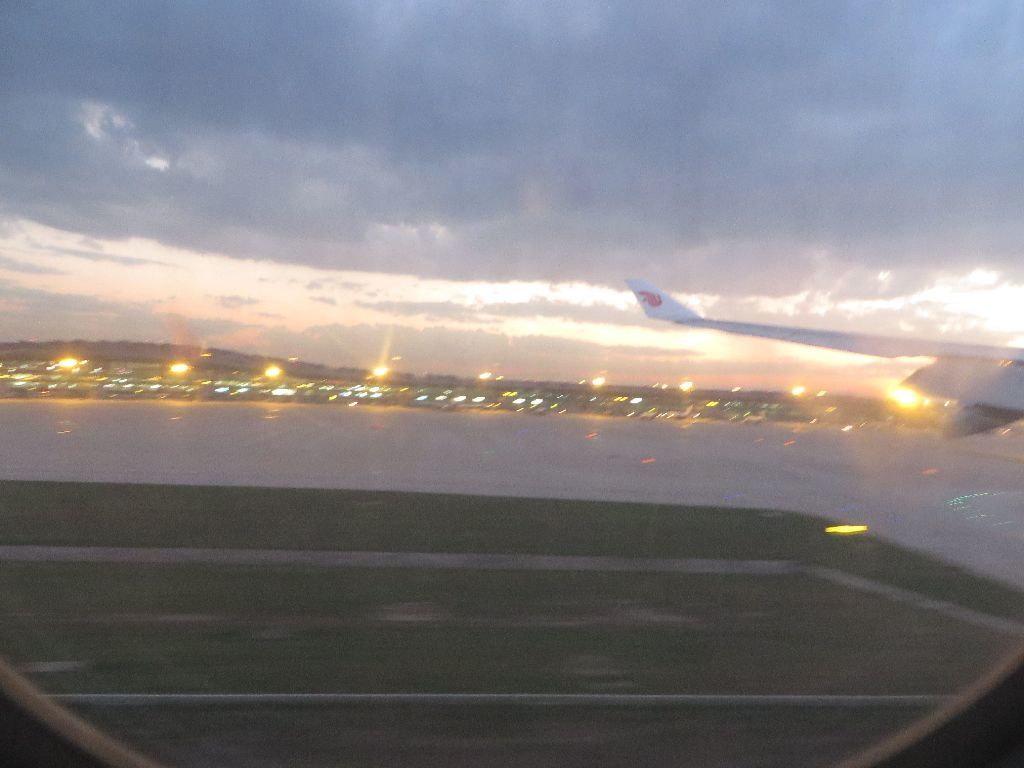
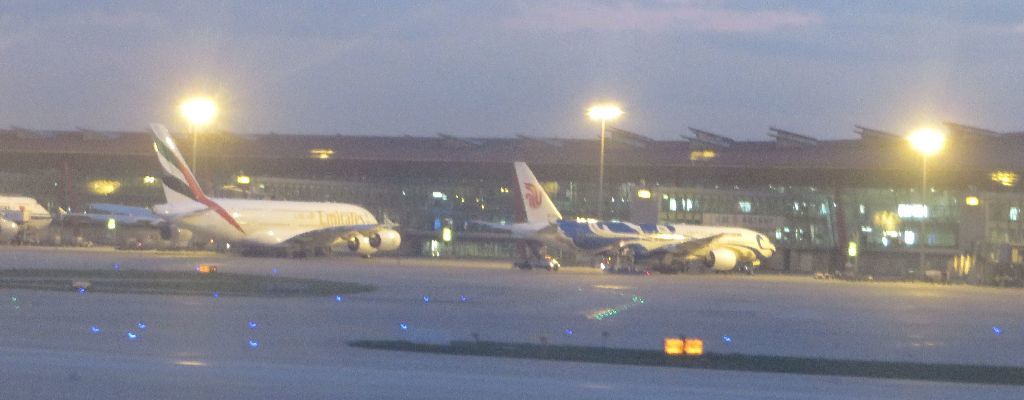
We taxi around Terminal 3D, which isolated by taxiways from Terminal 3C (domestic with landside access) and Terminal 3E (international).
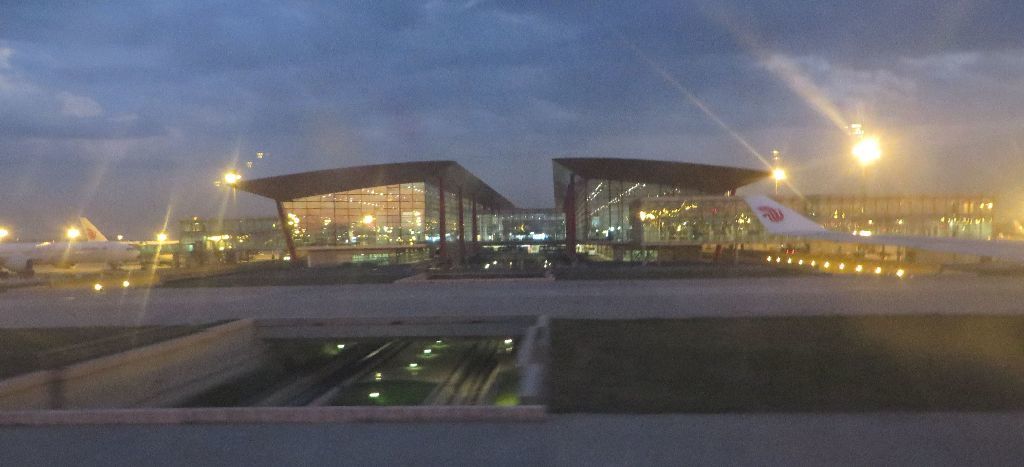
Arrival at the terminal. Some foreign aircraft were in the distance at Terminal 3E.
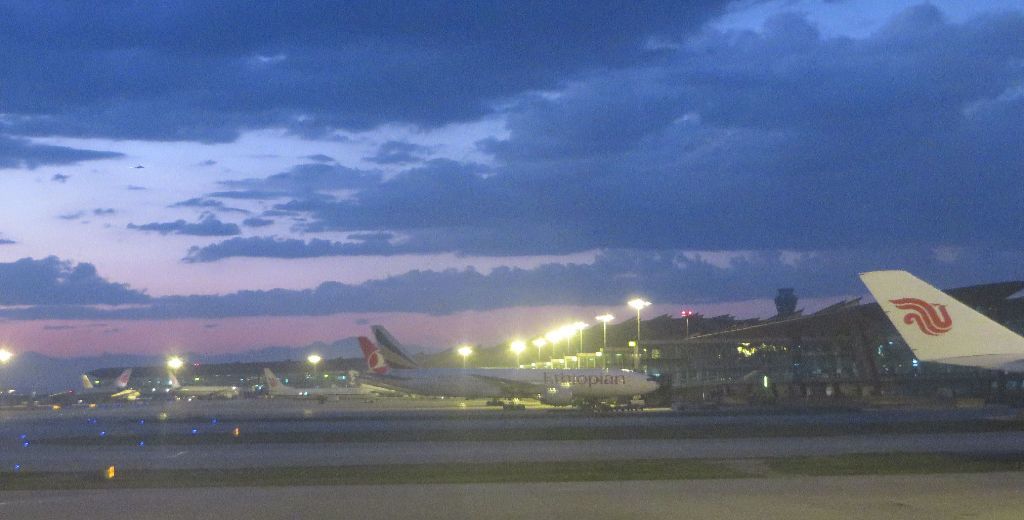
It was 20 :18 when I left my seat (since it was in the rear of the aircraft, I could take this opportunity to take a picture of the quasi empty cabin), i.e. ETA + 2h03’: the plane did not recover a single minute of delay during the flight.
Seen to the rear
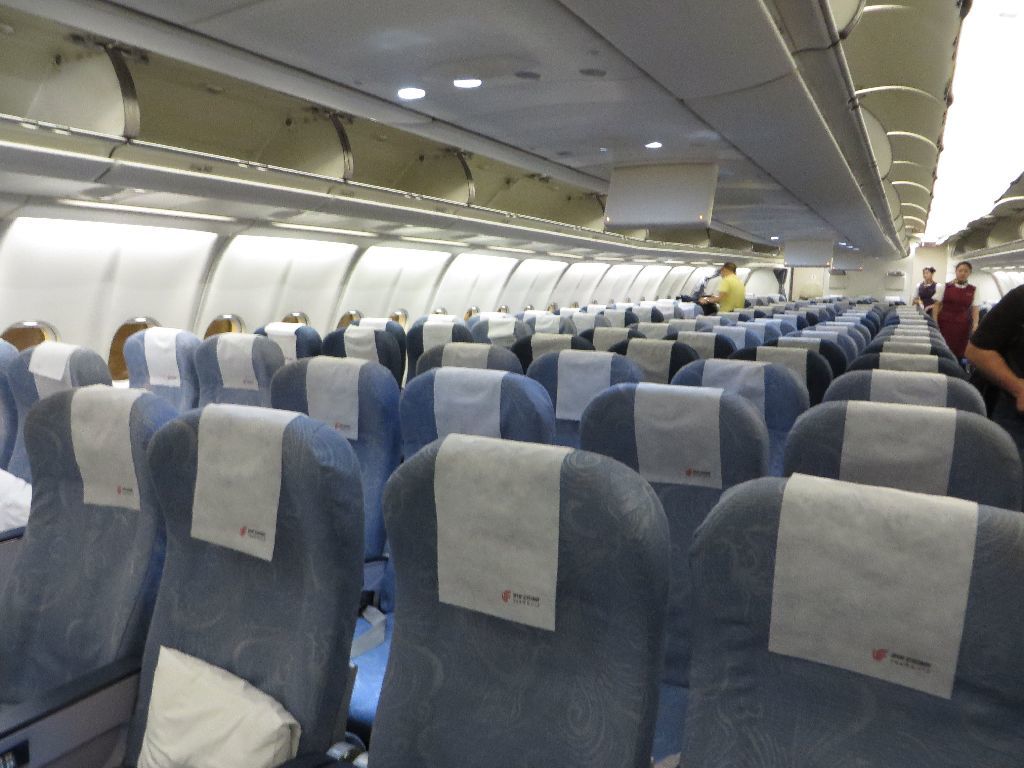
And to the front
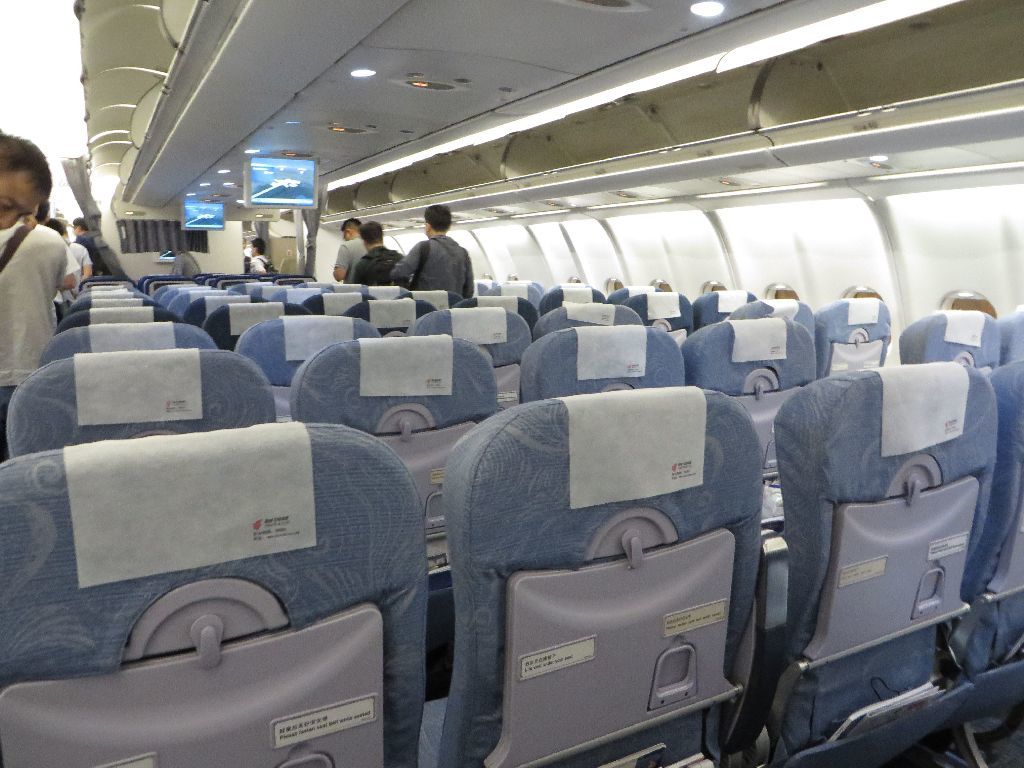
We were unlucky all the way on that flight, because the plane parked at Terminal 3D (which is the reason why we saw Terminal 3E before).
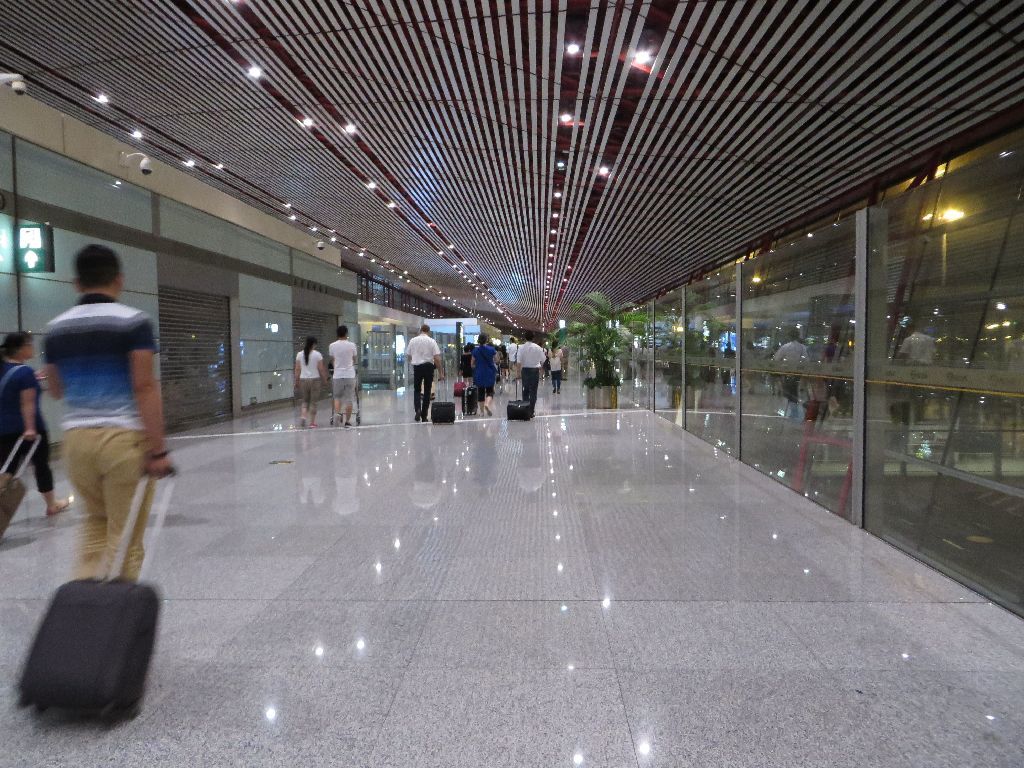
And since that terminal is isolated, arriving at EK-3D means a bus transfer to Terminal 3C in order to reach the landside access.
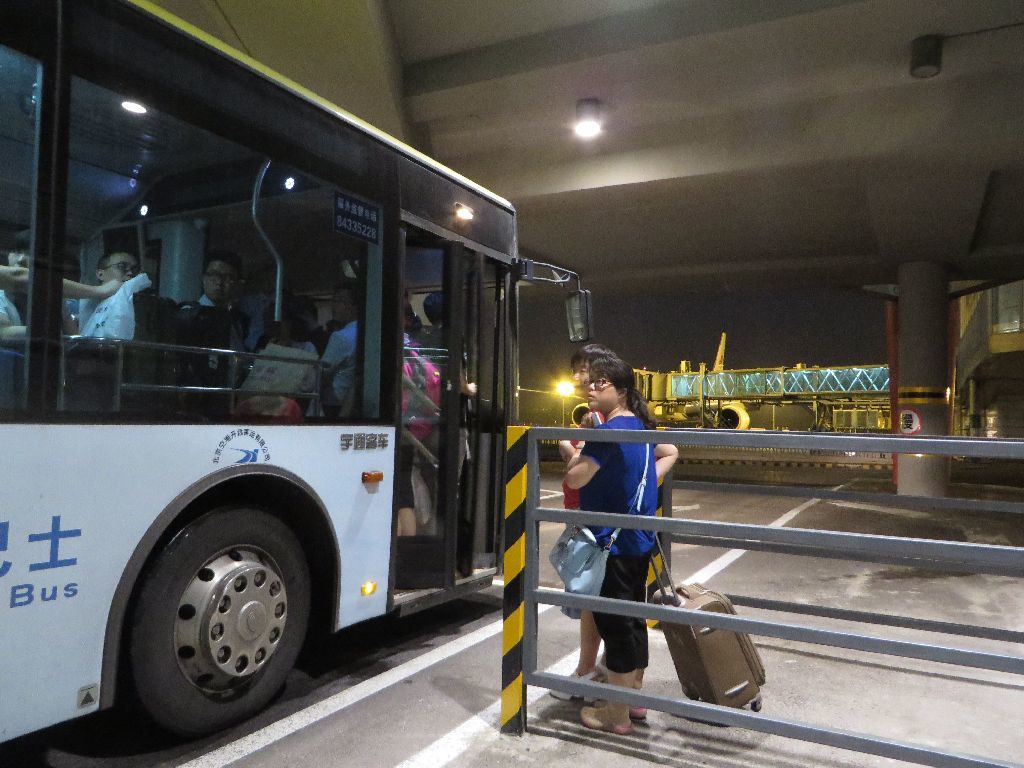
This short bus transfer seldom provides much plane spotting opportunities : a CA 777 in standard livery
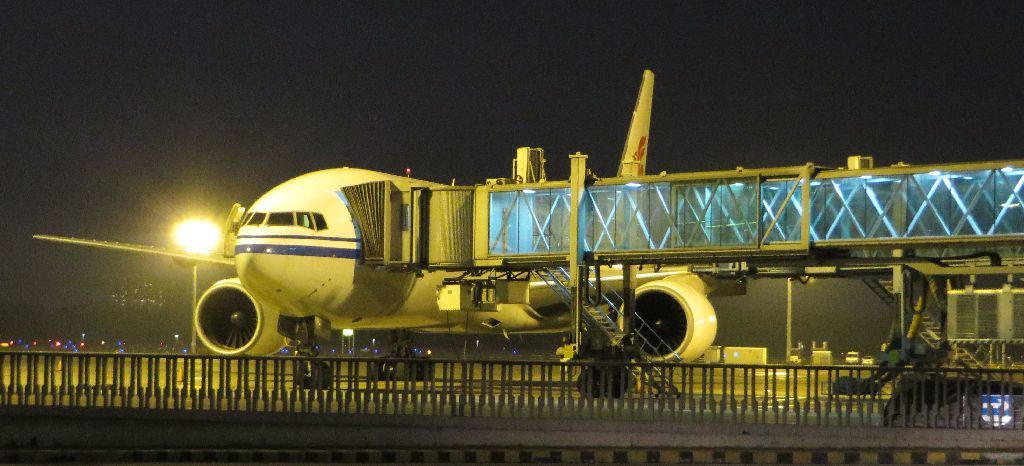
And this one in the lievery celebrating the 50th anniversary of the French-Chinese diplomatic relationships.
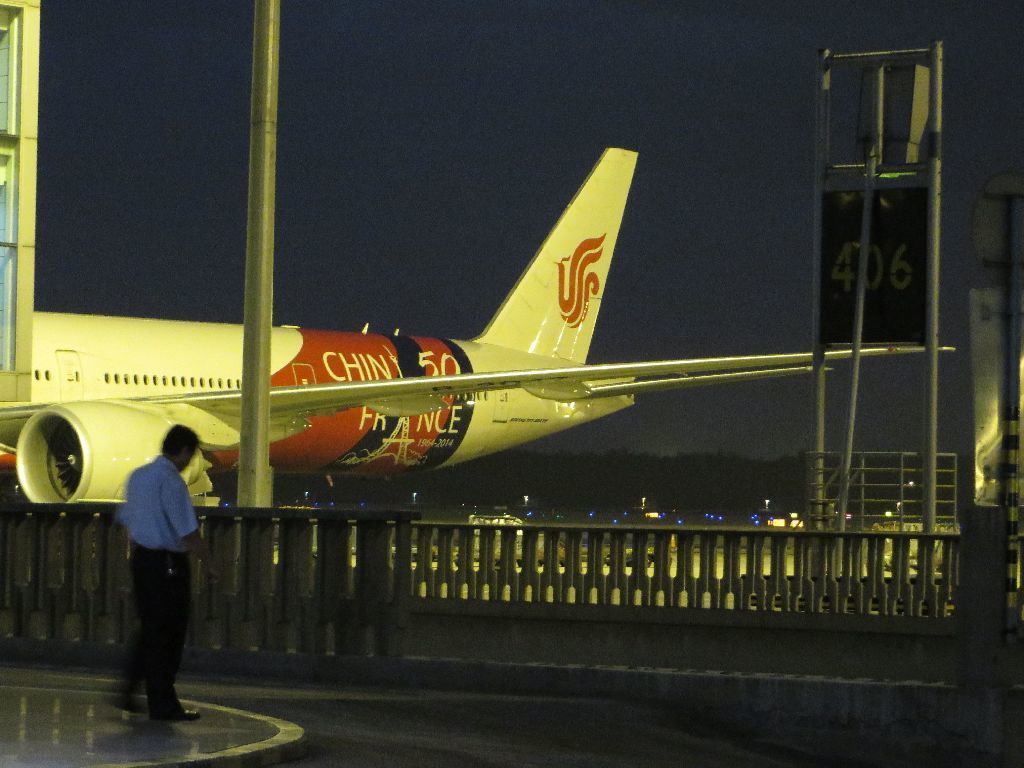
Our luggage arrived at ETA + 2h09'
There was no empty promise here: it really took only two minutes to get a taxi; I let you compare with the international airport of your favorite capital.
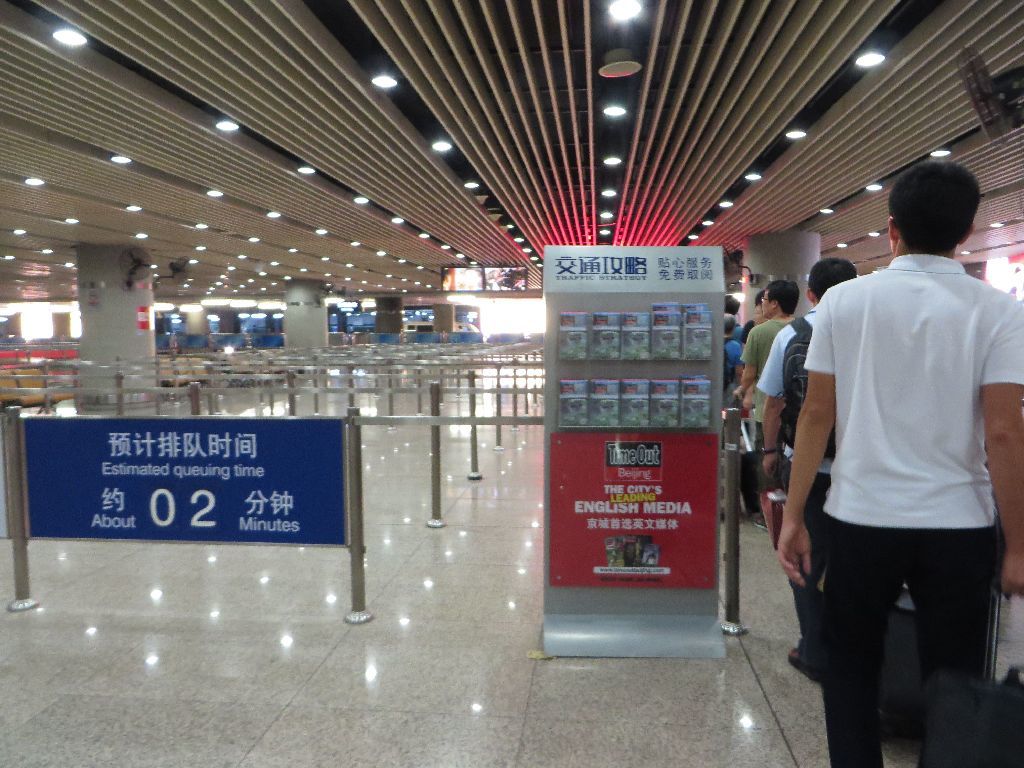
The report of this flight which had not been an unforgettable experience is now over, and I now
You had noticed that it was pitch dark at the arrival of that flight ; I used the pictures taken when returning to Beijing in the daylight a few days before. Our hotel was in “my” neighborhood in Beijing, I took the front seat in the taxi, leaving the rear seats for my Chinese colleague. There was no way I would let him guide the taxi driver, when I knew a faster and more picturesque route through the side streets which by-passed the traffic lights, the one way streets and the traffic jams around Dongzhimen.
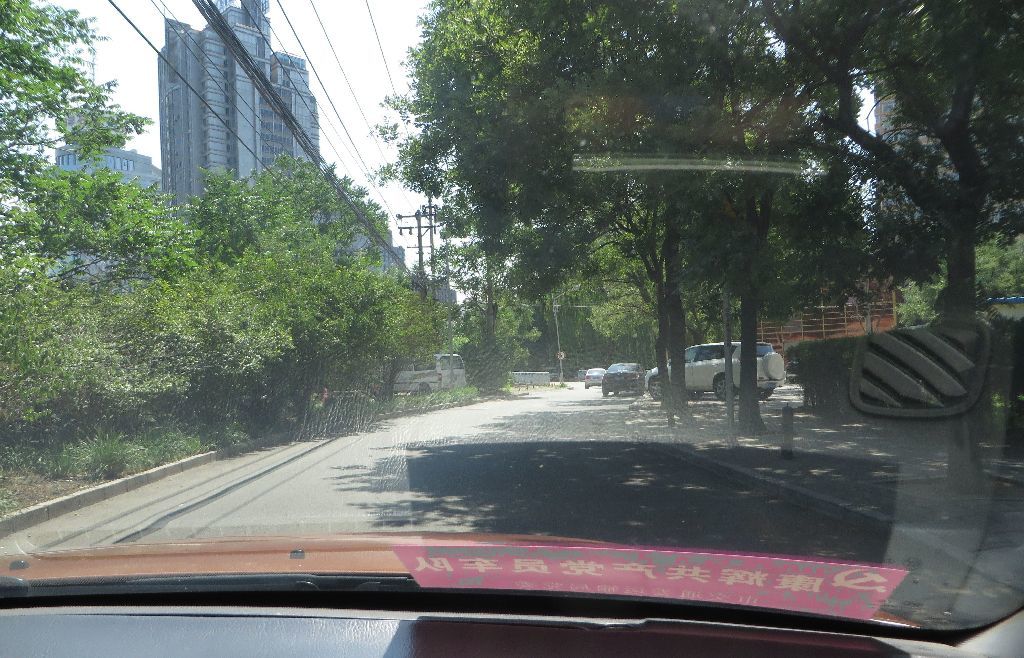
Beijing had not changed in that area, and I felt like I had left my former neighborhood the day.
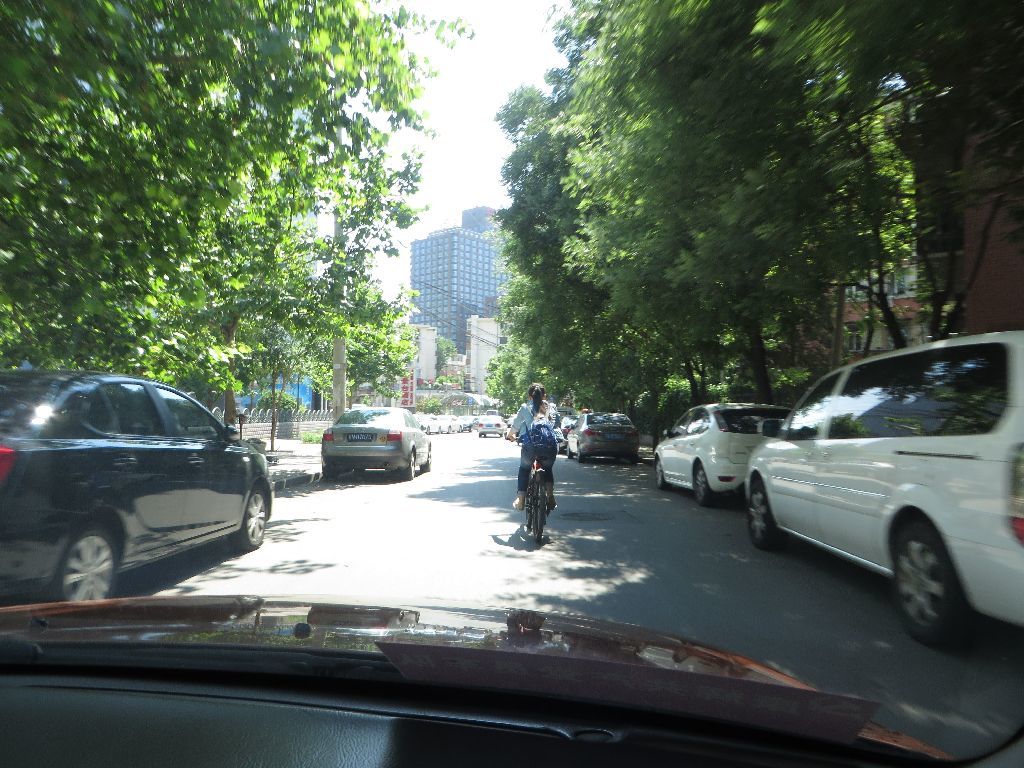
Did you notice the sticker on the windshield of the taxi ? This is the mirror image to see it correctly. No, contrary to what it indicated, I was not part of a convoy of members of the Communist Party.

The day after, I went in “my” neighborhood to a shopping mall that tourists do not patronize: the “Clothing and small hardware market east of the ring road”, according to its sign.
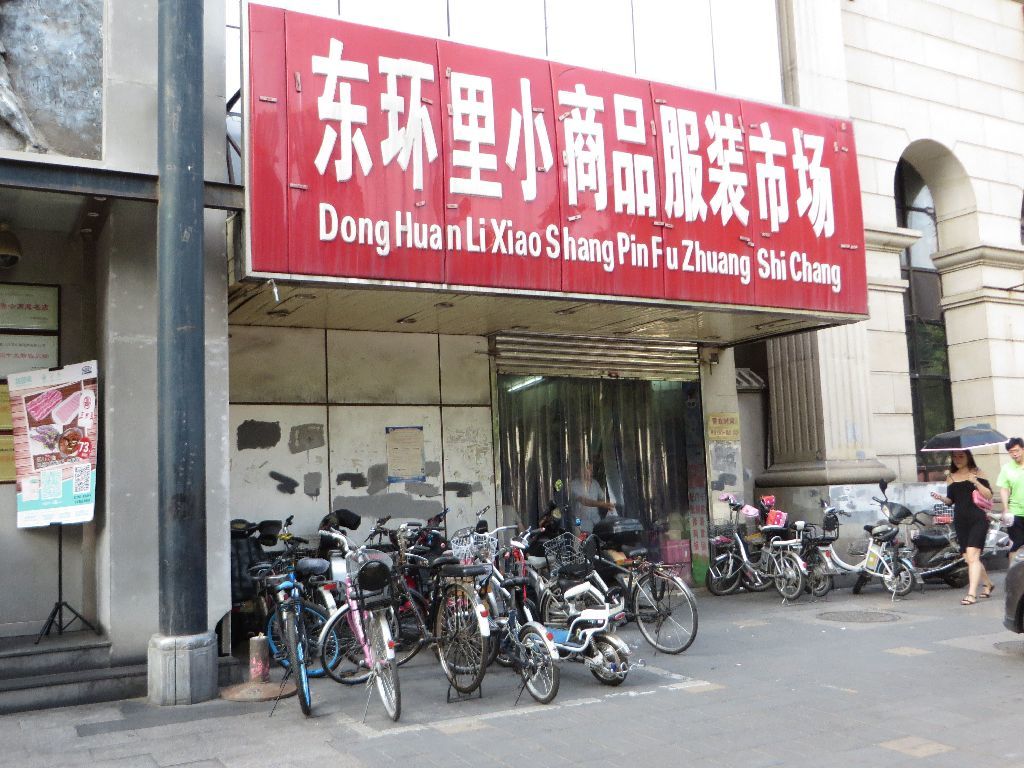
I went down the gentle slope to Level -1, where there is an accumulation of tiny shops. I once bought there a pair of shoes at a Chinese price… with a Chinese quality.
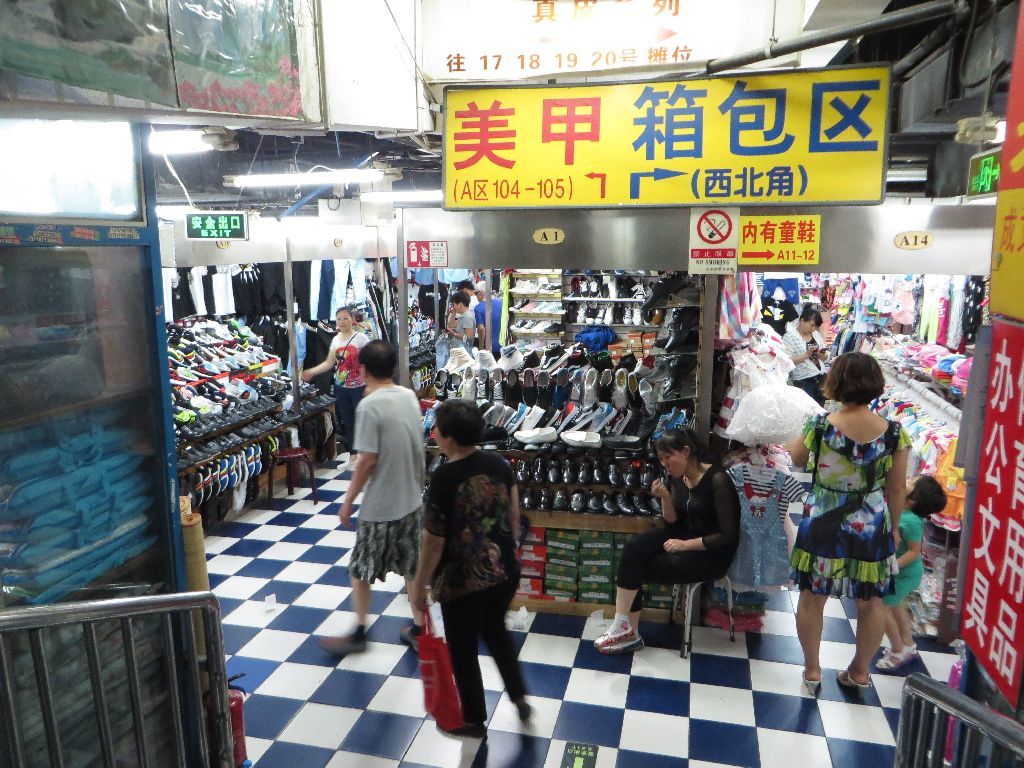
In the hardware shops area
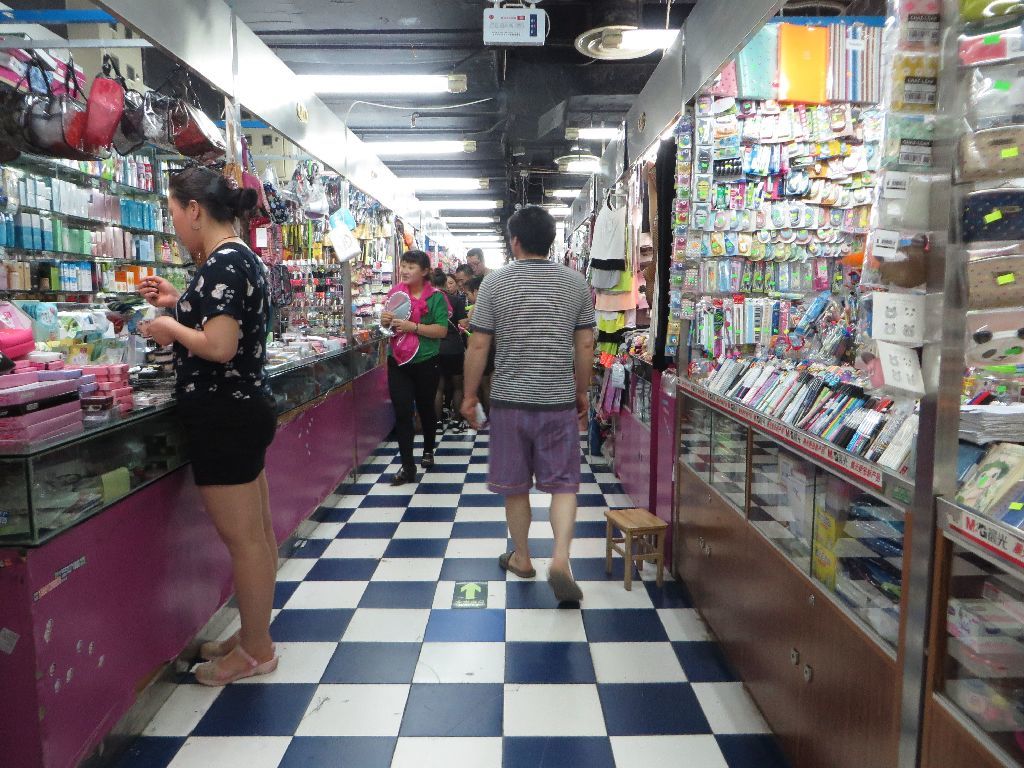
… I bought for ten yuan each Type I and Type G plug converters, because my trip in China was going to end with a CAN-KUL flight .
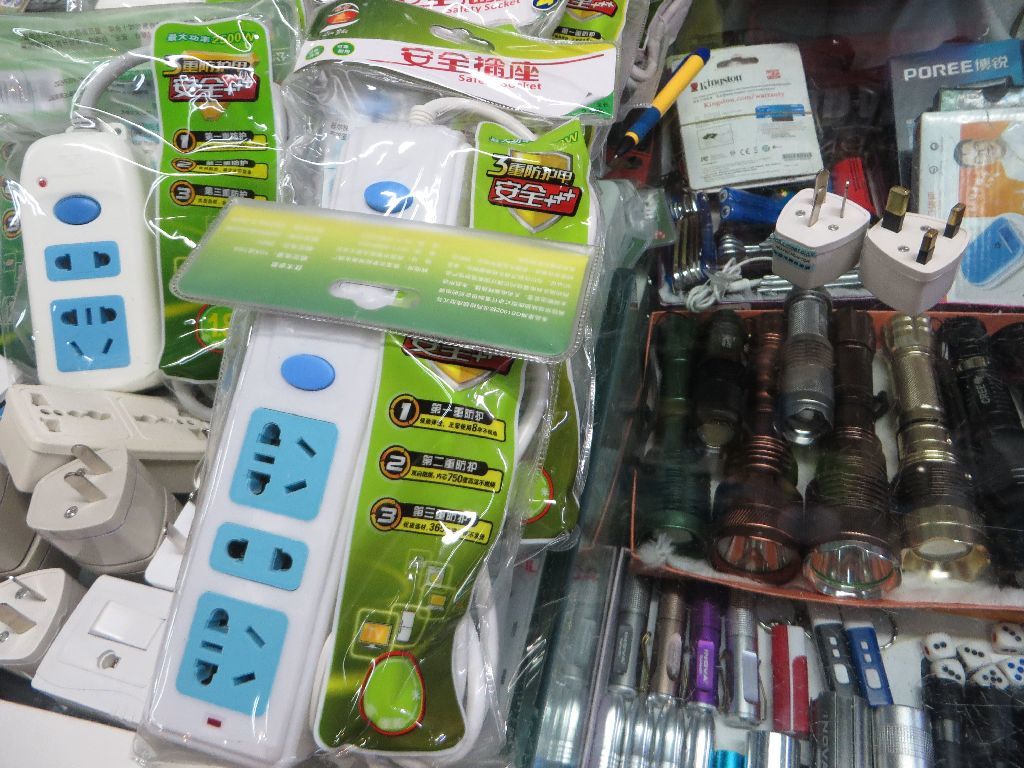
The advantage of that underground miniature shopping mall was that it had nearly all I could need for my daily life, that nearly all items were visible and that there was no problem getting the attention and good will of the (often sole) staff of any shop. It was a good linguistic exercise too: that time, in that shop having stationery for office and school use (that is written in white on red characters), I learned that a business card holder is called a 名片夹, and they had one which suited my need.
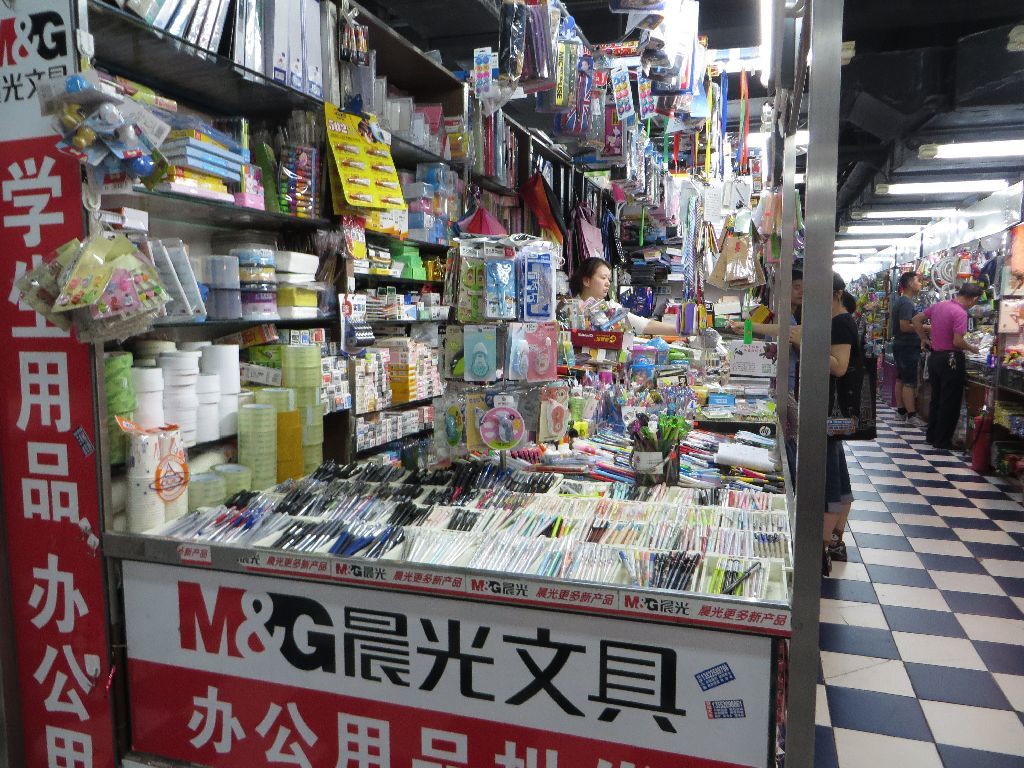
How about lunch? Why not go to this Lanzhou noodles restaurant? Lanzhou, in case you do not already know it, is the capital of Gansu province, far west of Beijing, on the Silk Road.
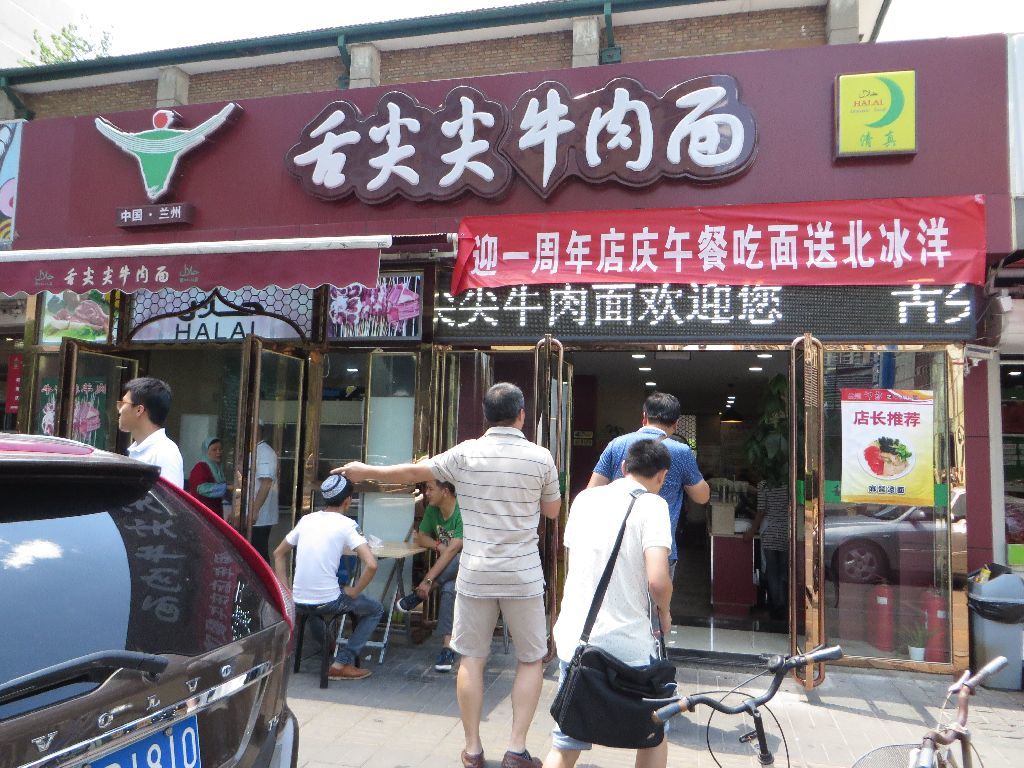
A heritage of this long gone times of caravans is a strong Muslim minority in that province. I did not observe Ramadan which happened to be at that time of the year, but I ate halal that day.
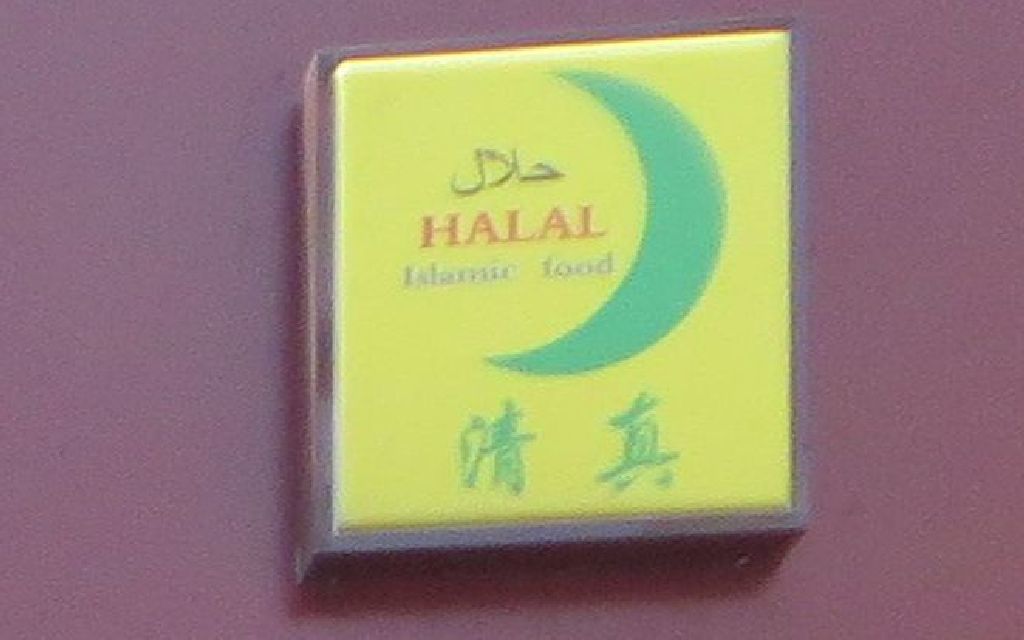
All servers wore an Islamic veil, unusual in Beijing where the Chinese Muslims are few.
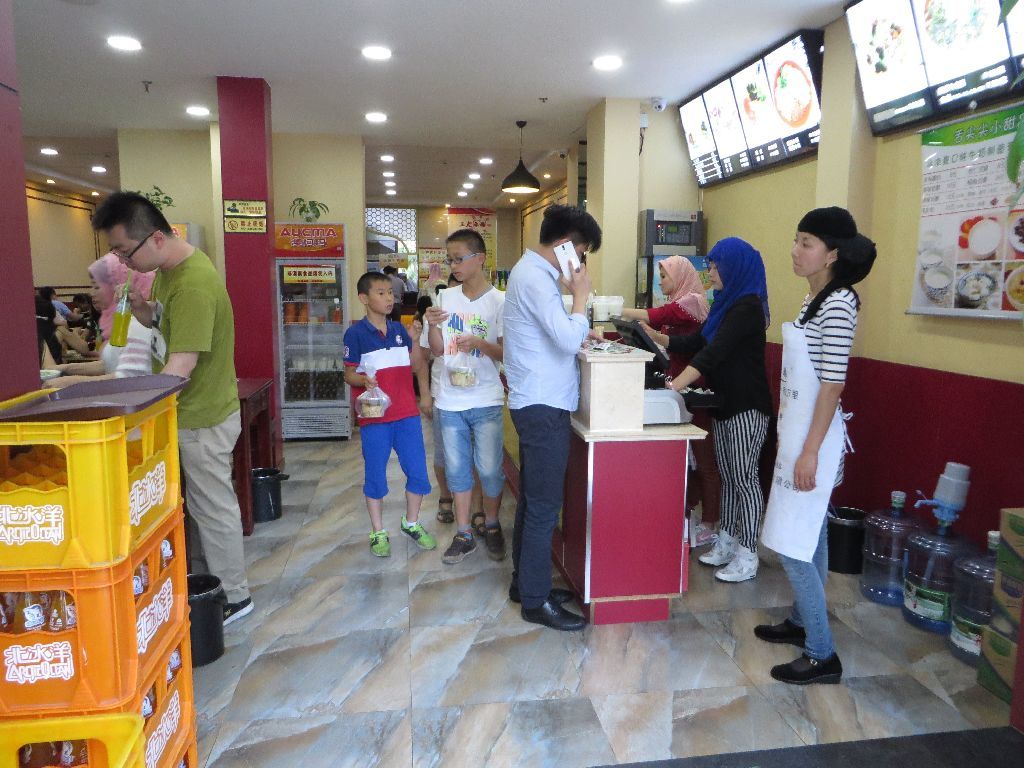
The inside of the restaurant : the dish was fetched in the rear, after having paid for it in the entrance.
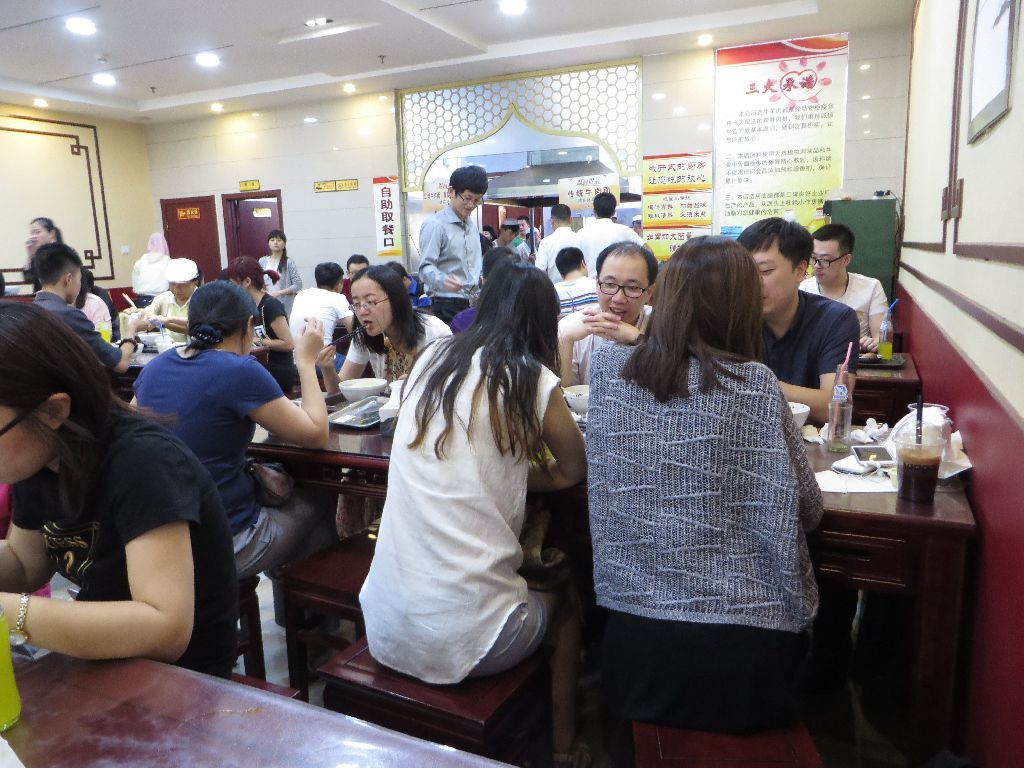
Chinese style noodles are always served in a large bowl of very hot broth.
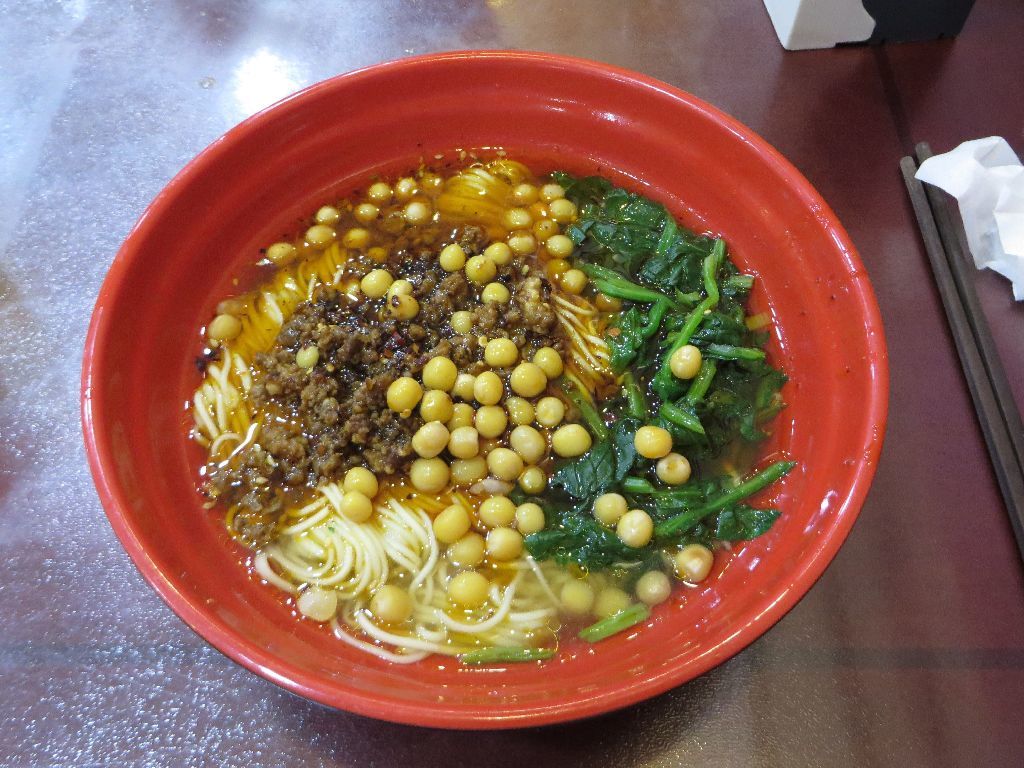
It is hot in summer, and in order to attract customers, this restaurant offered a soft drink to each.
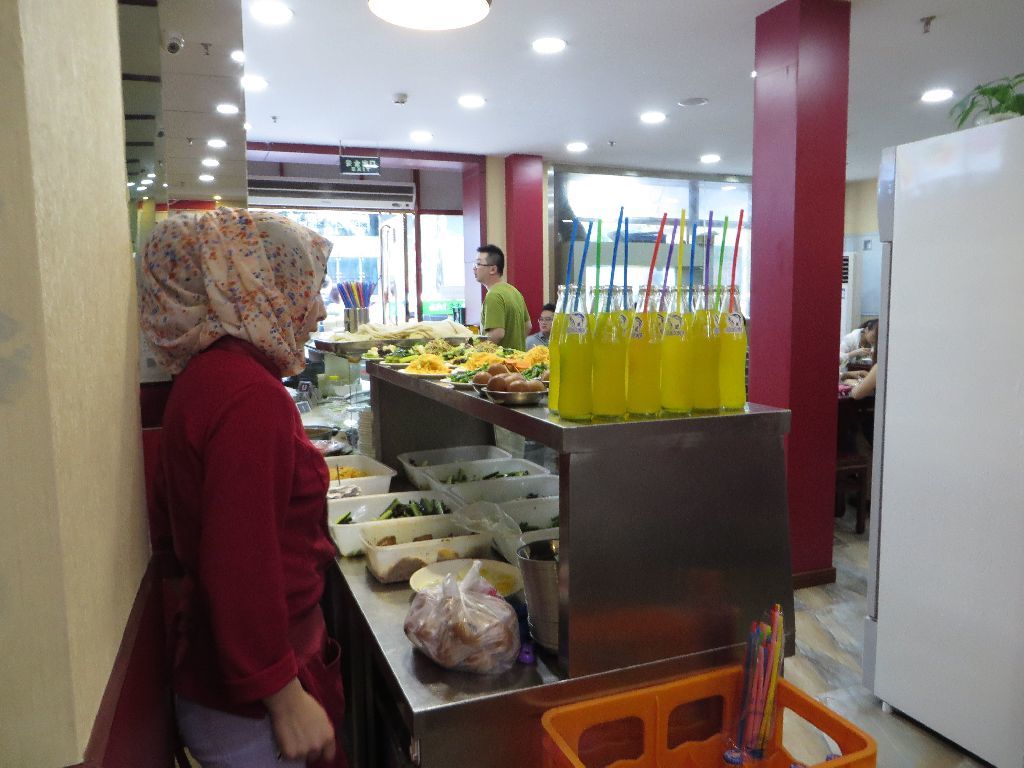
Granted, Lanzhou noodles are very local in a tourist bonus on Beijing. The quintessential Beijing dish is the Beijing duck, called 烤鸭
[kǎoyā](roasted duck) in Chinese, like on the sign overhead.
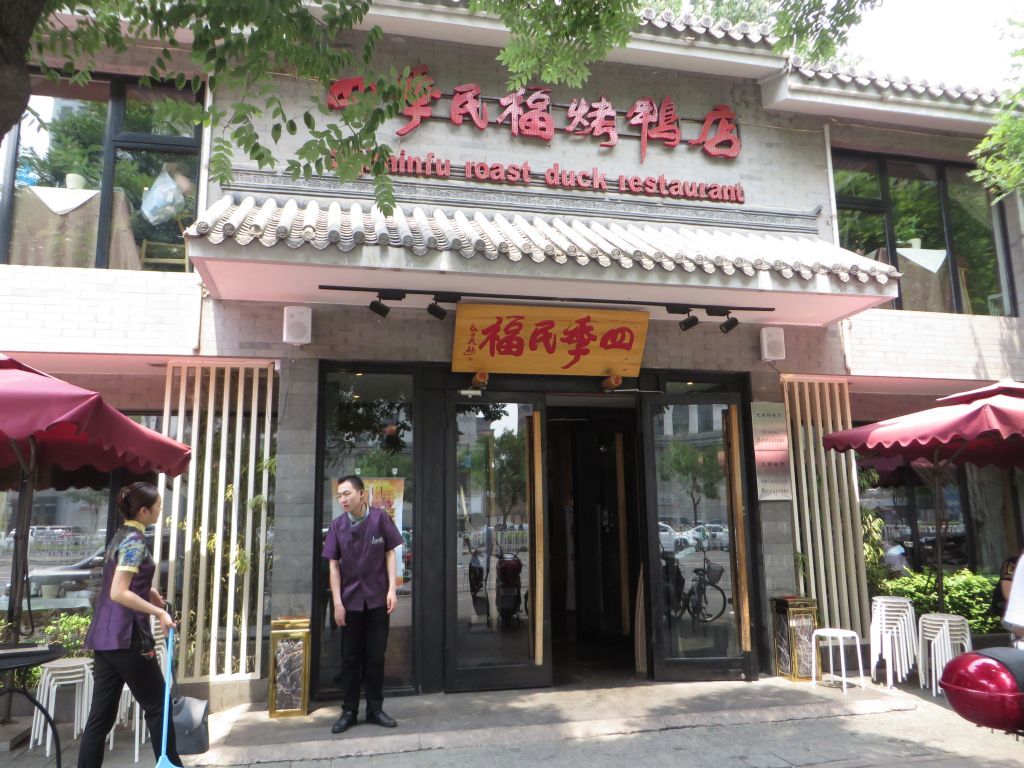
After starters, there only to wait for the duck to be brought,
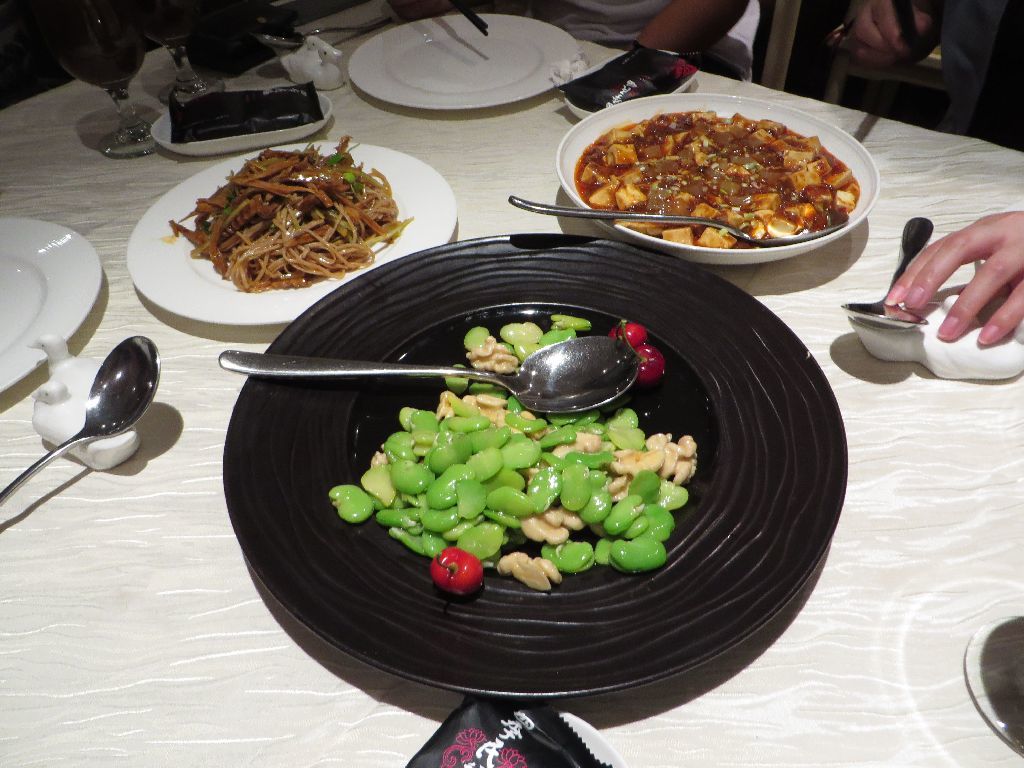
… a cook come to cut the duck in front of you
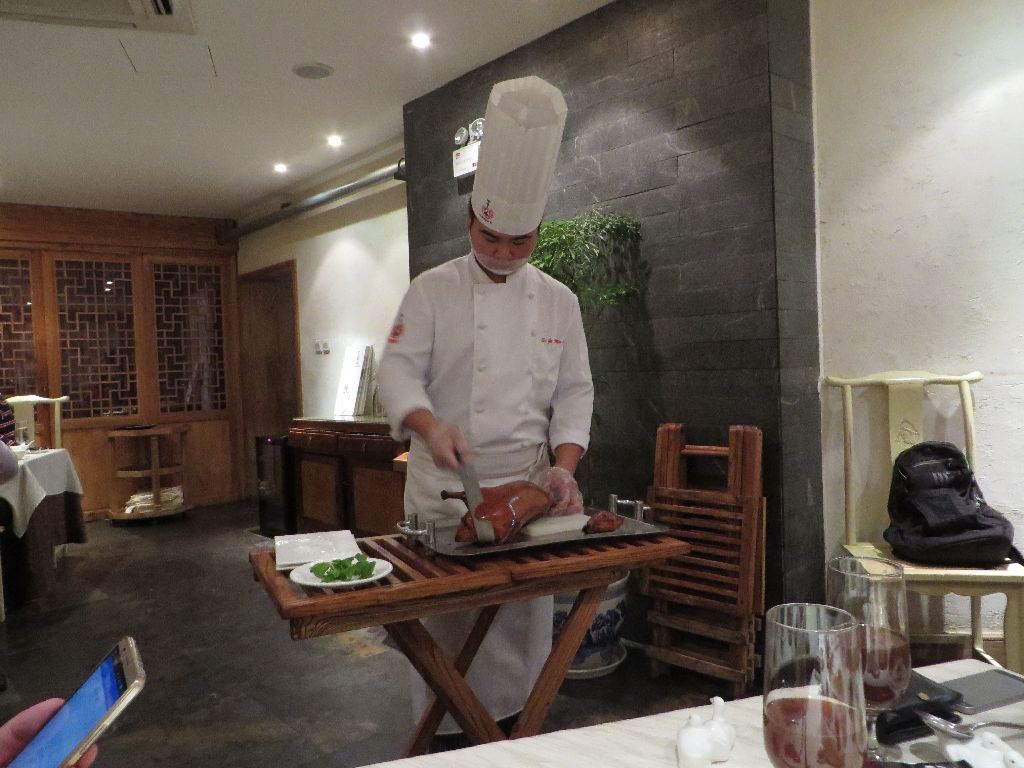
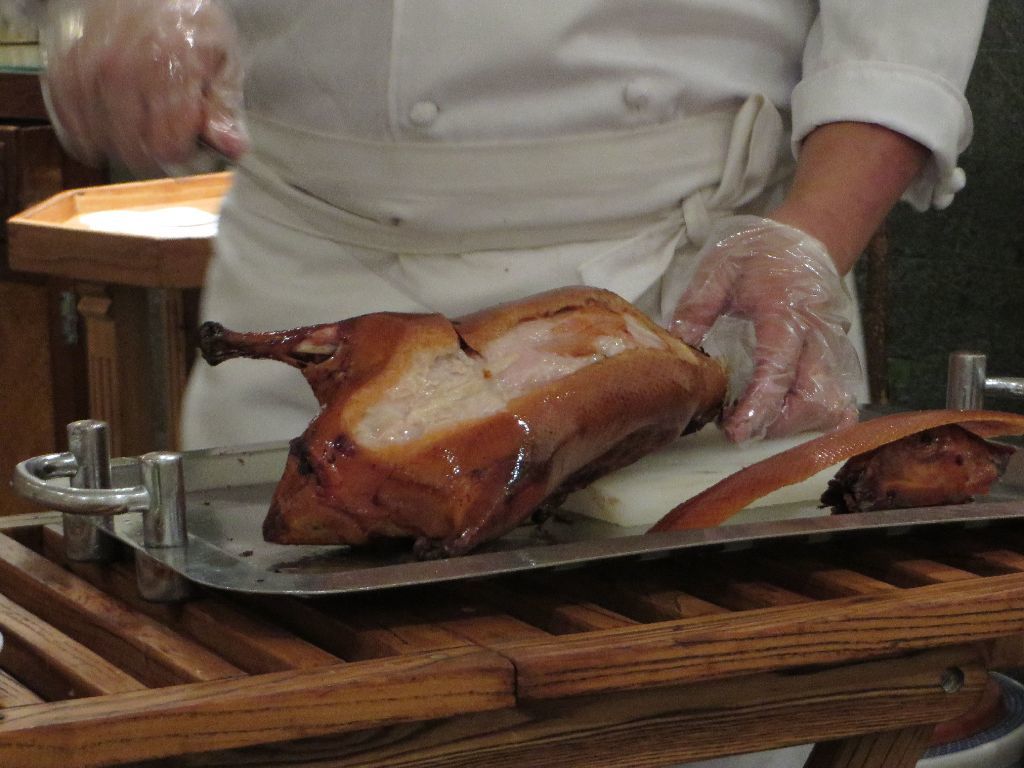
This was the flesh cut in thin slices
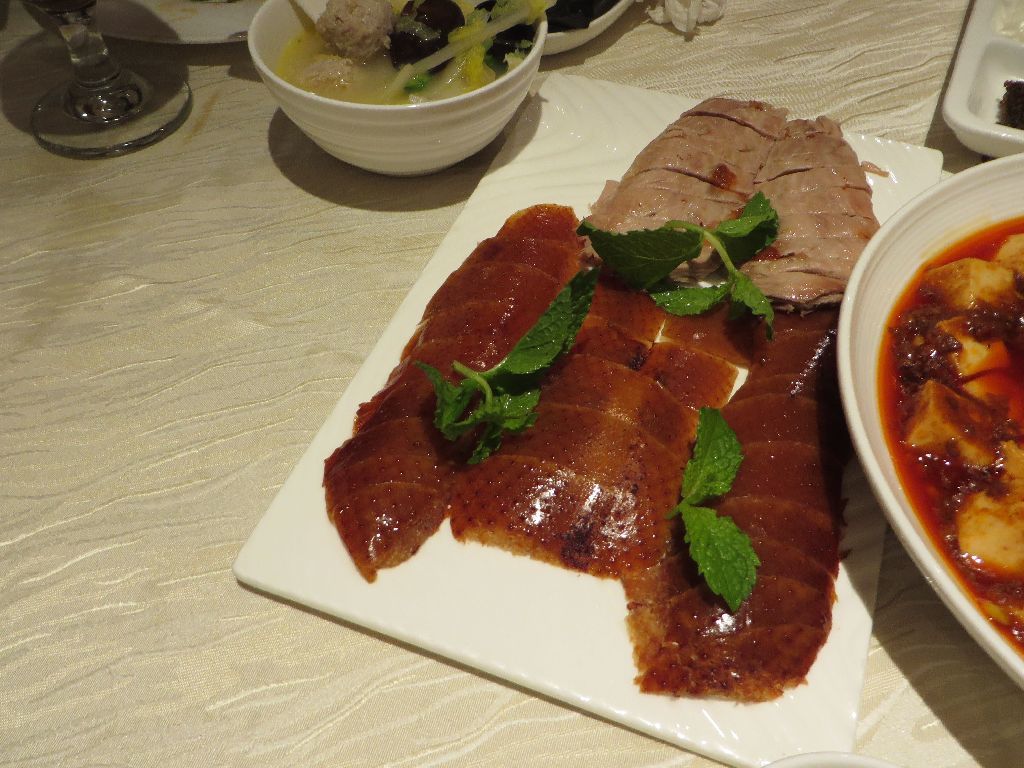
Duck is eaten with vegetables and a thick brown sauce
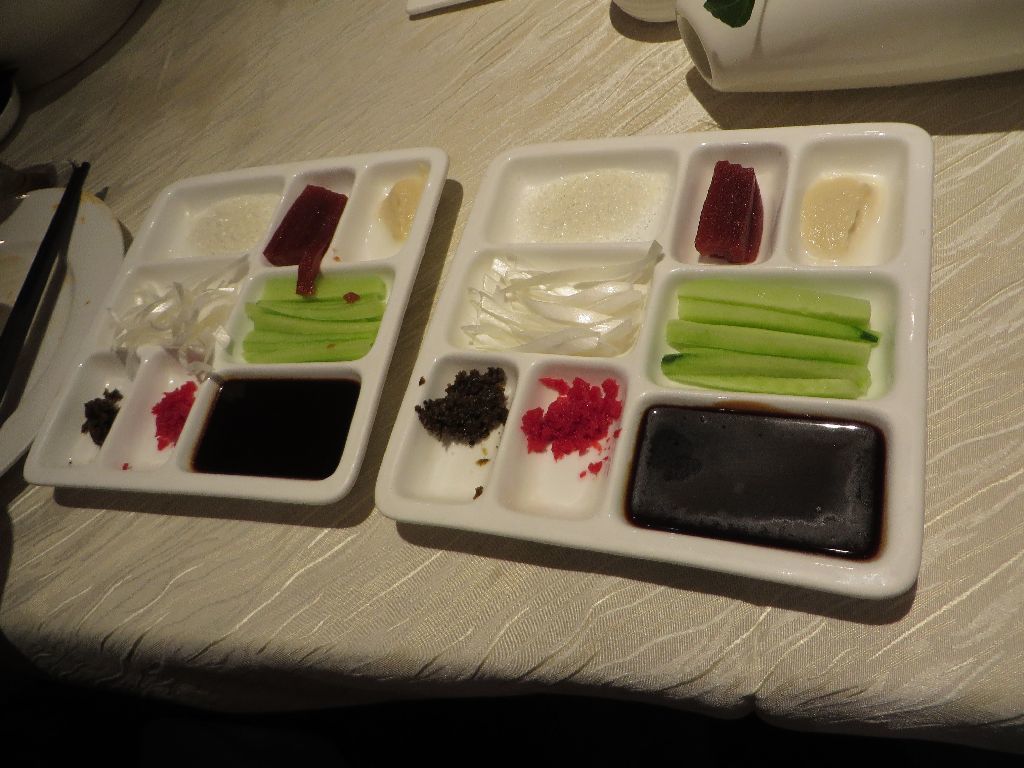
… in crepes which can be difficult to separate because they are so thin
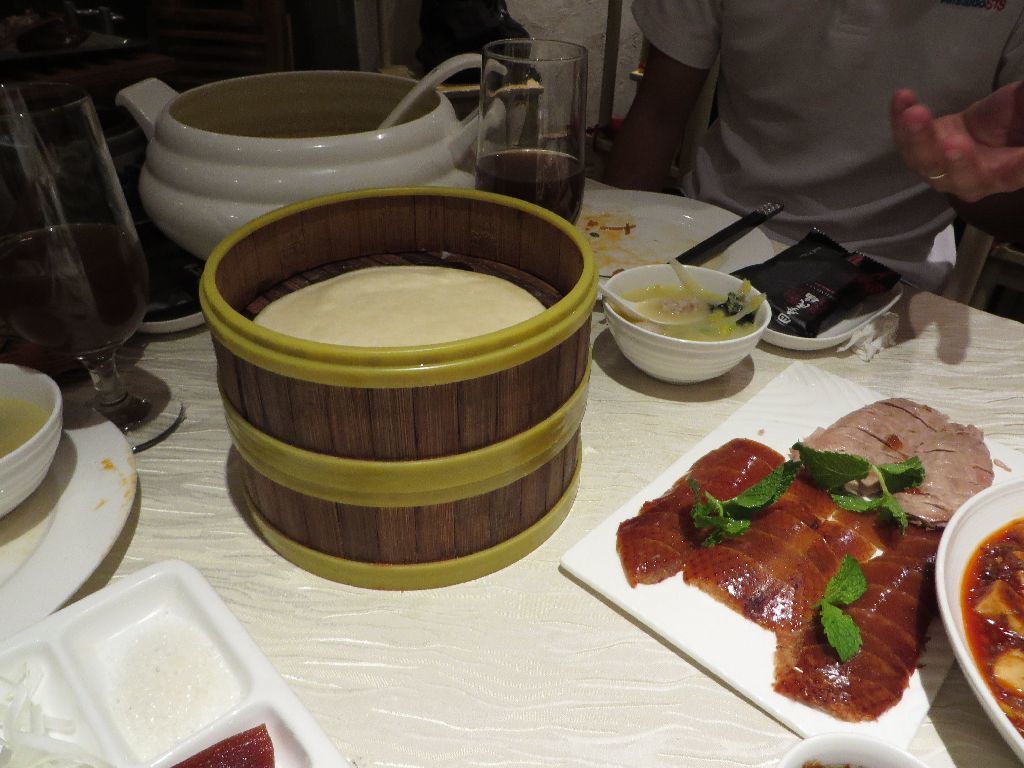
This is a rare case of Chinese food which is eaten with your hands, with the crepe in the open palm before it is folded and eaten in one or two bites. Be careful not to overload the crepe!
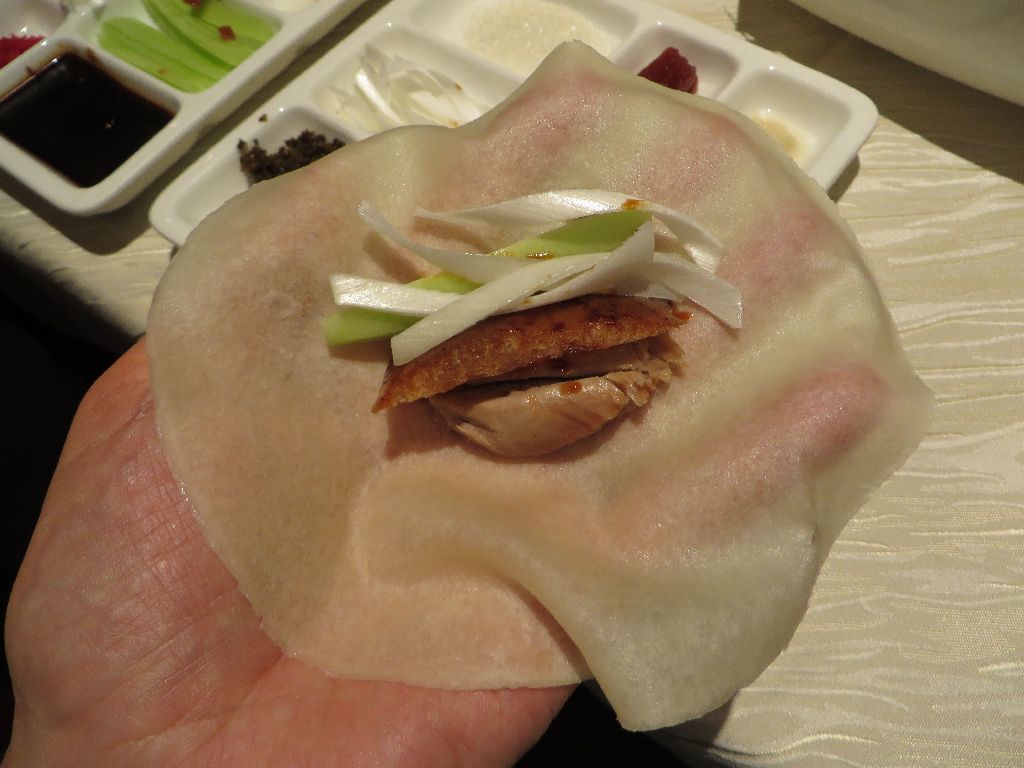
These breads are an unusual variant : you are supposed to carefully separate the two halves
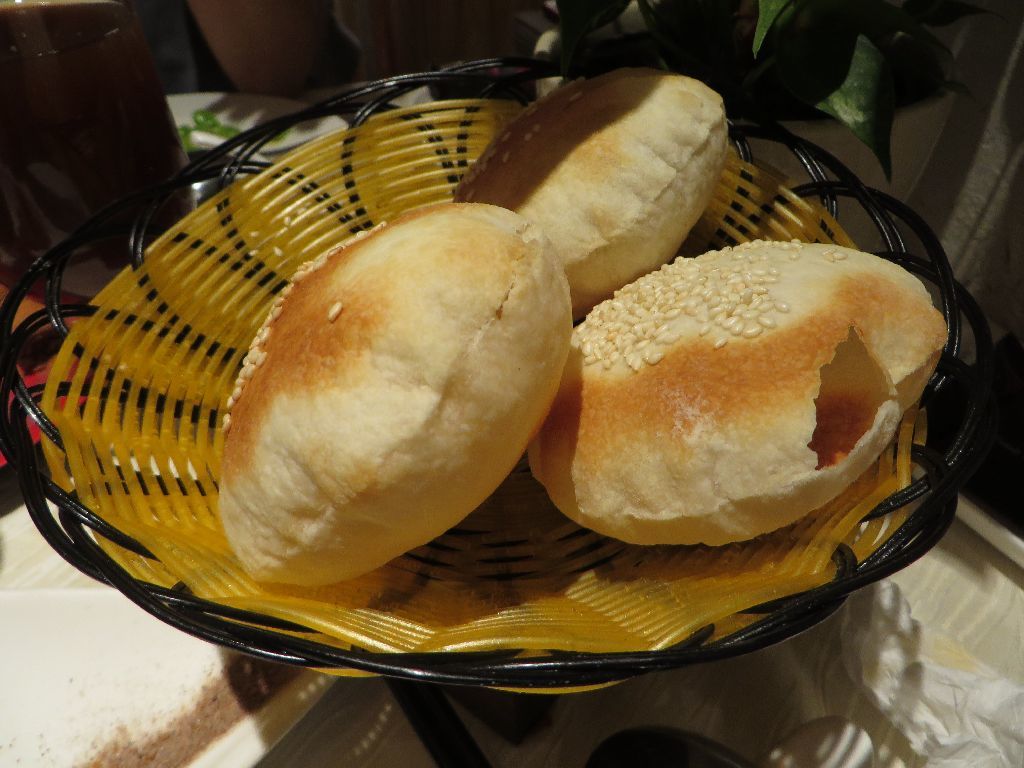
… ans then fill them with the same ingredients
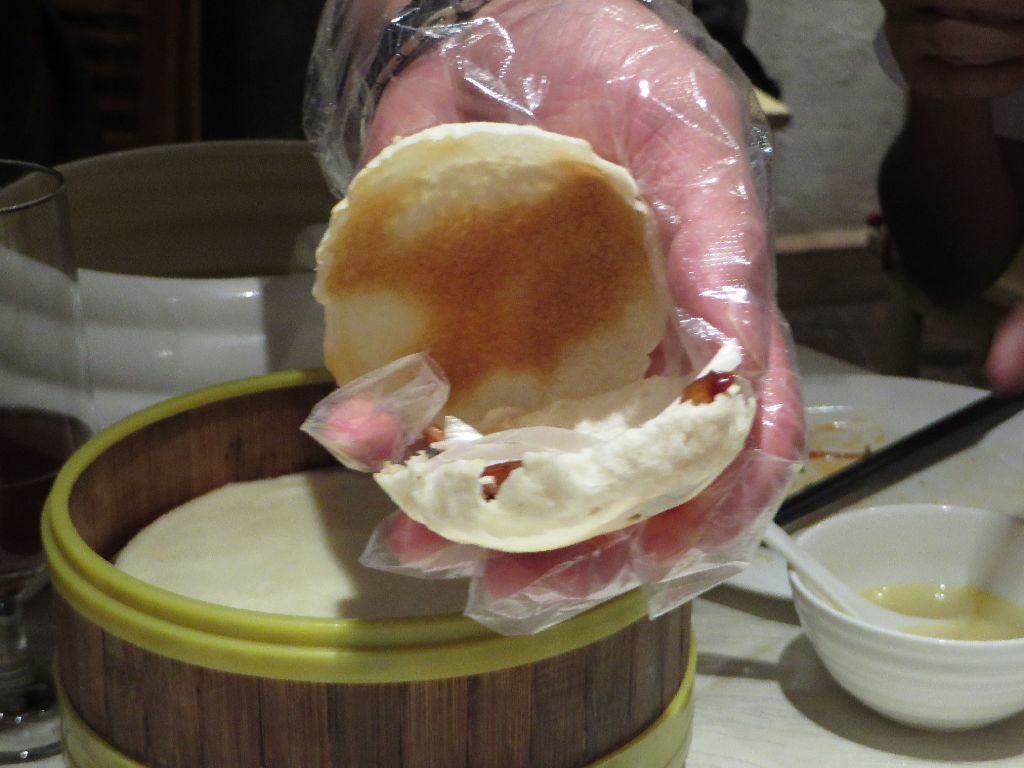
Then came a soup, in which the remainder of the duck had cooked.
Thanks for reading me all the way to here, and enjoy your meal !
